July 21, 2019
Martha O'Kennon
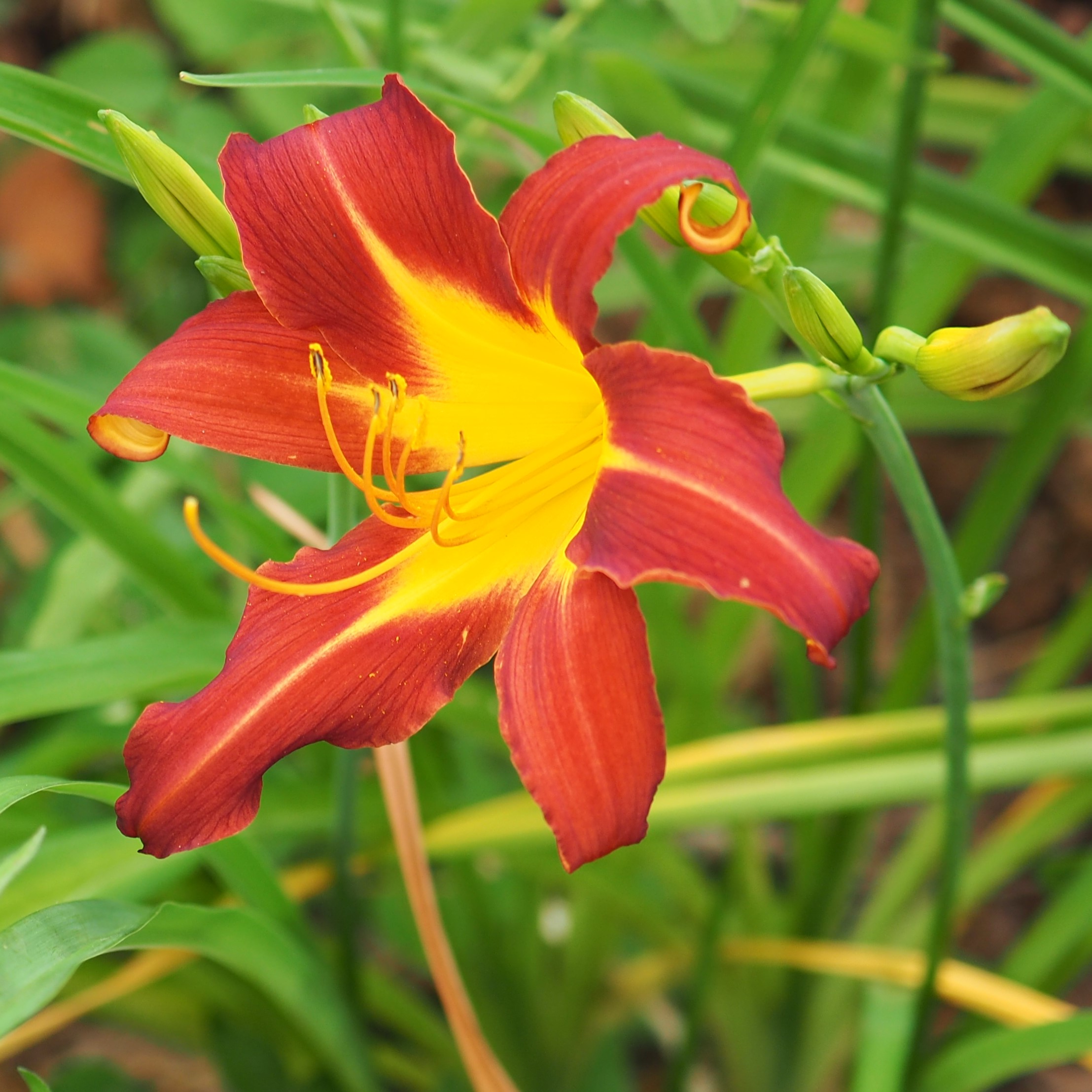
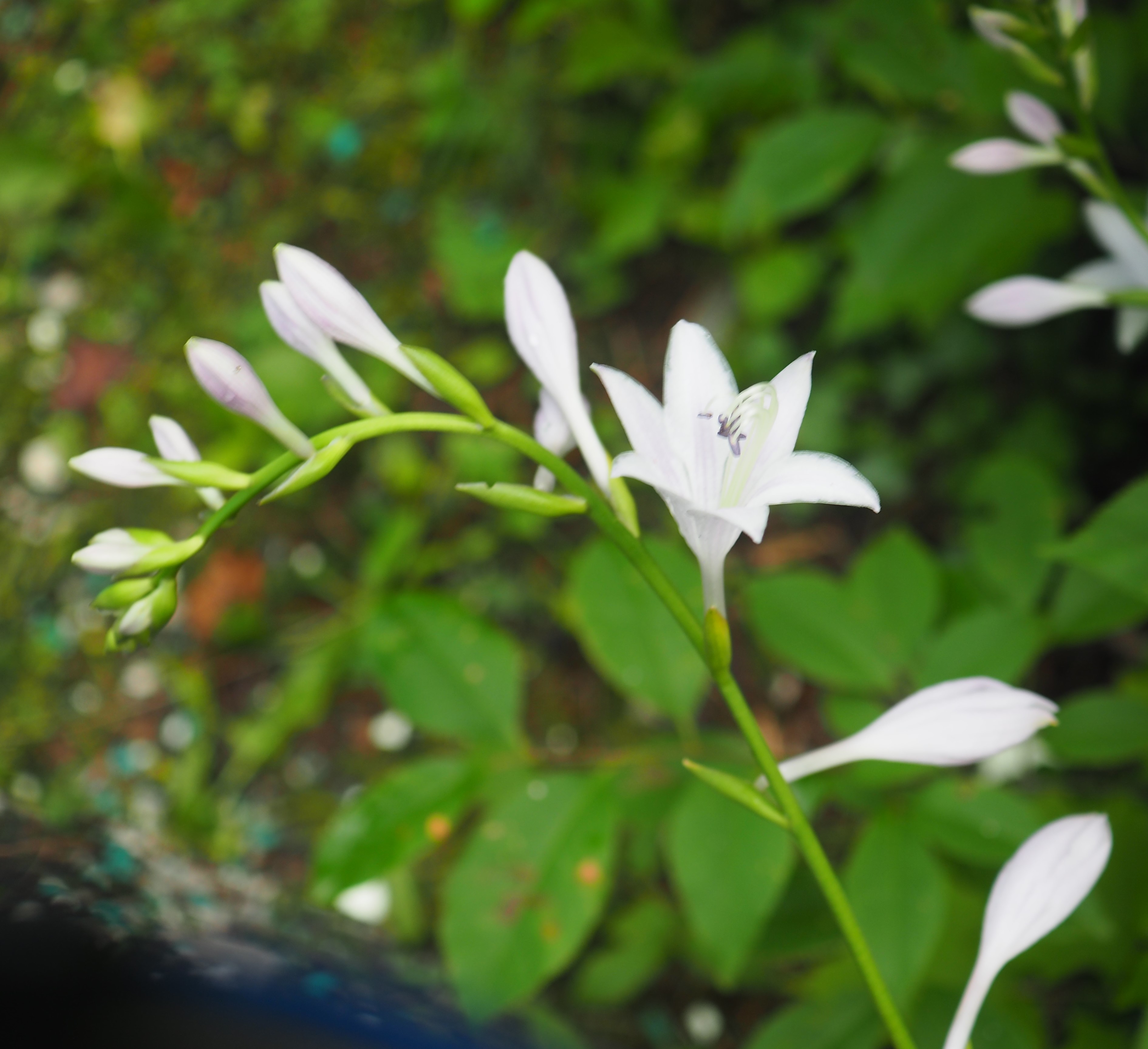
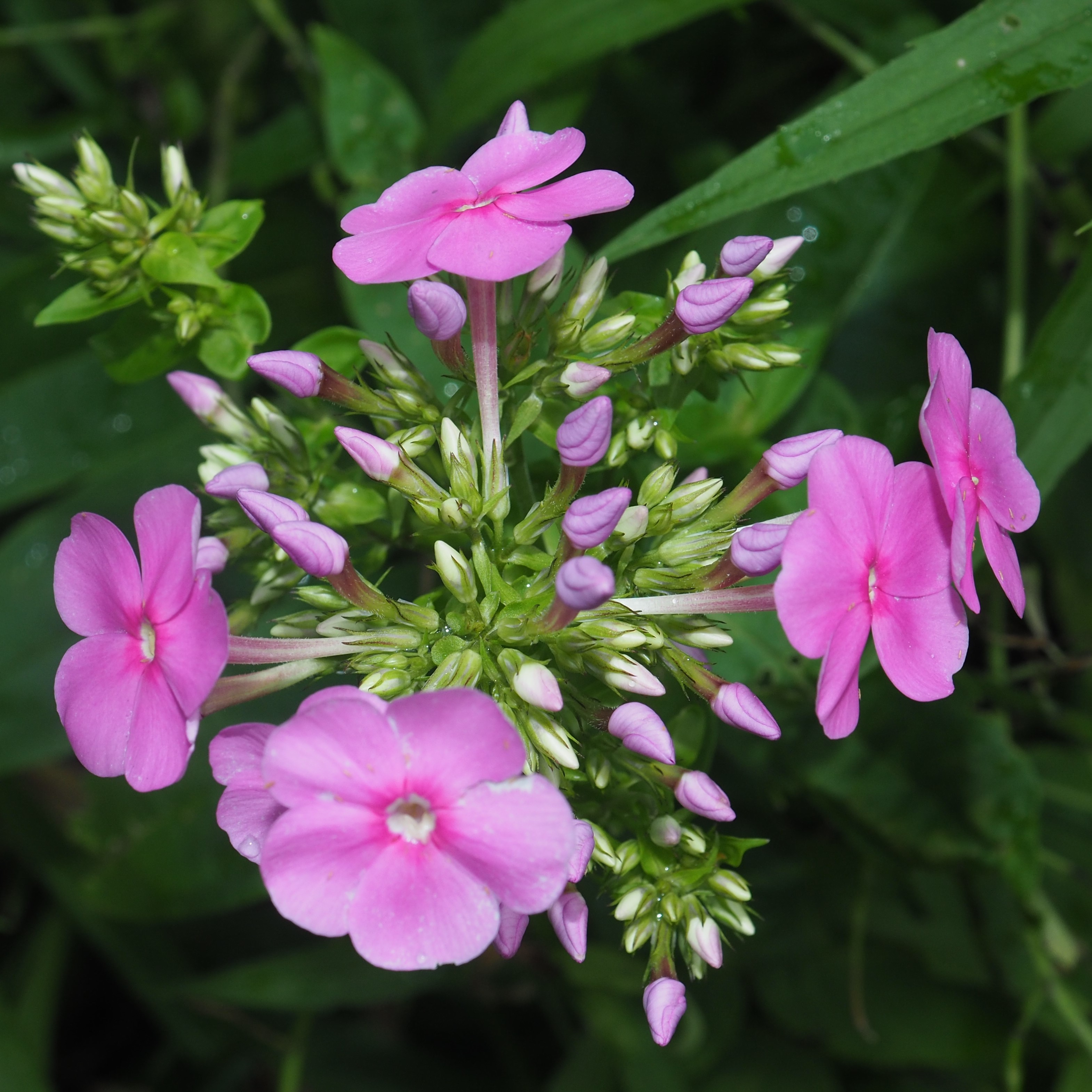
This weekend the midwest is in the grip of a heat wave. Walking outside is a challenge, but I still try to spend a few minutes a couple of times a day as I hunt for creatures that fight for their own lives. Sometimes I'll get a few minutes of light rain but not enough to cool down the day. Still there are flowers that seem to burst their bonds. Here is a brilliant red daylily left to me when the Omahans moved from Albion. Every year it makes me remember them. The hostas are poking out their flower spikes. I find the white ones (and most of mine are white) particularly inspiring. And now a hint of fall coming: the pink phlox are just starting.
Remember that there is information in the name of the file for each image. You can see it by mousing over the image - look at the lower left of the screen. Or you can click on the image to get to the (usually) larger image. Then the info is displayed in the address line above. Sometimes the second click will actually display a different view of the original image.
Not too much to chat about when it comes to ants. Here scuttling around the ground is an Eastern Black Carpenter Ant. Second is another in the Carpenter group with its red highlights. And finally the Myrmicine Ants (the ones of genus Myrmica) are seen now on plants much farther than where they first begain to show up. This third ant is probably a Punctured Ant. The fourth picture shows ants fighting over the remains of a harvestman.
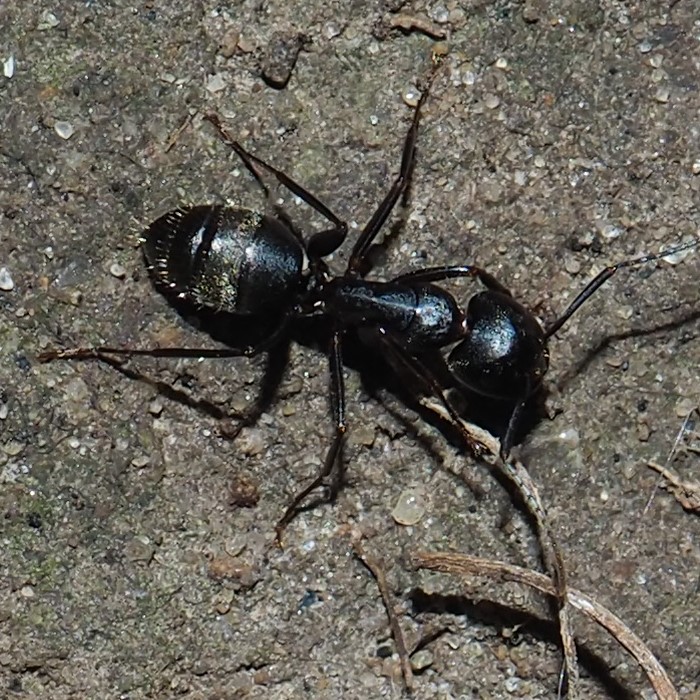
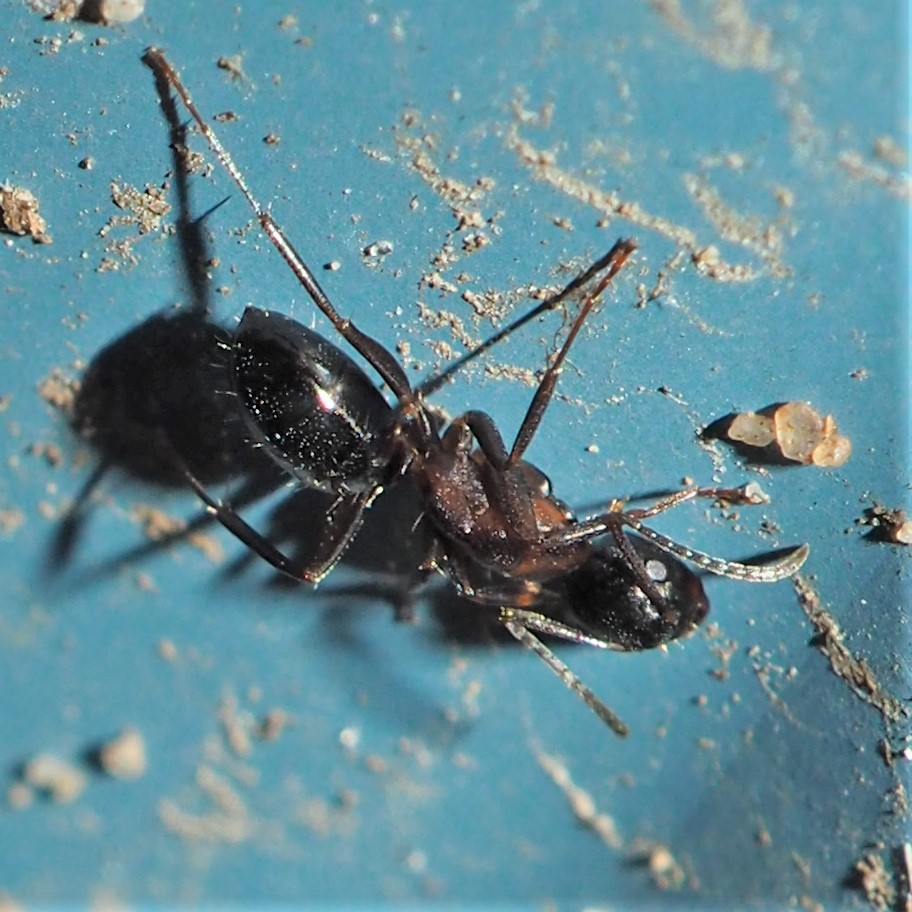
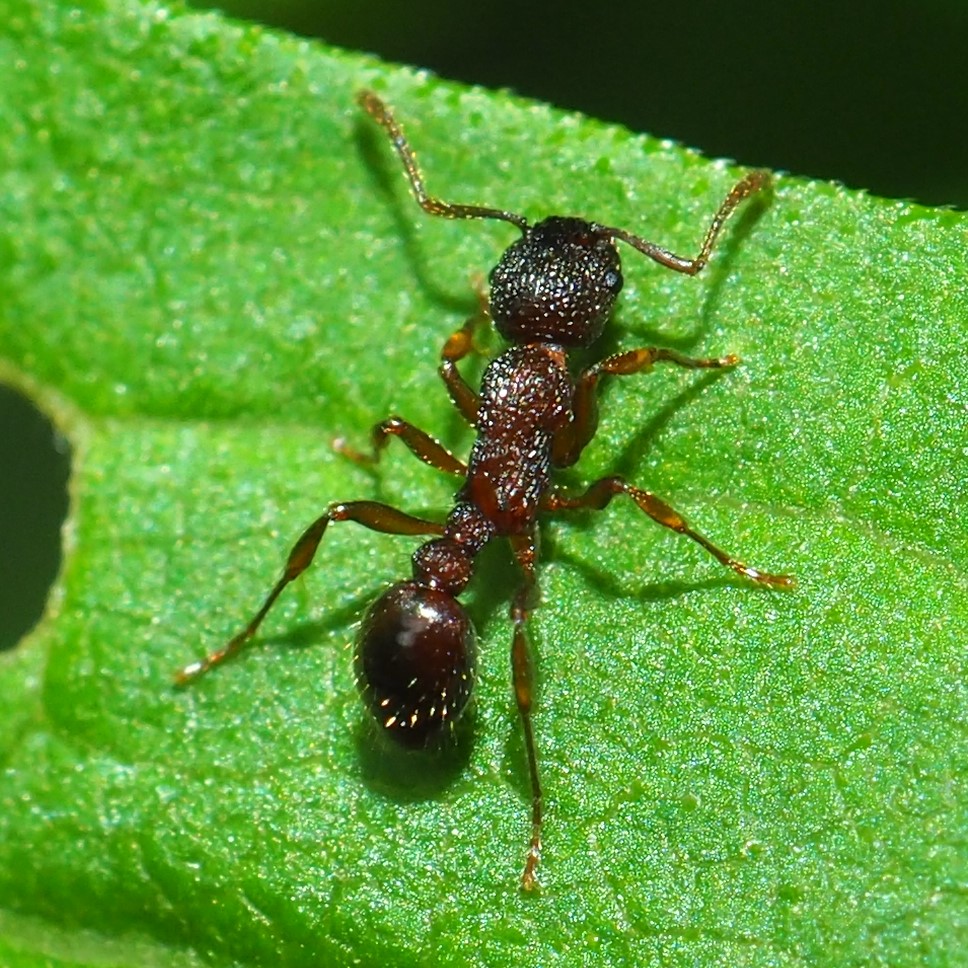
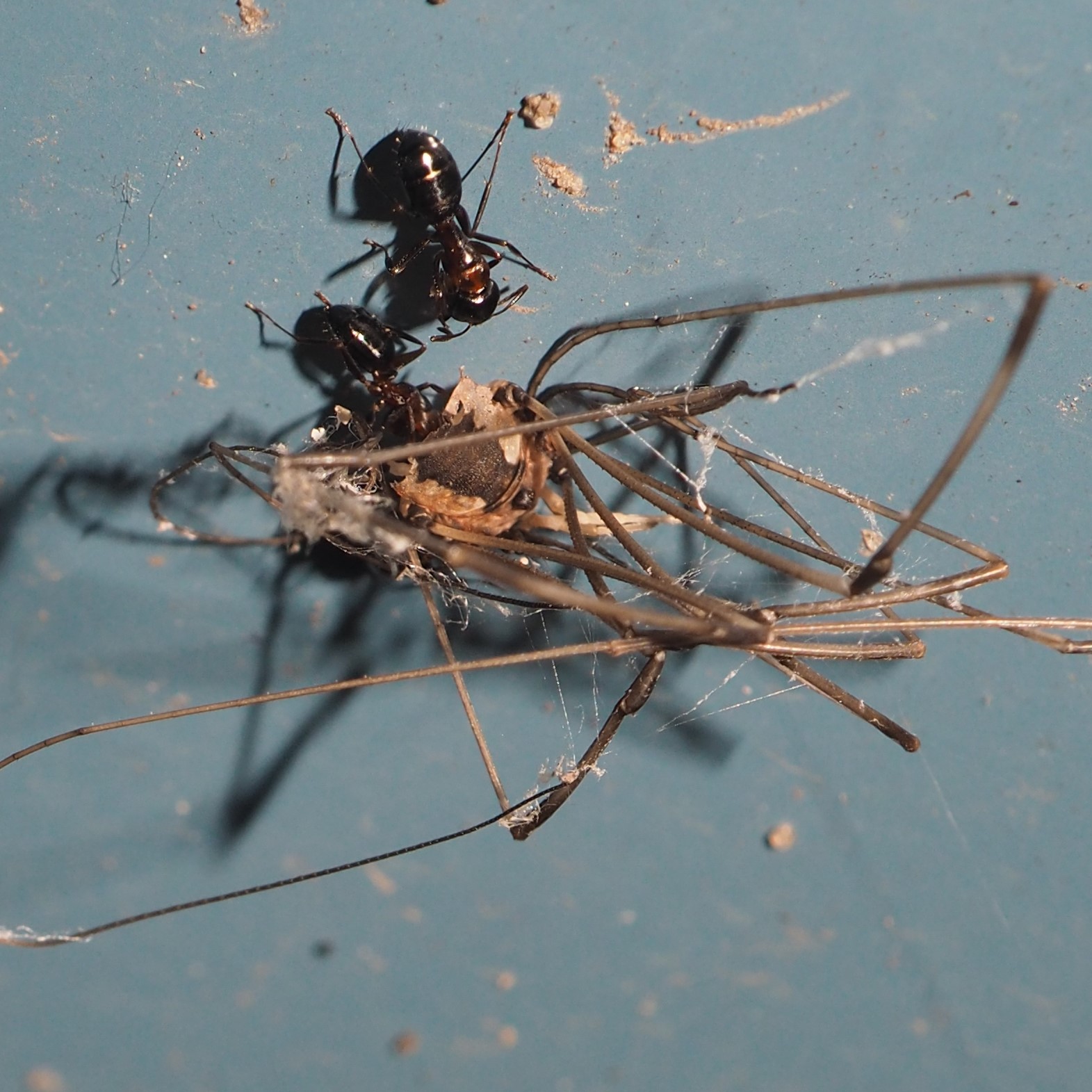
The barklice are doing well. Here are a couple of shots of one we saw last week but as a more undeveloped adult. It's called Graphopsocus cruciatus. Usually they first show up on the shop siding, but here it is on an aster plant. Picture 3 is Metylophorus novaescotiae, the first barklouse I ever saw. I remember submitting it to BG as a BEETLE! :-)
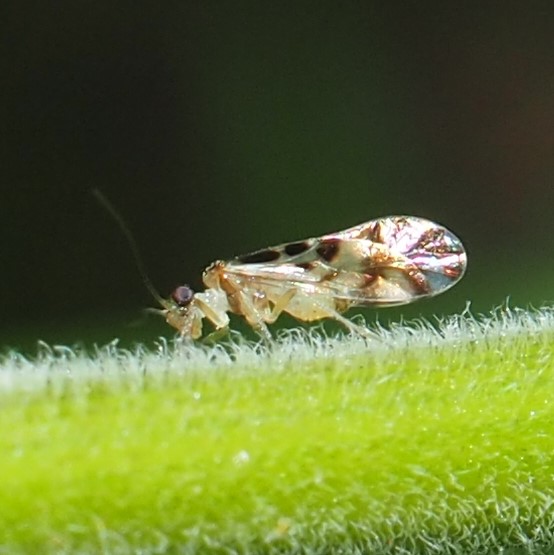
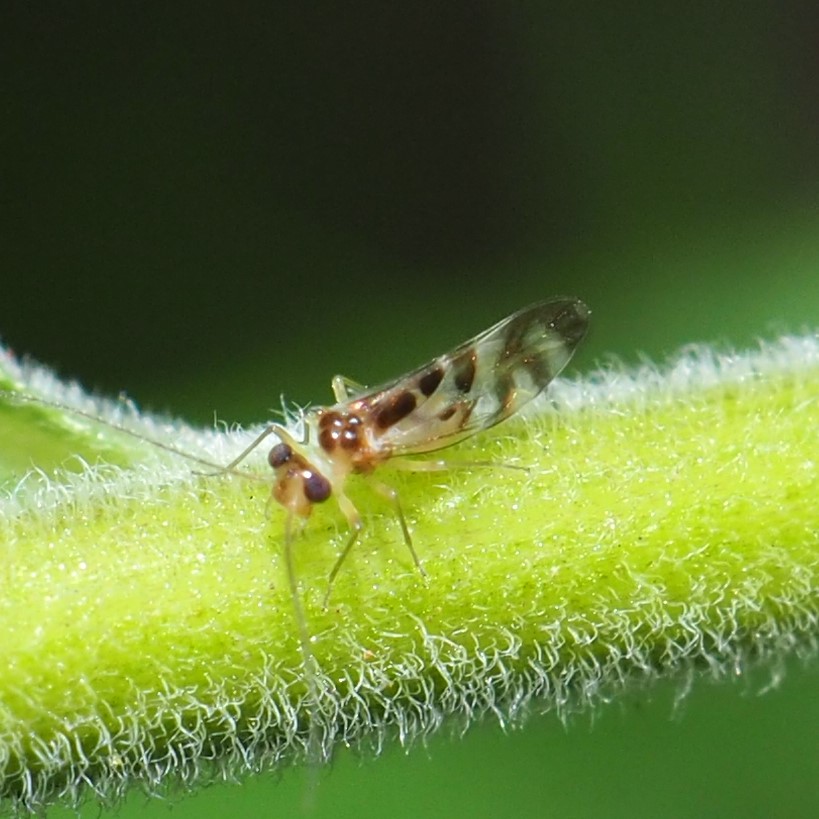
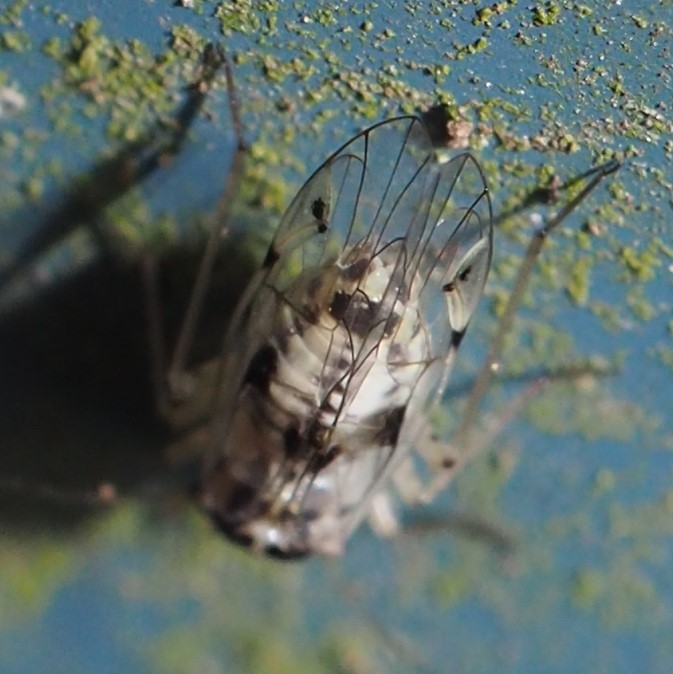
Some of the Barklice that haven't yet been identified include this reddish one and this (next) brown one. Third is probably
Echmepteryx hageni, a Scaly-winged Barklouse.
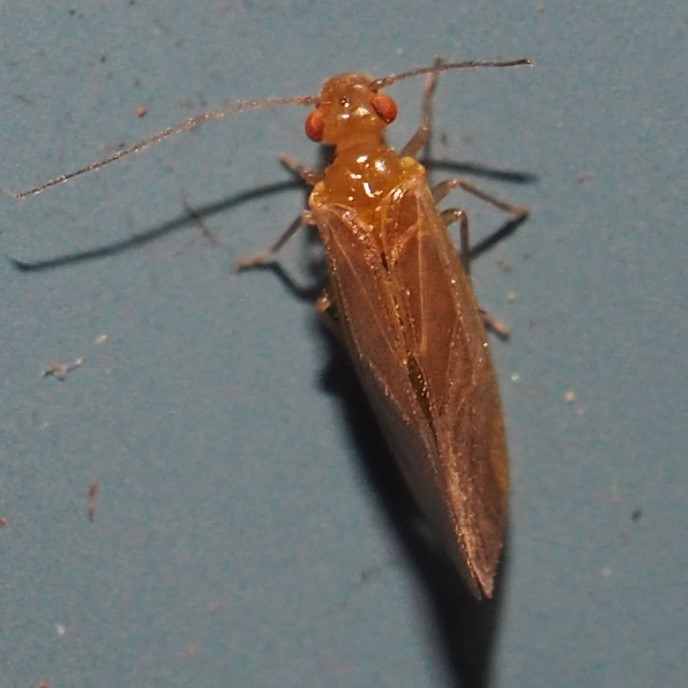
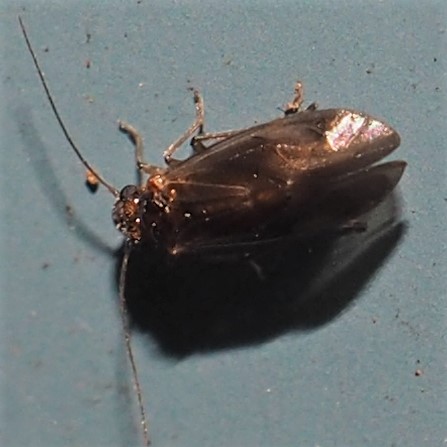
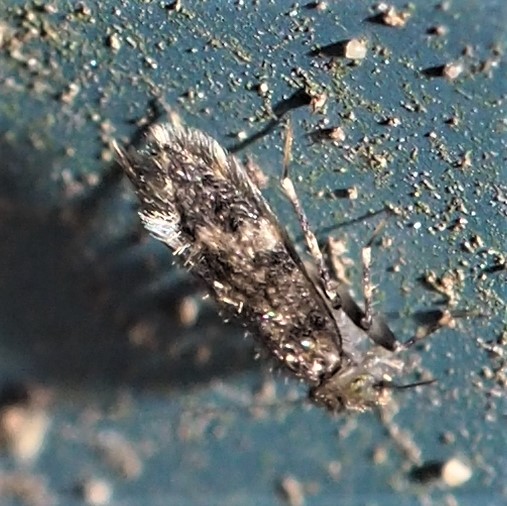
Our one bee of the week was having a wonderful time in the Trumpetvine flowers. It was a nice healthy-looking Honey Bee.
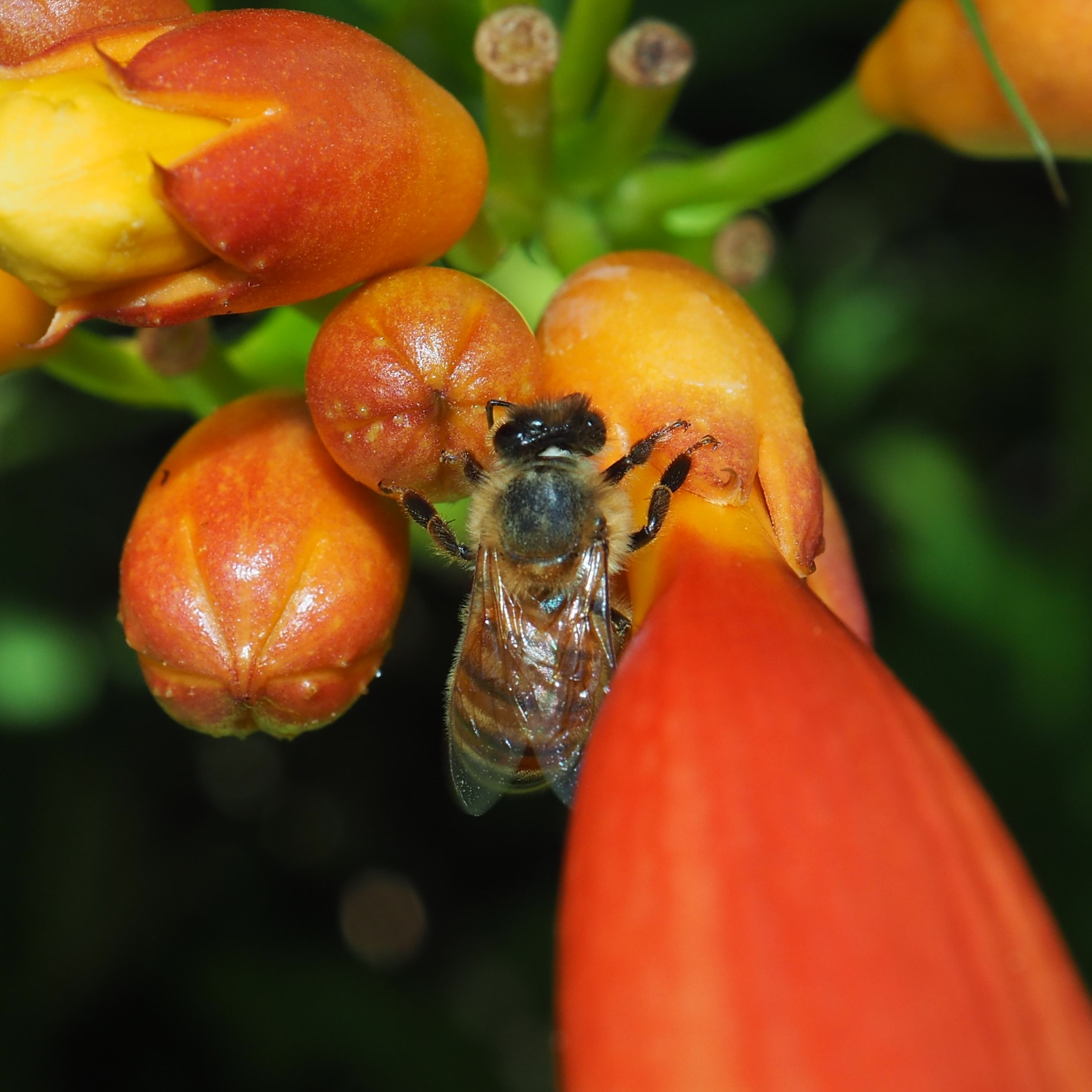
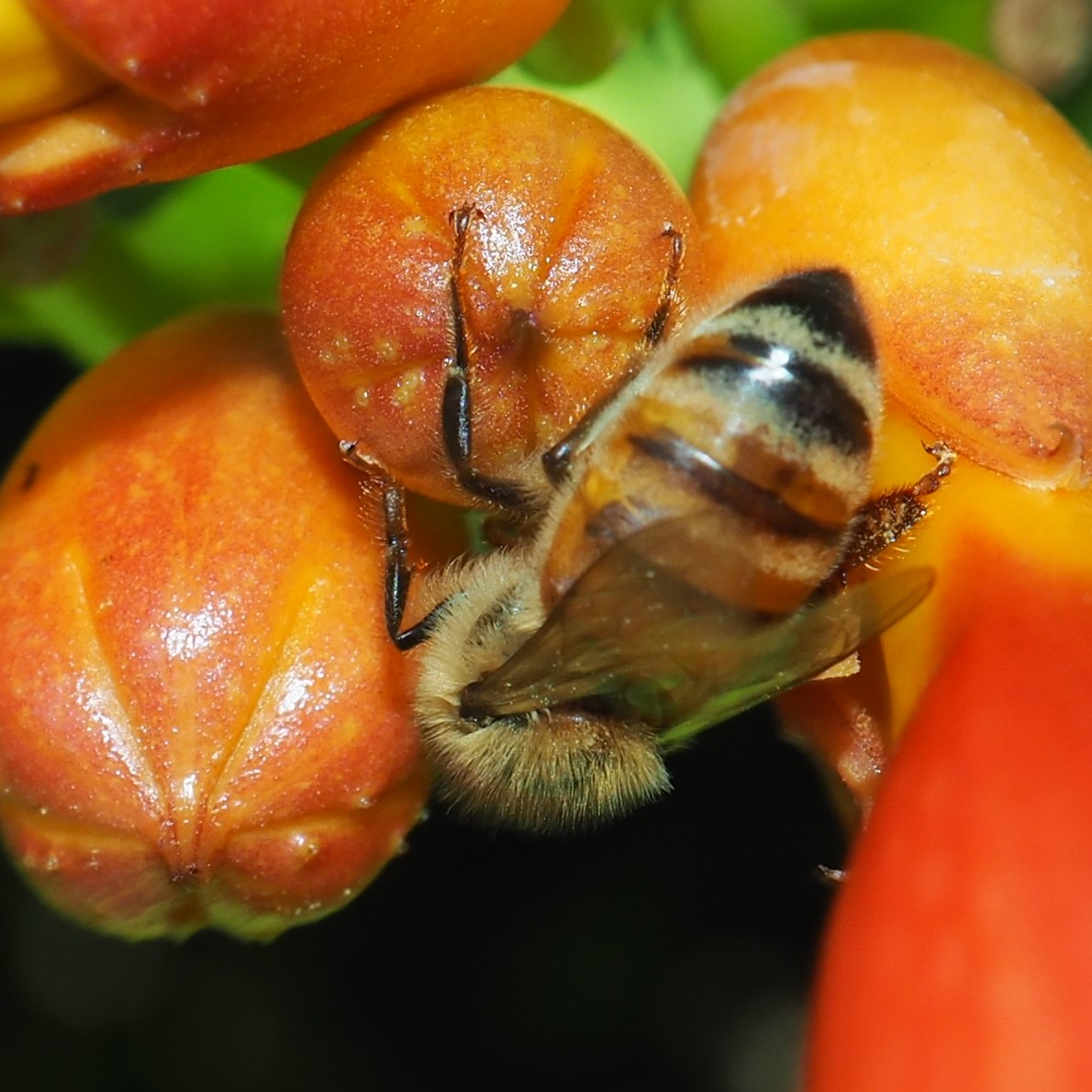
We've done all right so far this year for Tumbling Flower Beetles. Here is another one of the mostly black species, which everyone seems to have troubling identifying to species. Picture 1 shows it with its fore-segments stretched out so that we can actually see its head. Picture three isn't so easy to diagnose, but that's what you see if you aren't armed with a good camera or a steady eye.
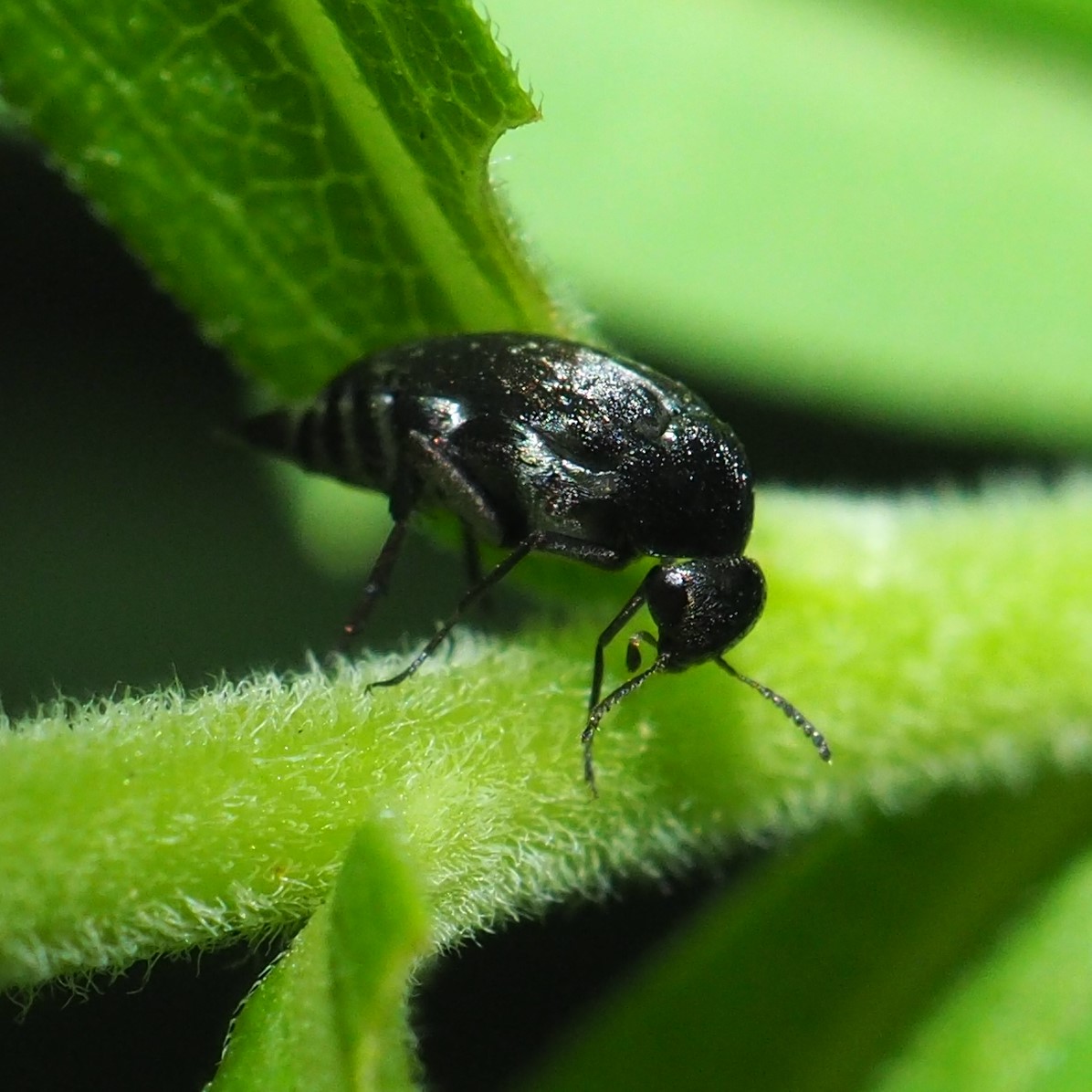
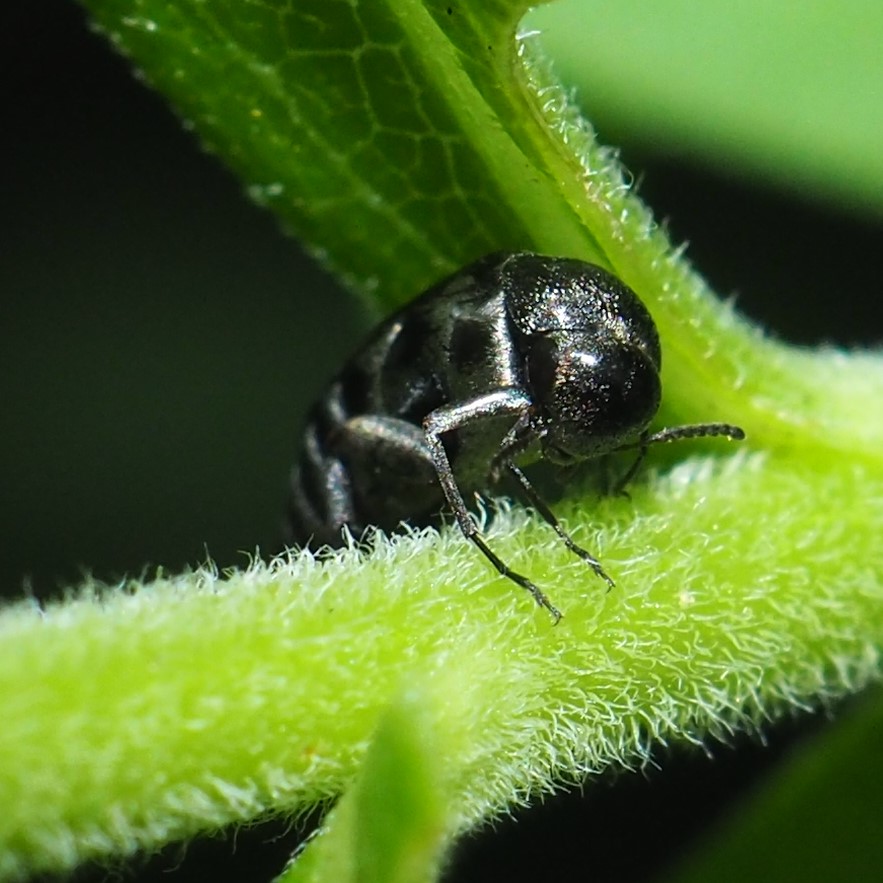
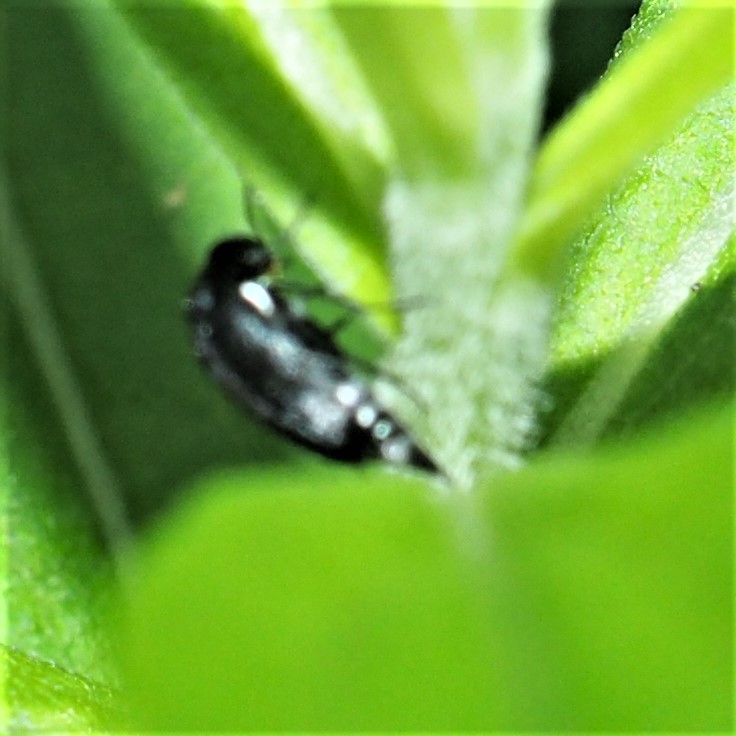
The Japanese beetles are doing well, as are the Lightning Beetles (pictures 2 and 3). There seem to be quite a few species of the Lightning Beetles.
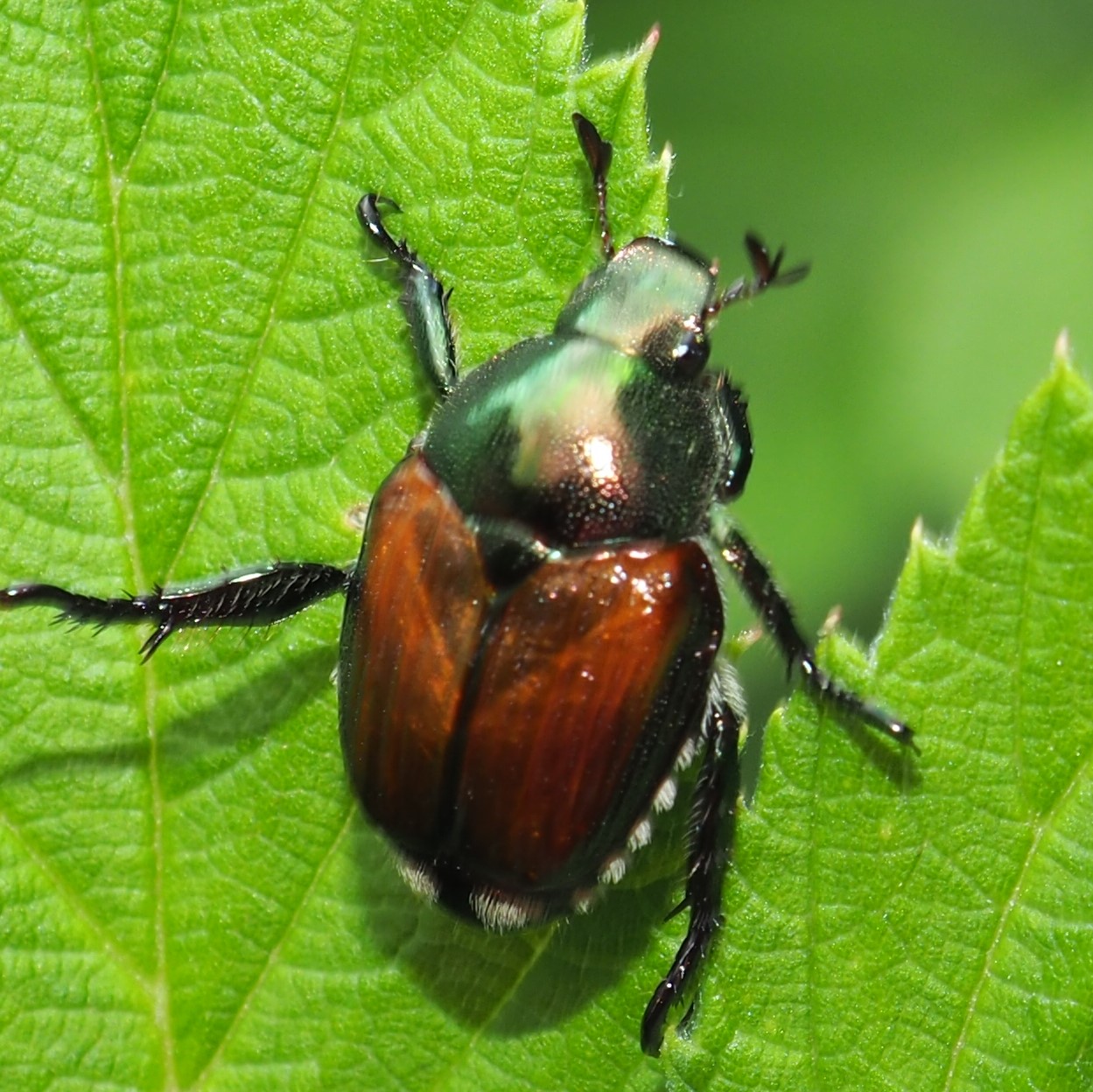
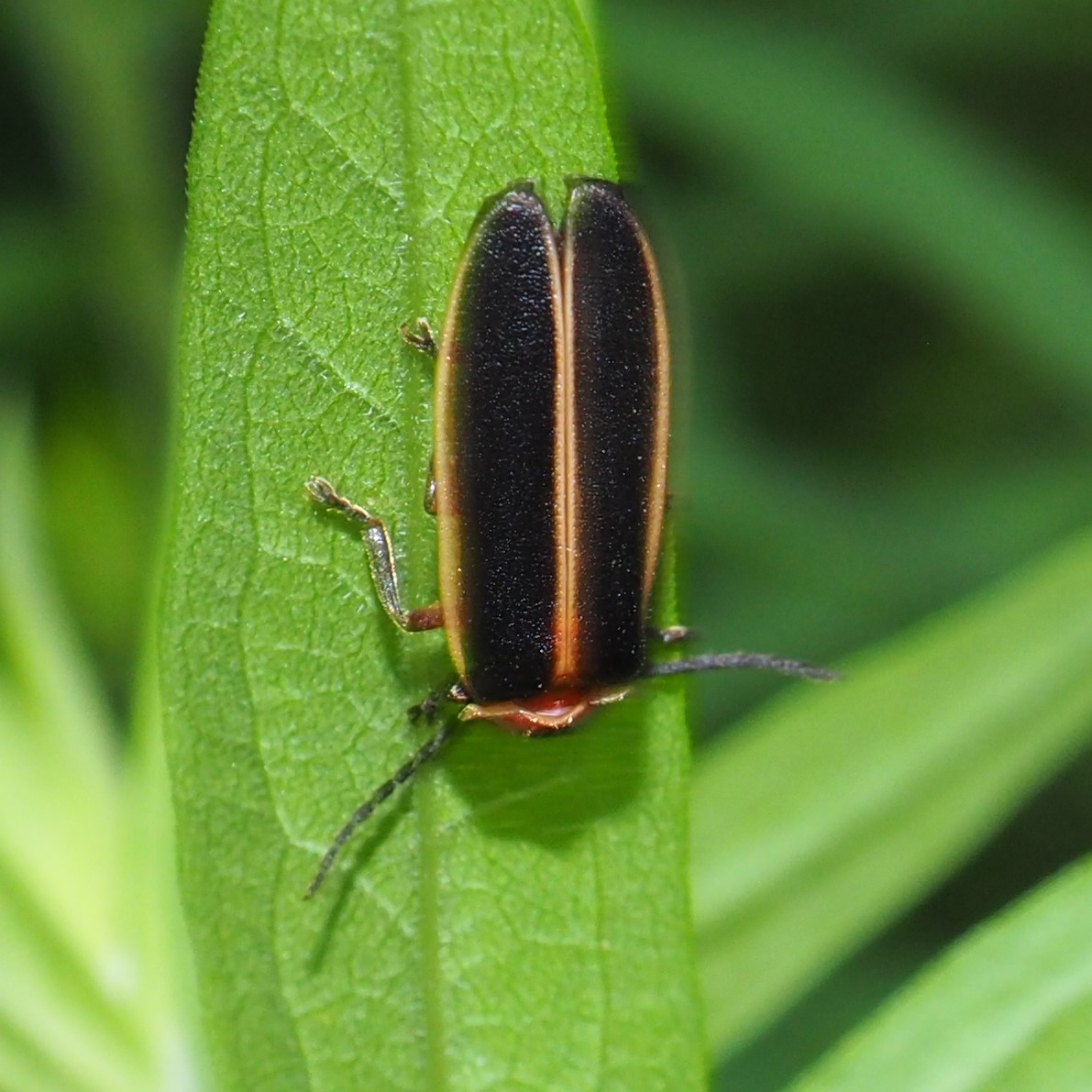
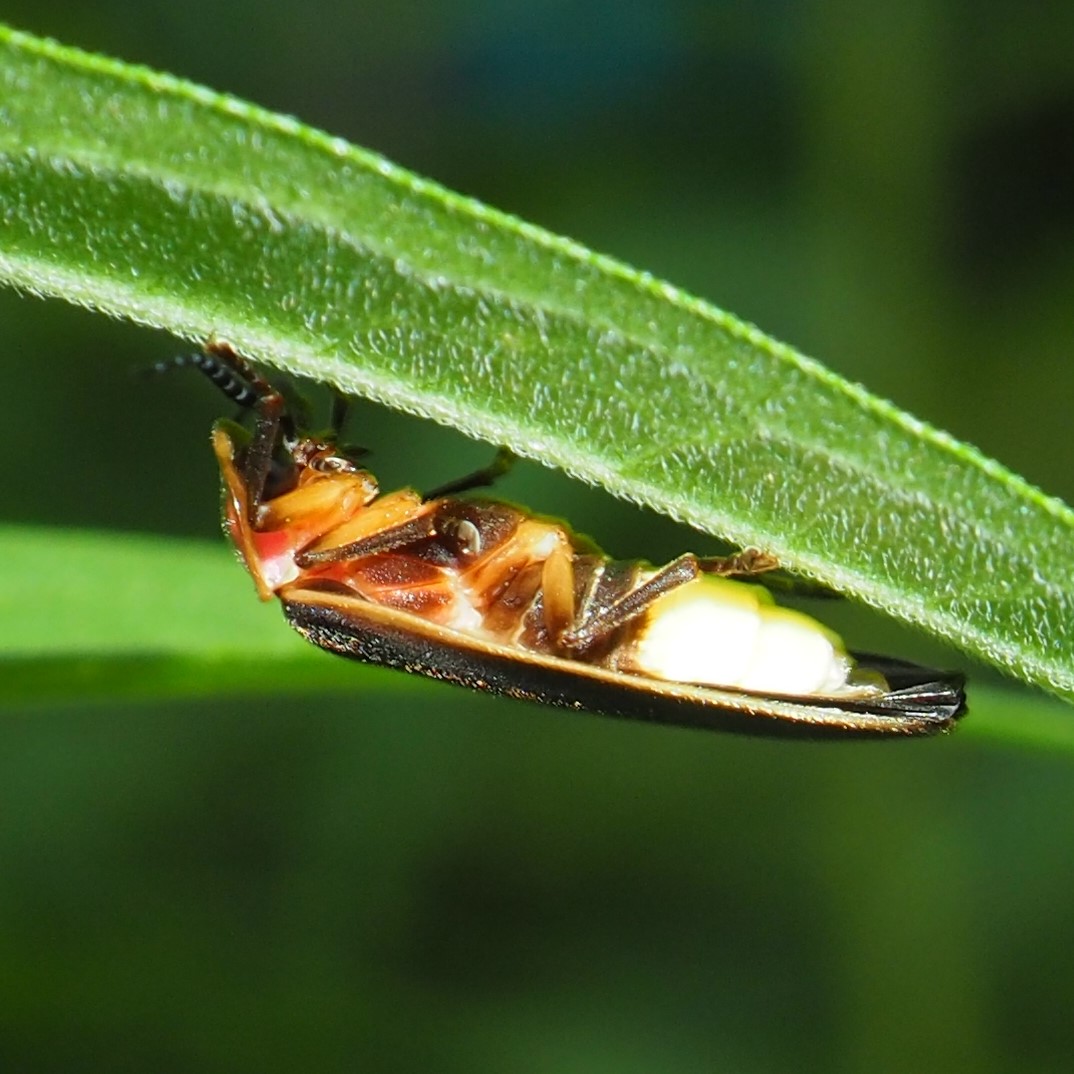
The first image here is of a tiny brown beetle. Next is our old friend the Redbud Bruchid, and finally a spotted Weevil of some kind.
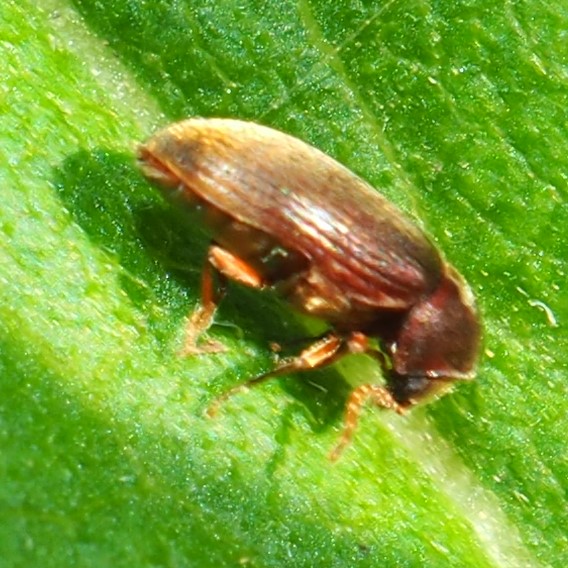
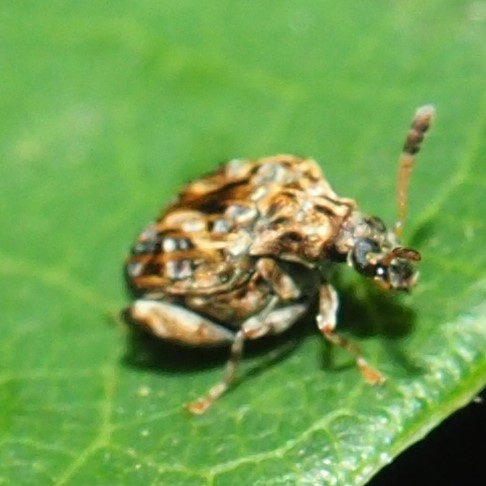
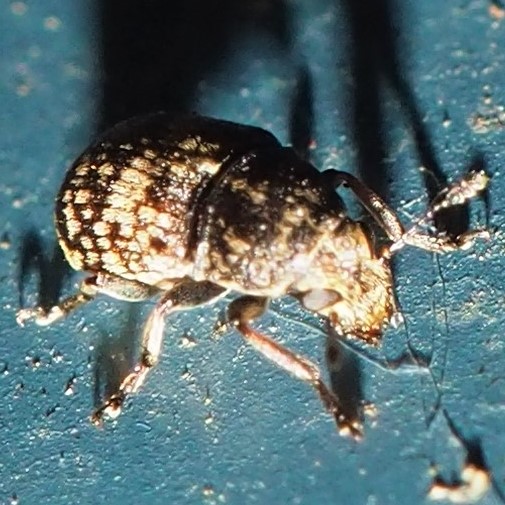
Here we go into Bugland. First is the nymph of a leafhopper of genus Scaphoideus. Second was a picture from June this year of an earlier nymph. And third is an image of an adult taken in June of 2015. In that third picture, note the stylized flower near the tail-end of the adult. This is a typical motif from the genus.
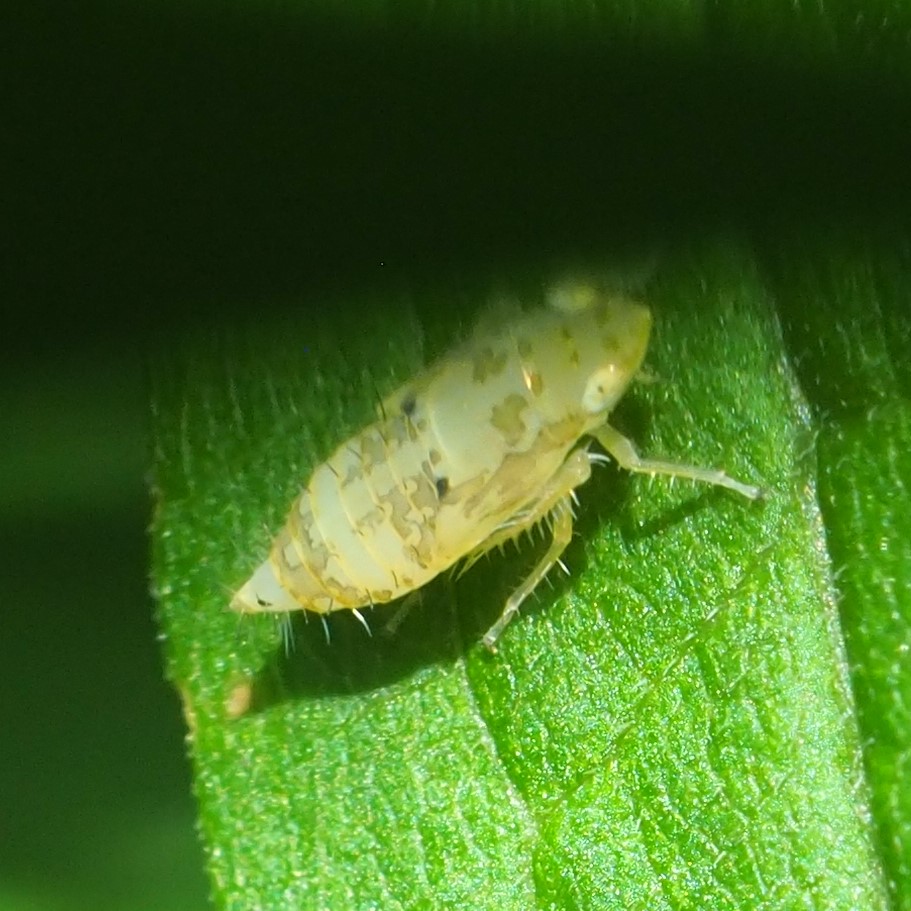
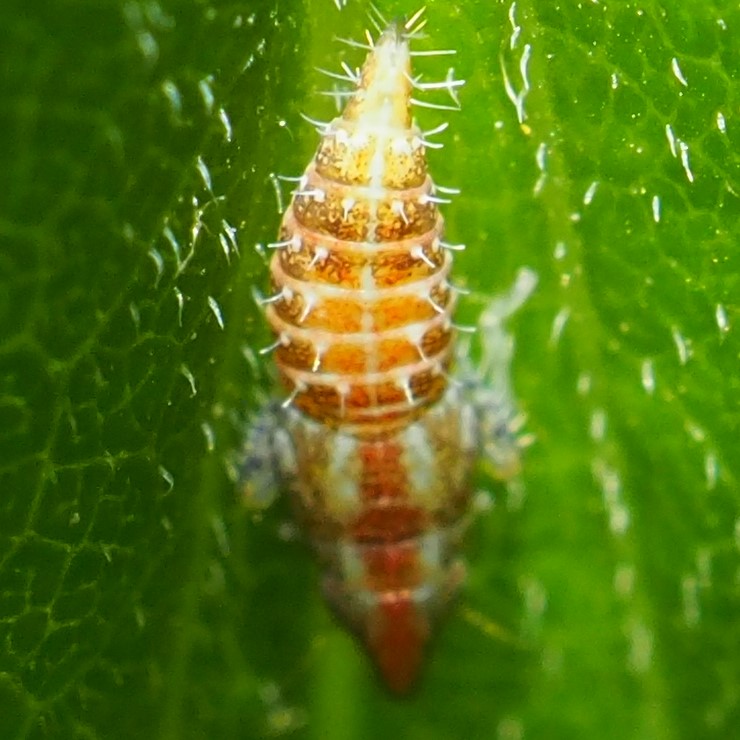
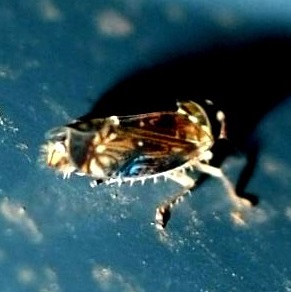
First in this row is one we all recognize as a Candy-striped Leafhopper. Next, maybe you will recognize the big-eyed and curled-tailed nymph of the leafhopper Jikradia olitoria.
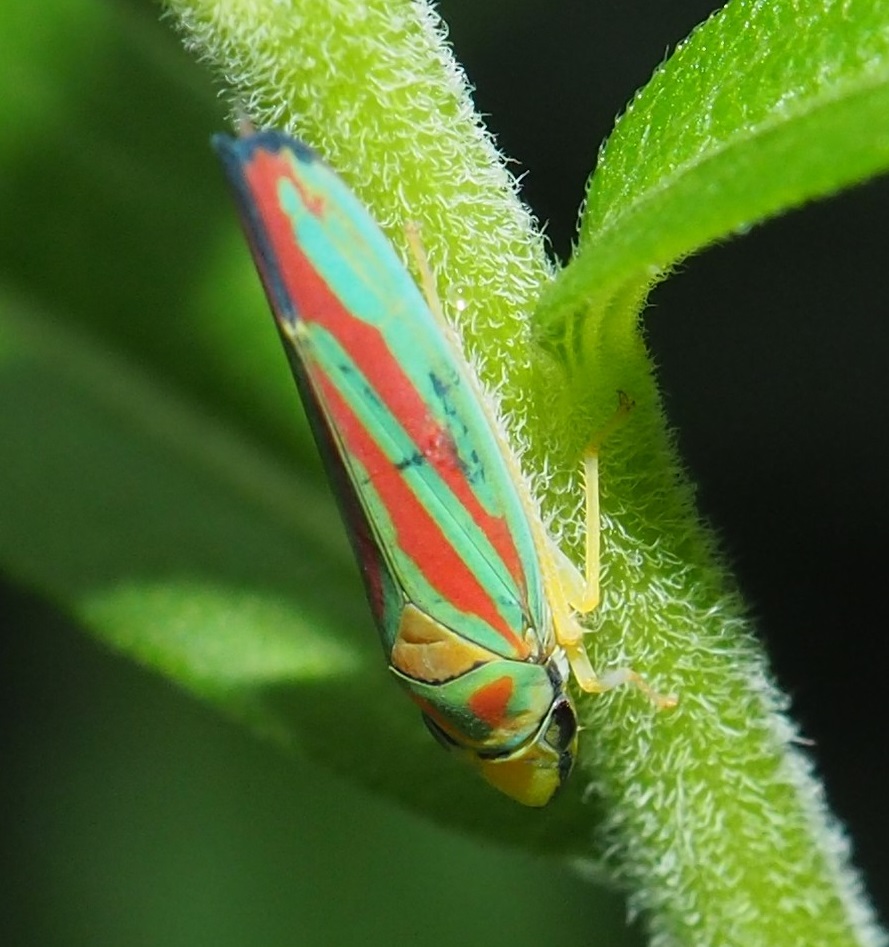
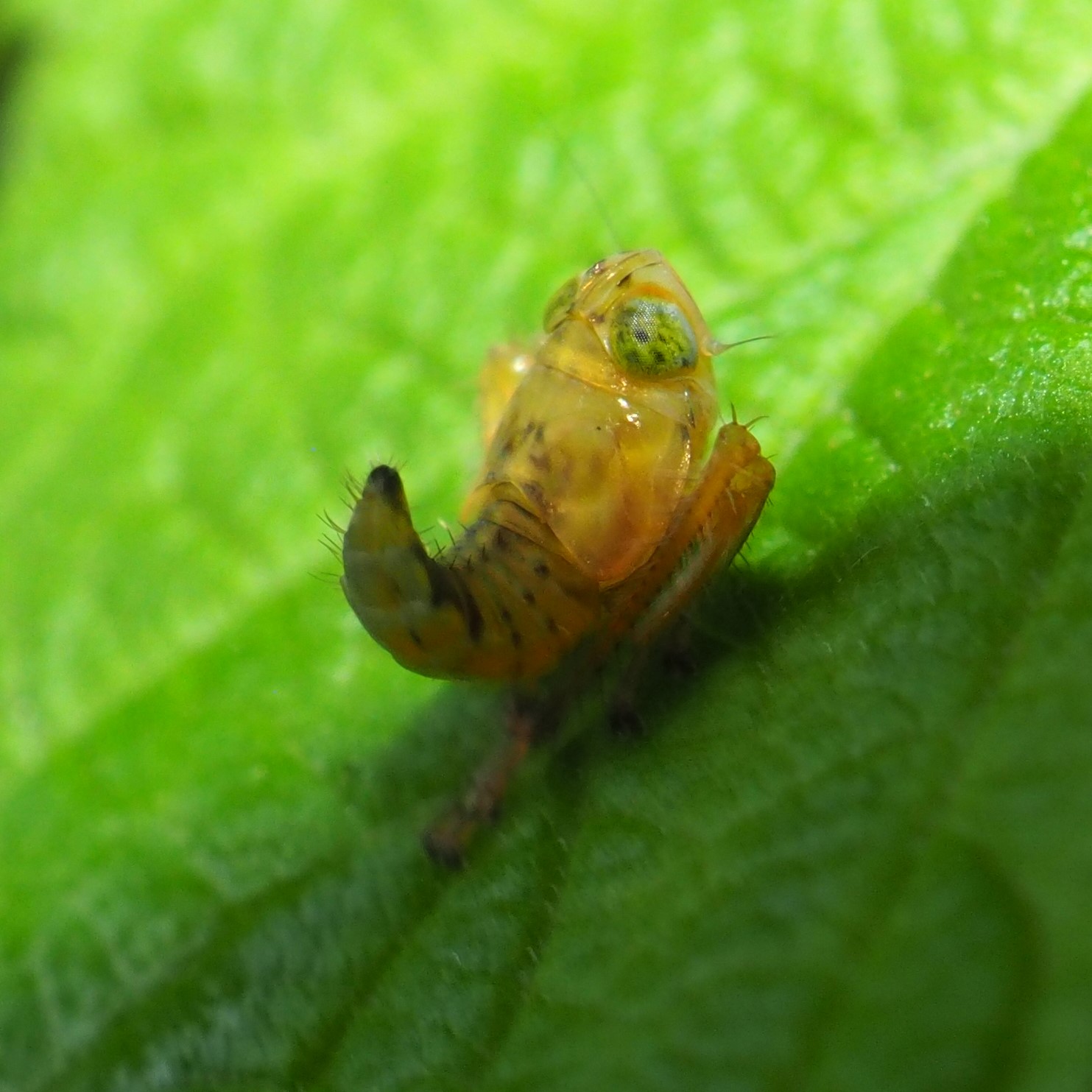
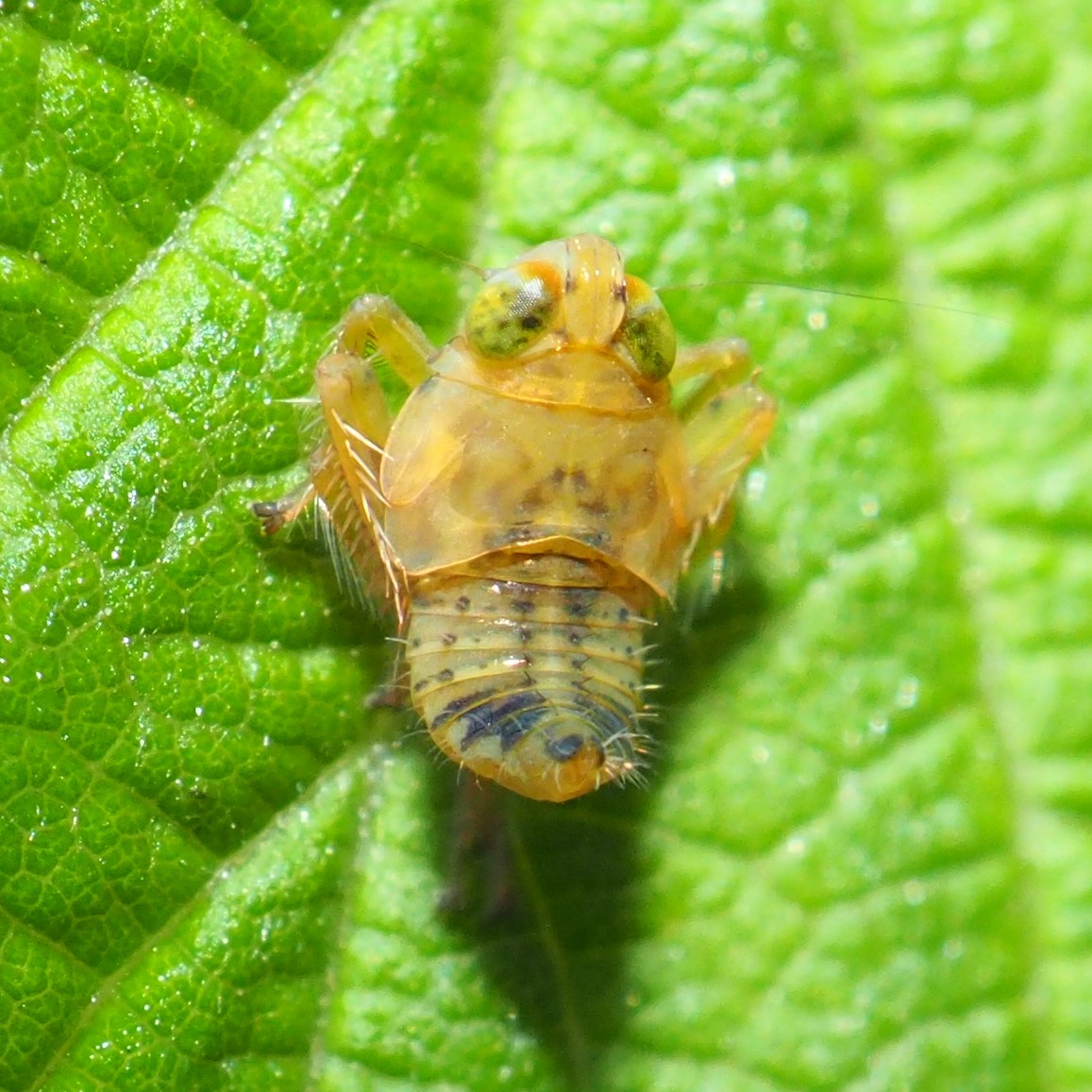
Here is another leafhopper nymph, which someone ID'ed as belonging to the genus Scaphytopius. I now think it is probably a nymph of something like the Japanese Maple Leafhopper. It seems to have a small worm, perhaps a parasite on its side. I love all those prickles but especially the leg spikes that indicate it's a leafhopper.
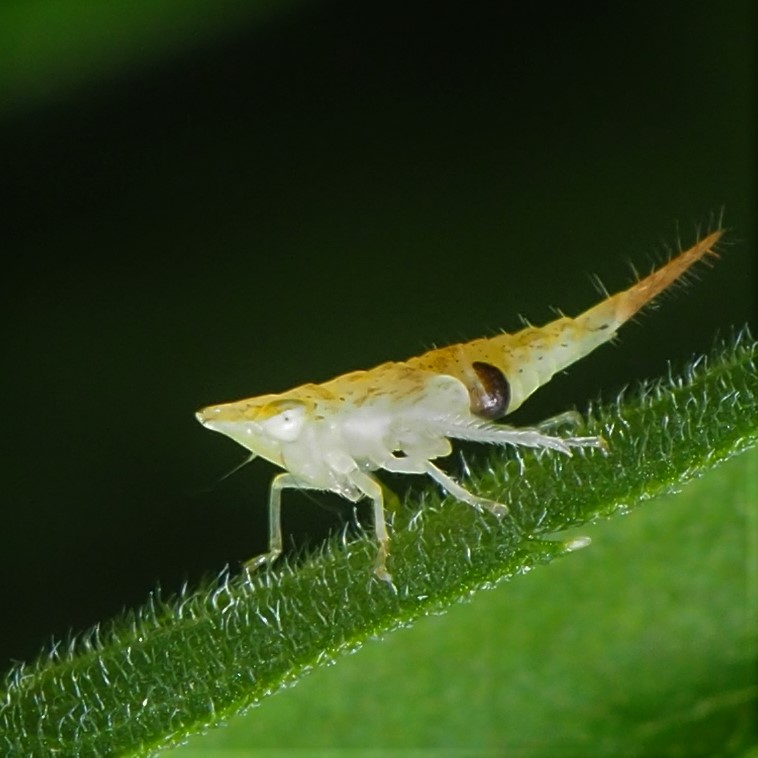
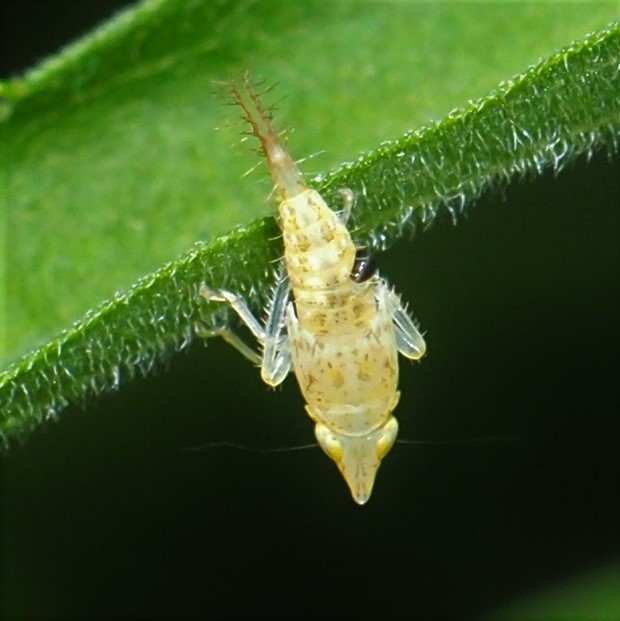

Next, some planthoppers. I think this first and second one show a nymph of the two-striped Planthopper. The third is a bit further along as its fluffy tail is longer. Or maybe the others are further along as the tail is resorbed? If you can tell which one has the longer wings, that might help, but I can't. Picture 4 definitely has the longer wings, and MAY be getting on towards adulthood of the same species. Keep your eyes peeled!
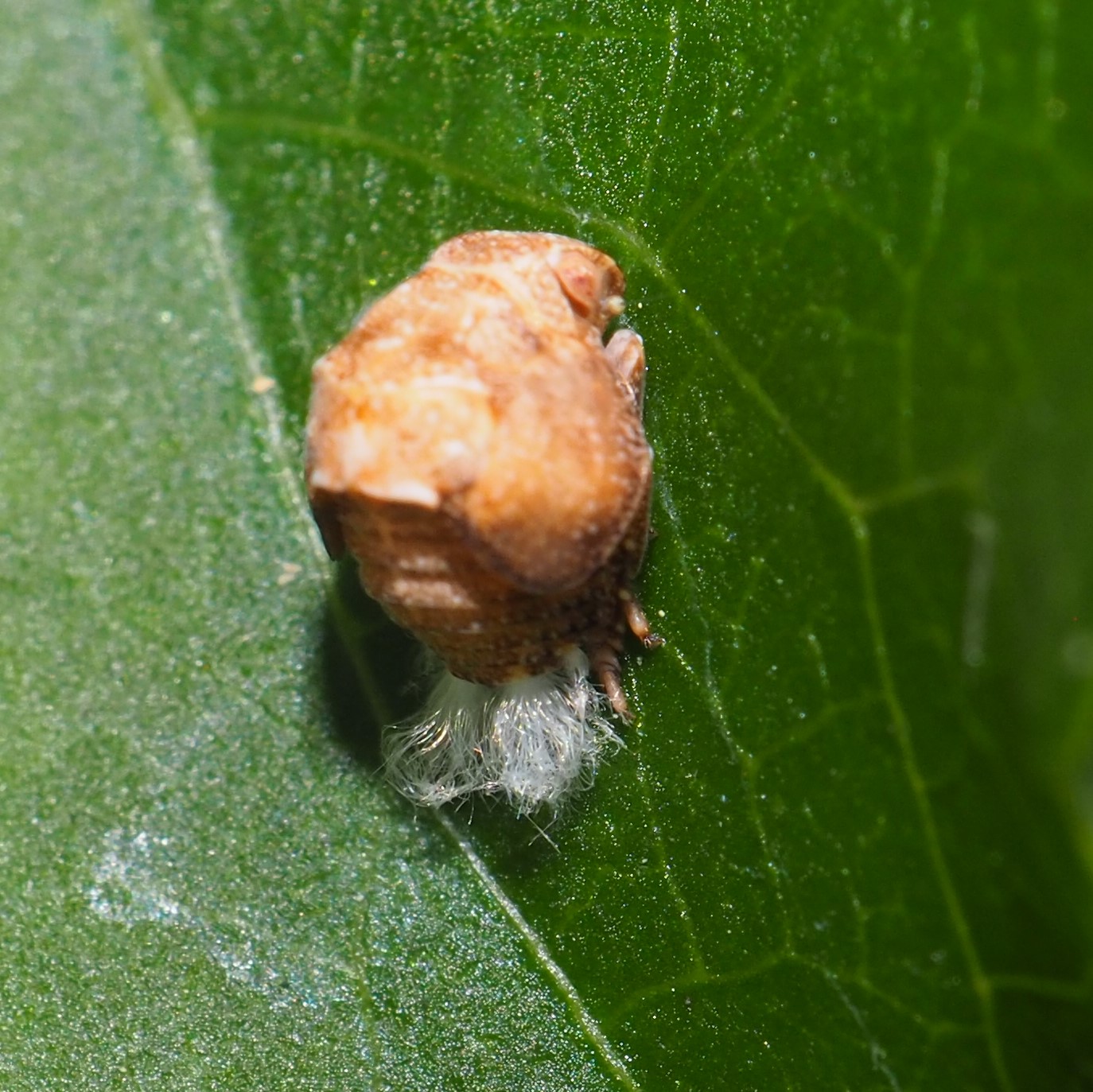
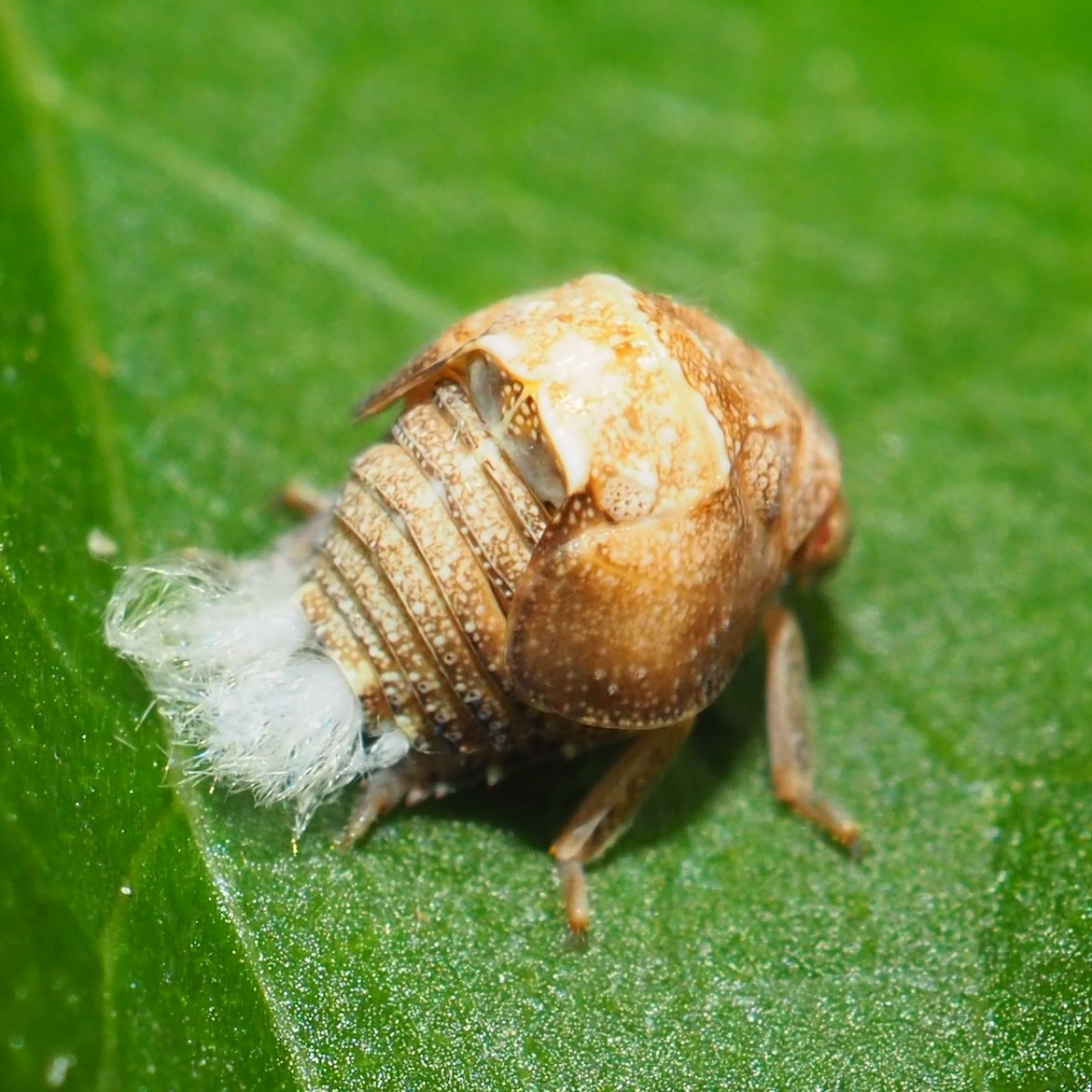
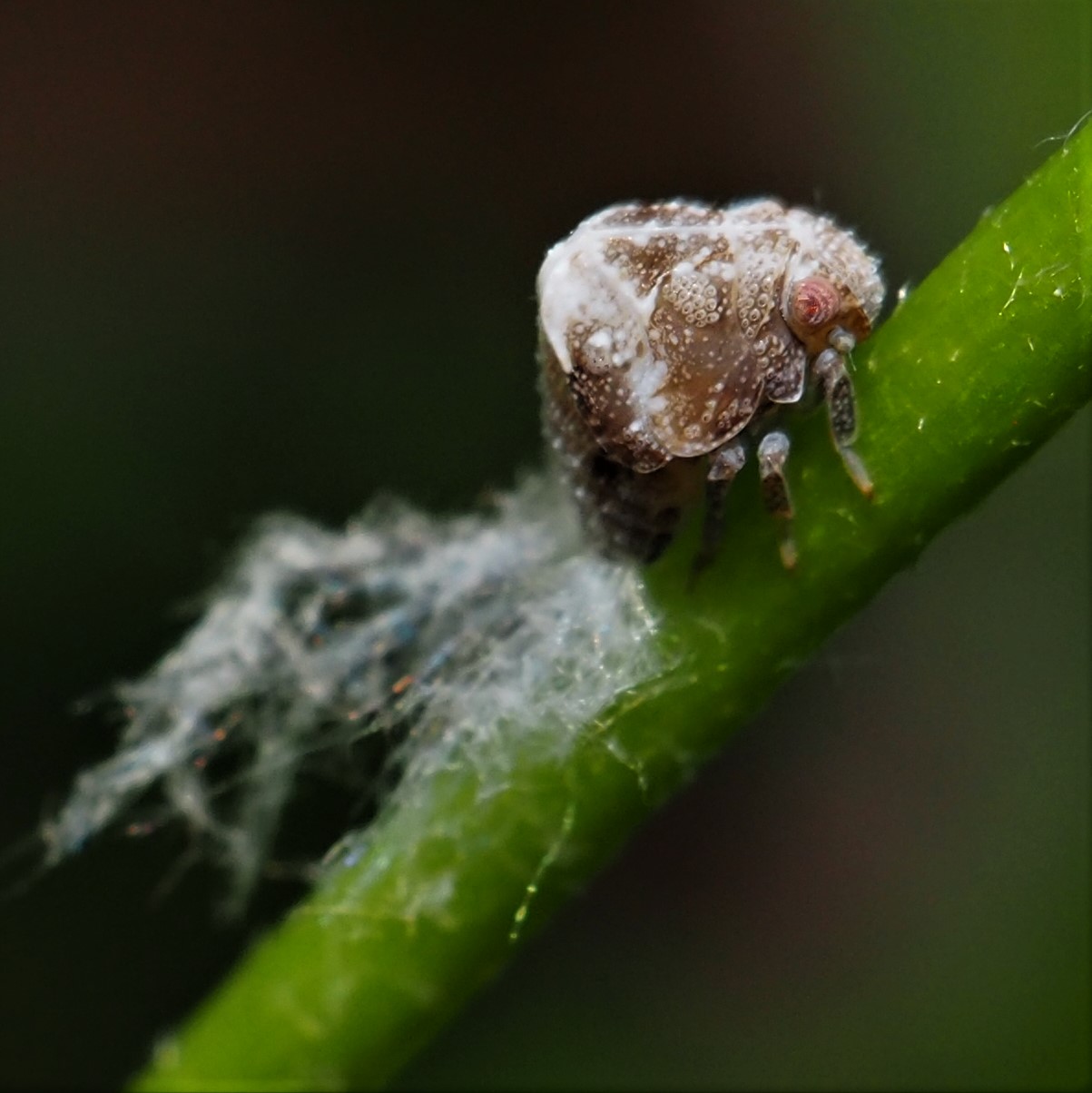
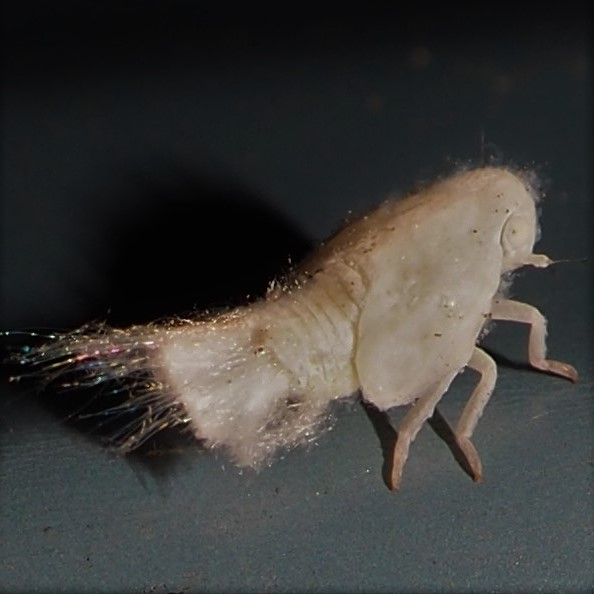
All three of the next pictures are of the Meadow Spittle Bug. The nymphs of Spittle Bugs blow themselves lots of bubbles that look like good quality fluffy white spit. Hey, it protects them from me, so it must also deter other predators.
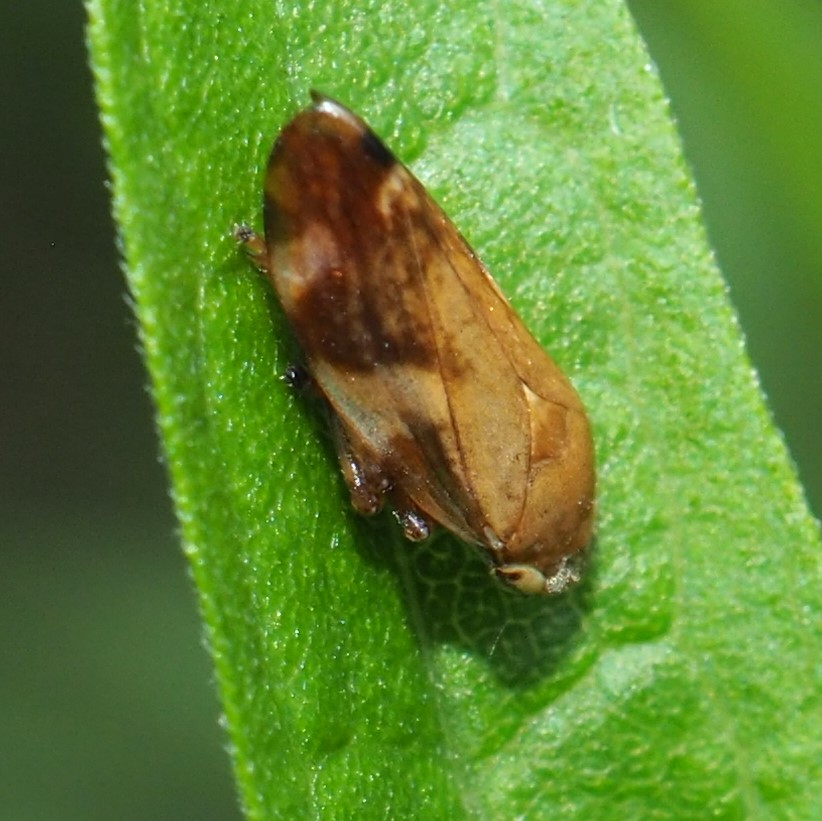
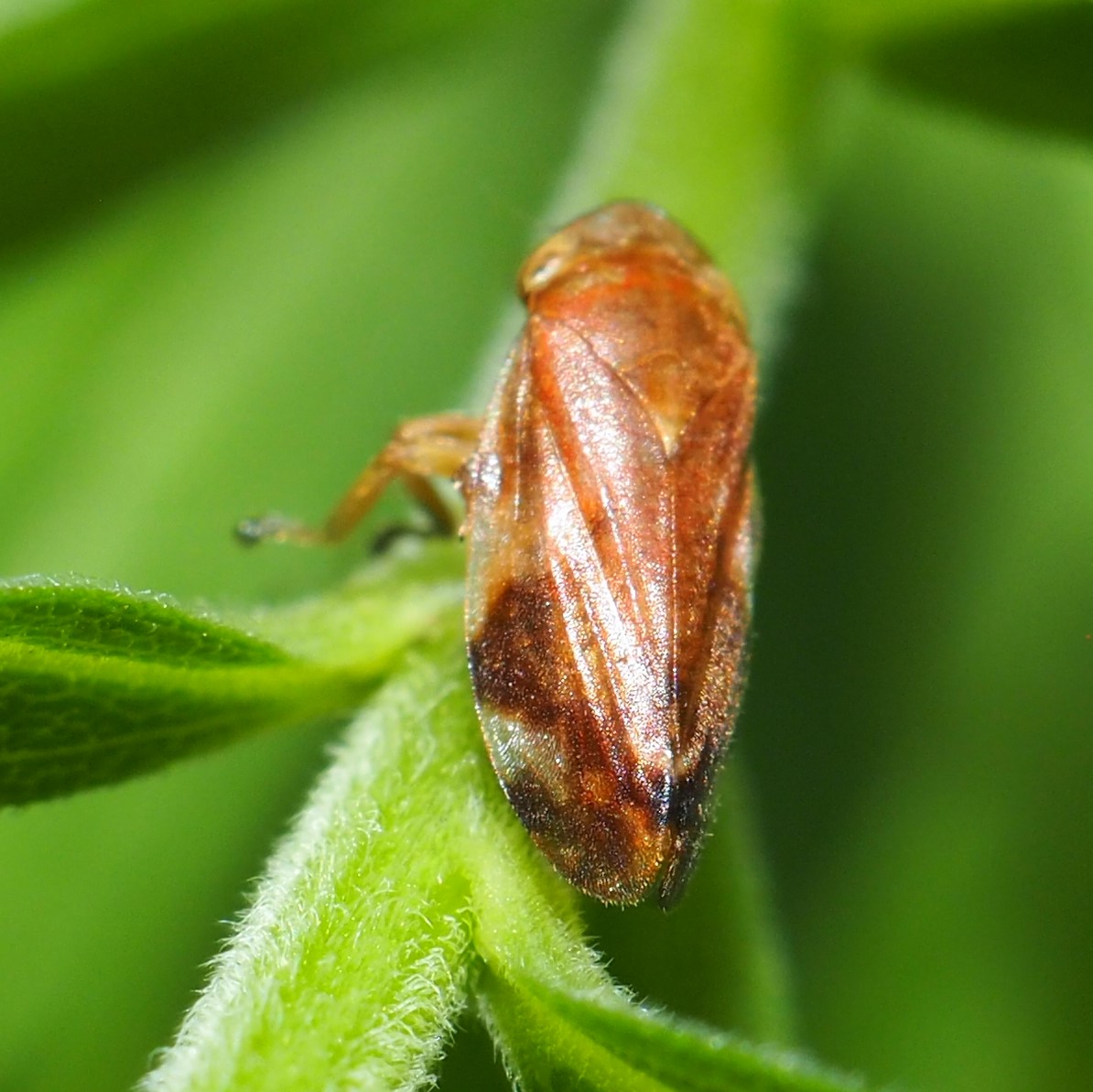
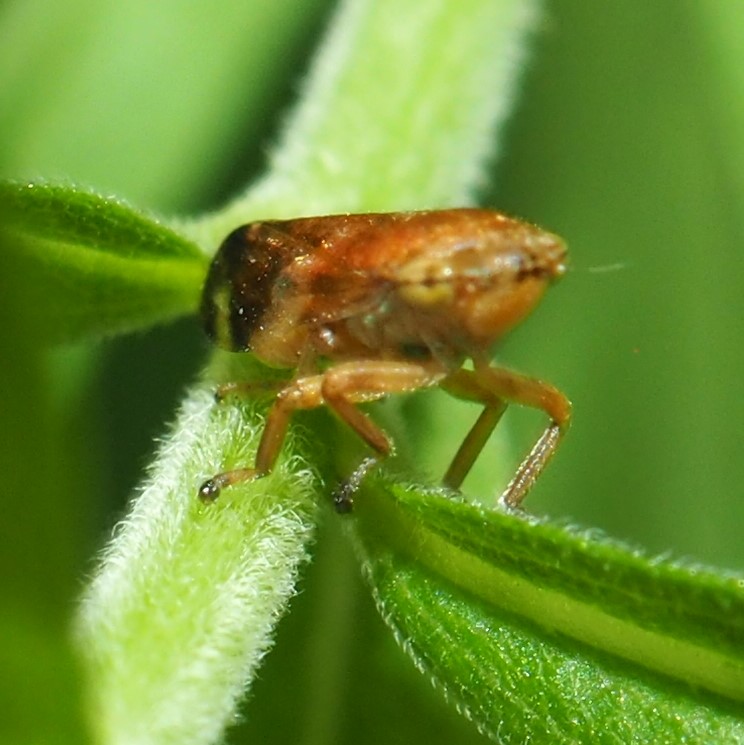
Now we find some Treehoppers. These little hump-backed green fellows are Green Buffalo Treehoppers. They are very hard to spot on account of their perfect camouflage in the green aster plants.
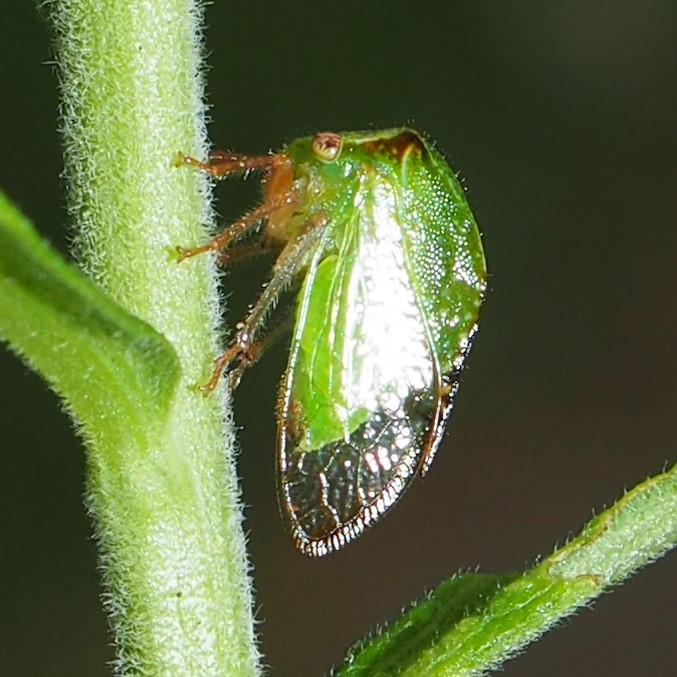
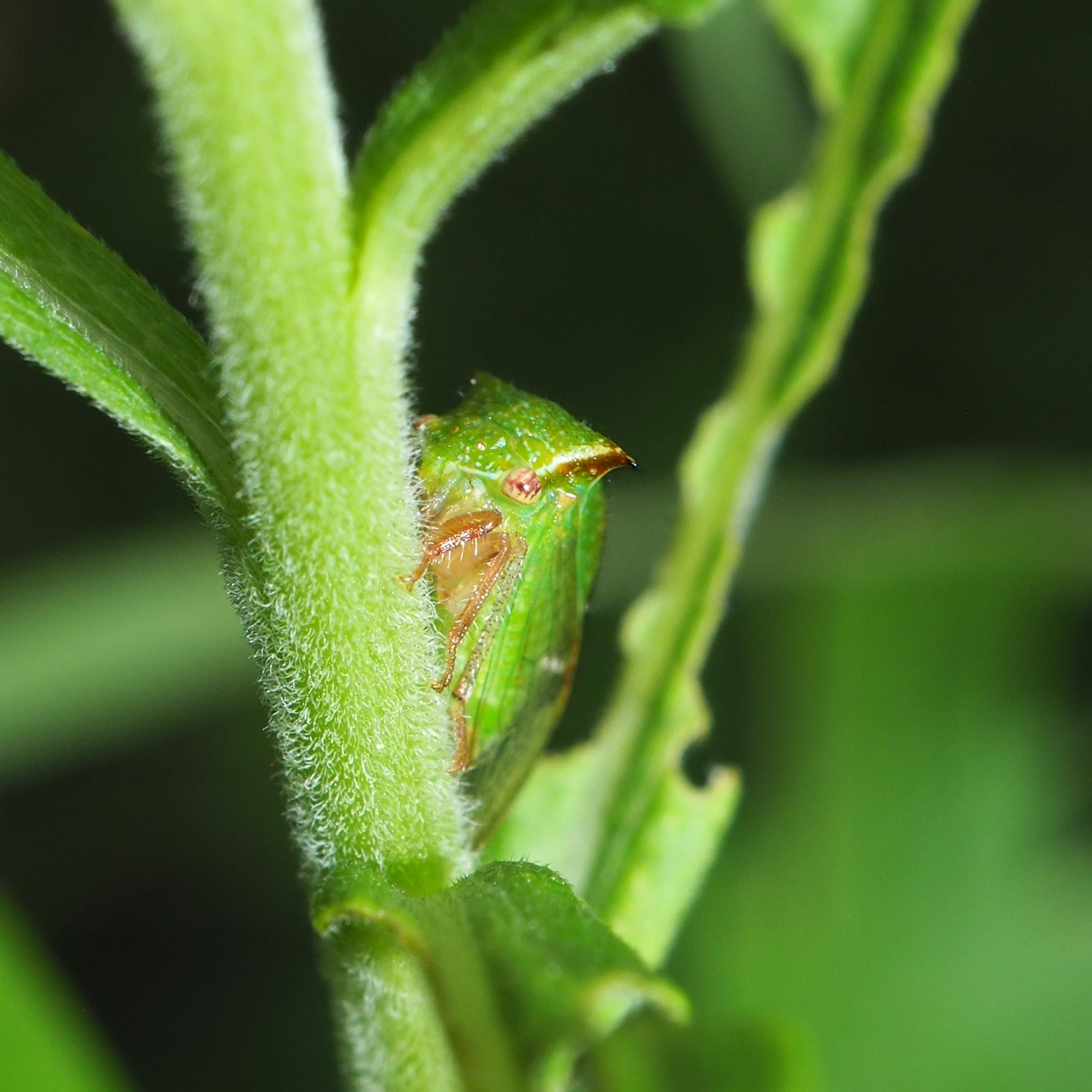
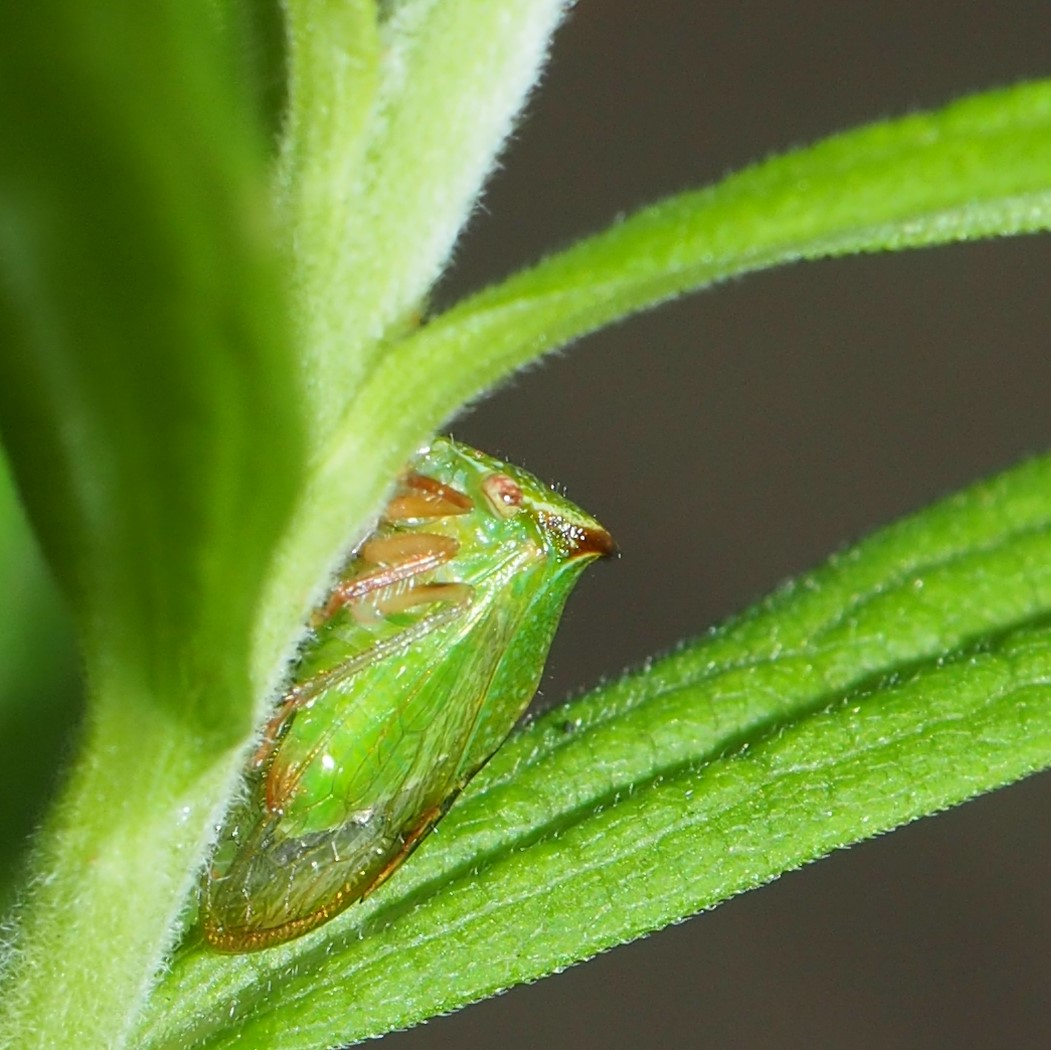
Another Treehopper, this time Entylia carinata, the Keeled Treehopper. Here are a couple of pictures of nymphs and their Ant-nannies.
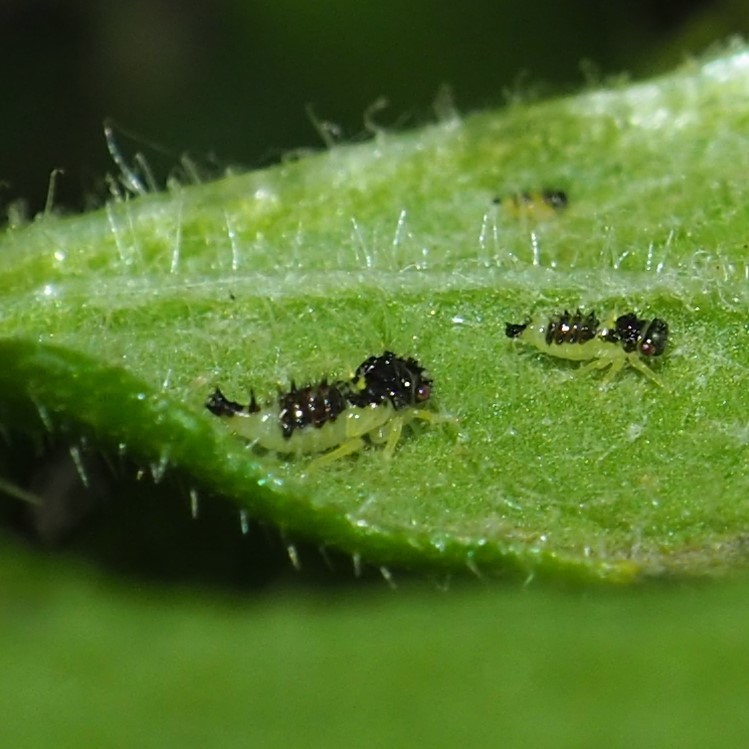
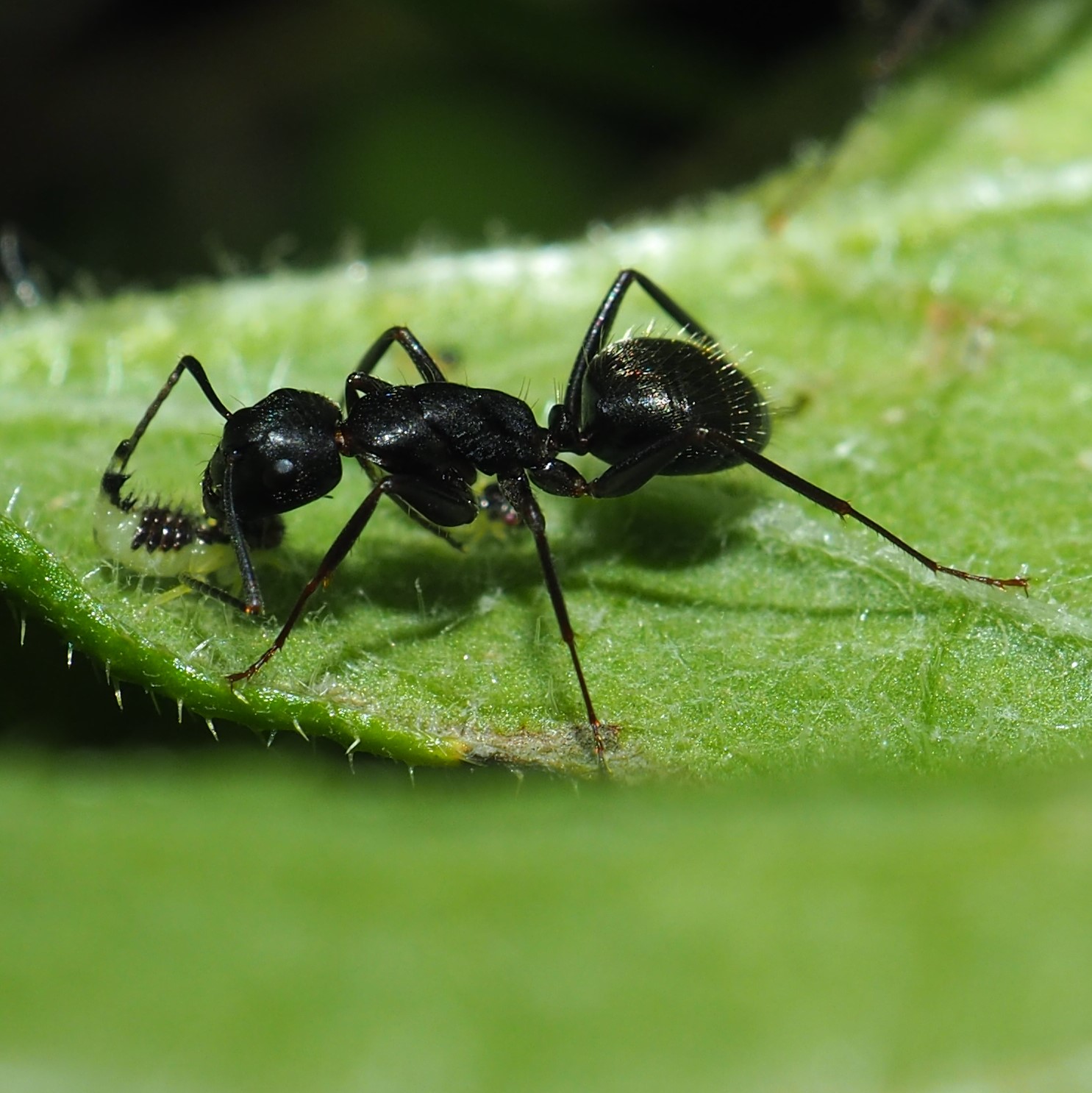
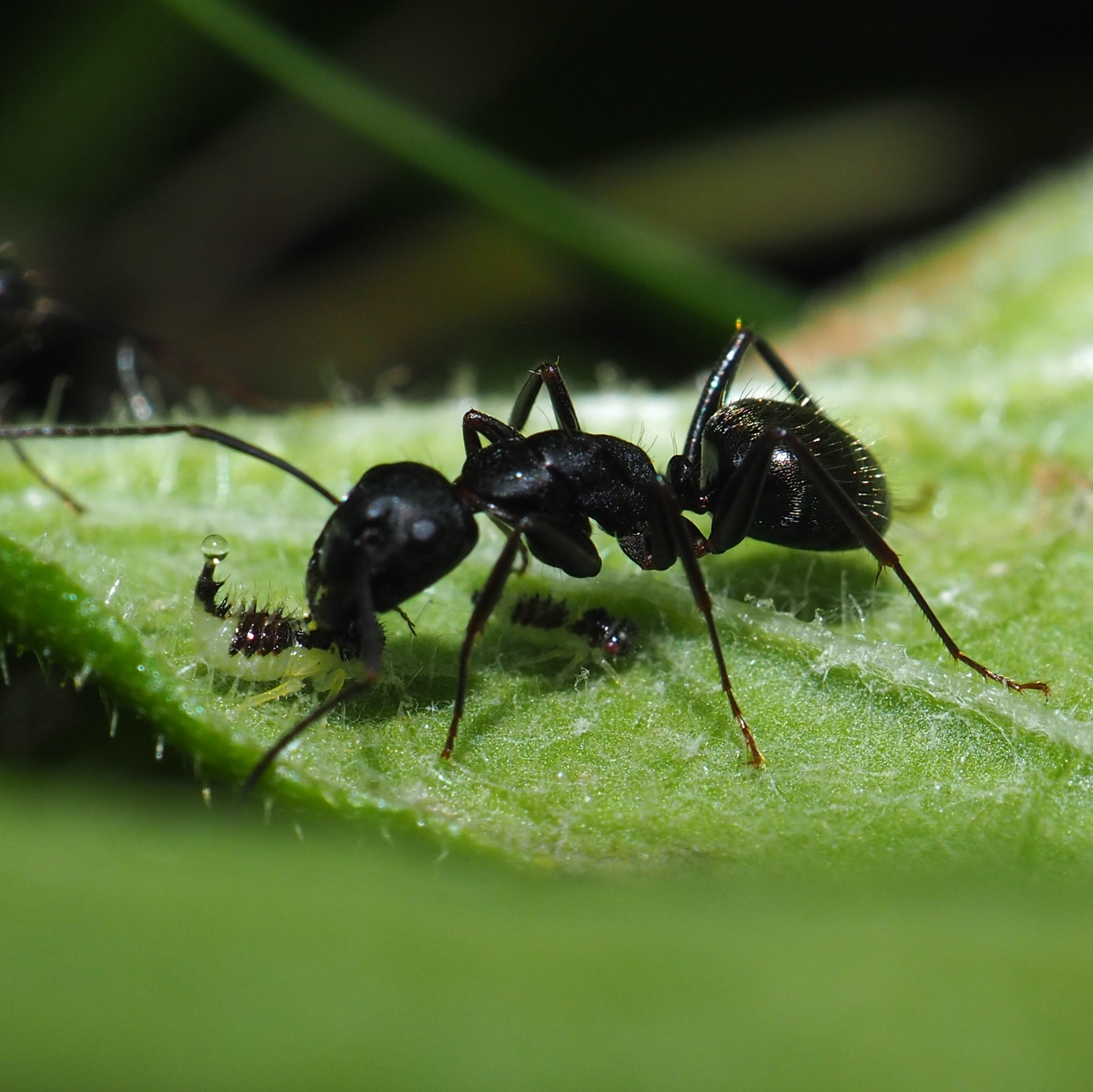
Number one here is a True Bug, but whose truth? (Nothing political here, no, of course not.) Next is a Plant bug of some sort, and so is the third one. Fourth is an old standard, the White-margined Burrowing Bug.

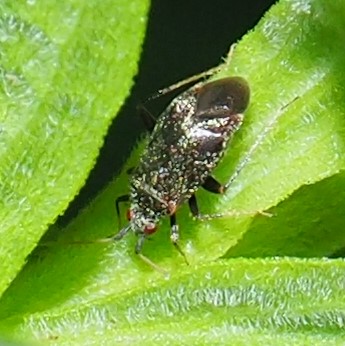
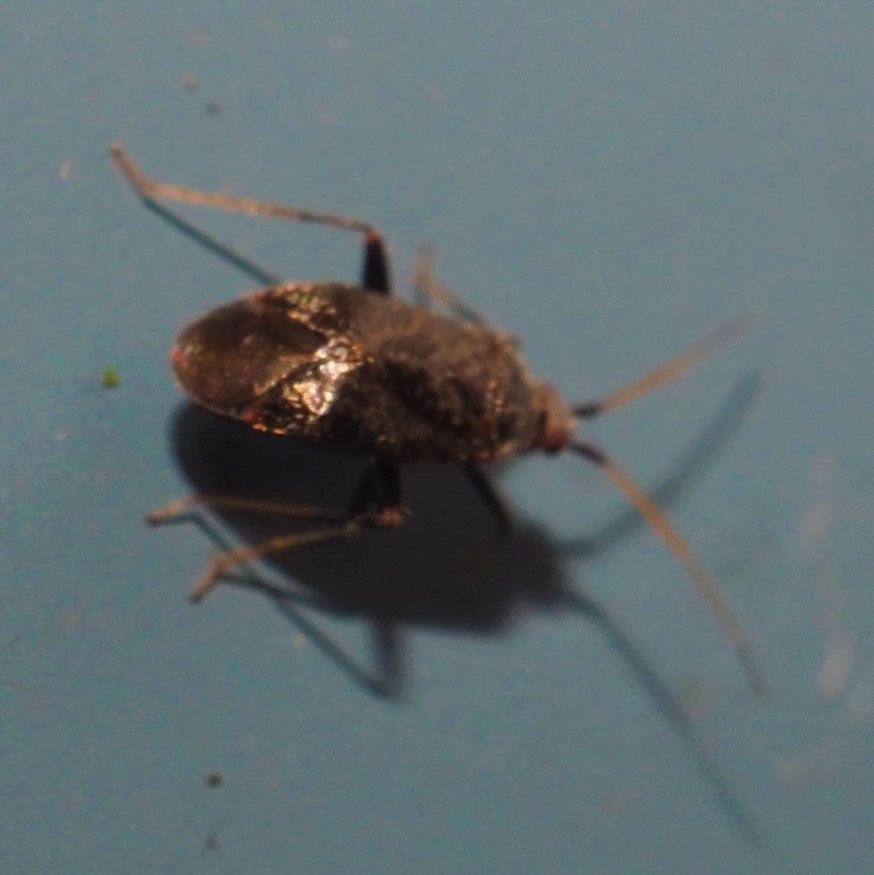
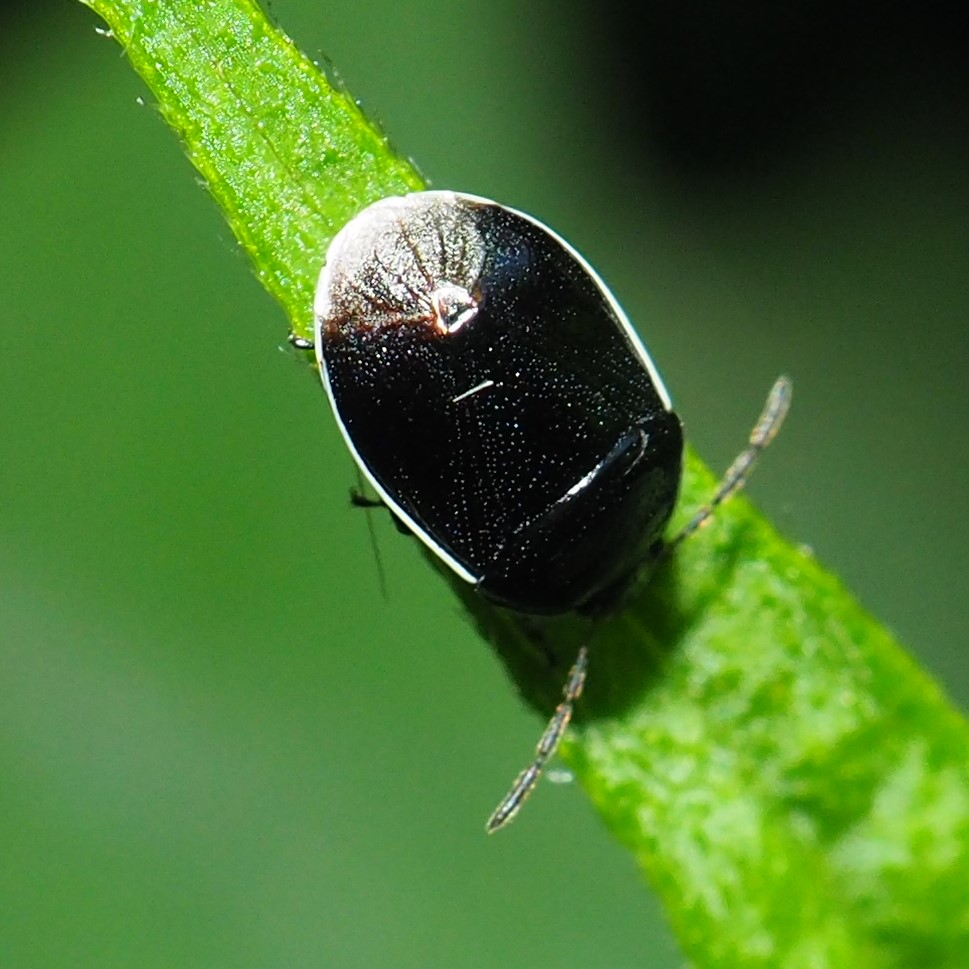
Those Fall Webworms are coming thick and fast. They are getting easier to tell from the Hickory Tussock Moth caterpillars. Then there was this skinny green caterpillar (so far unidentified).
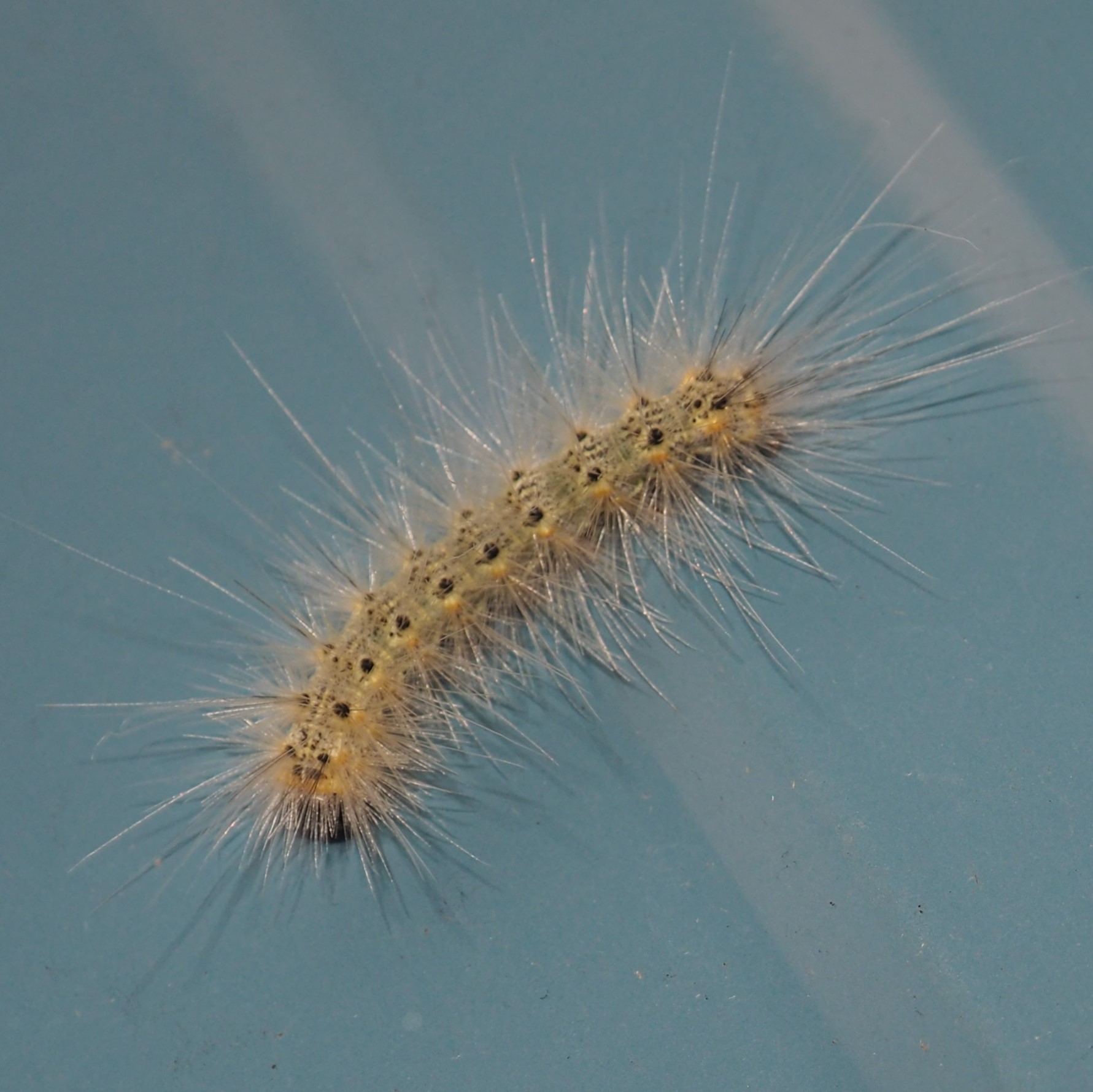
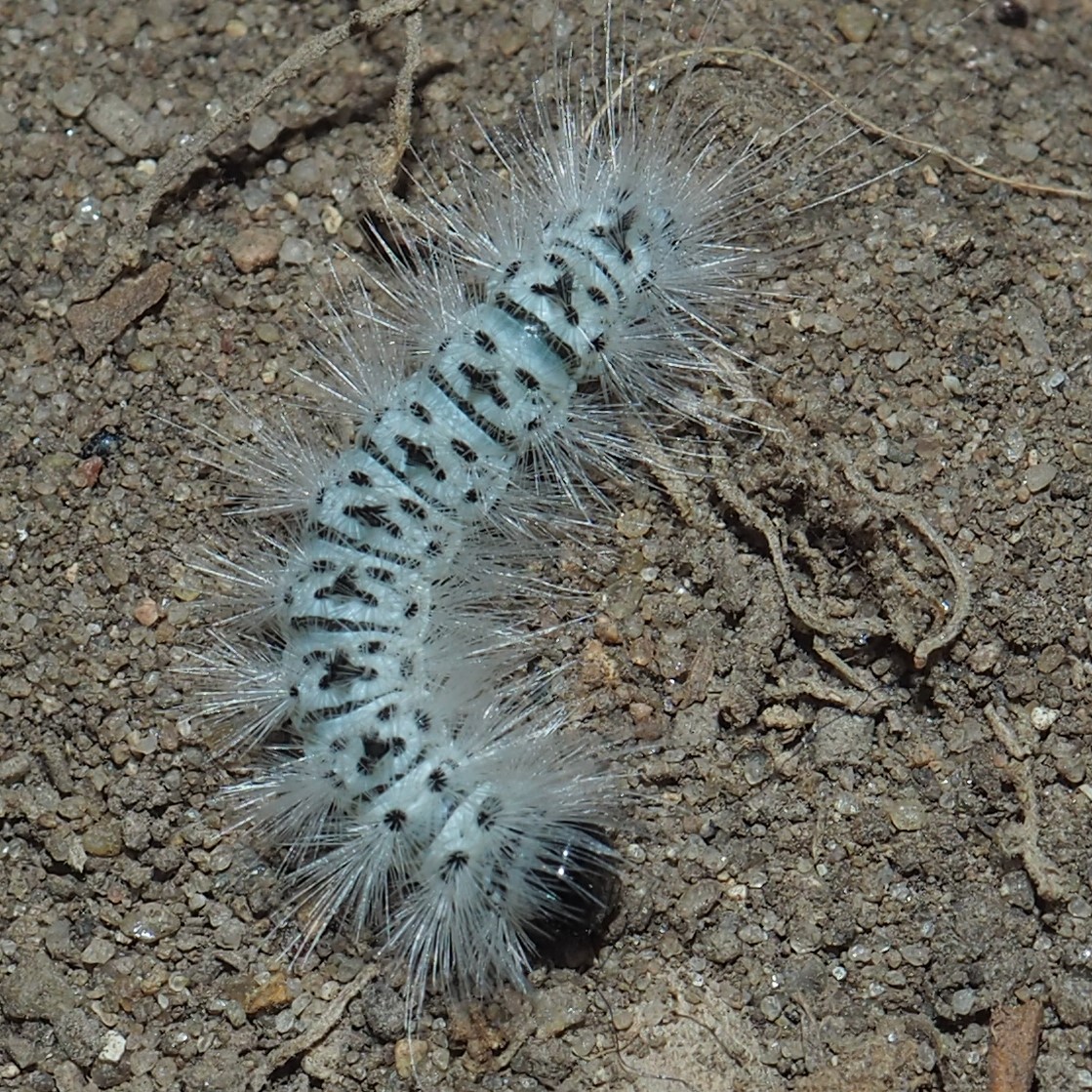
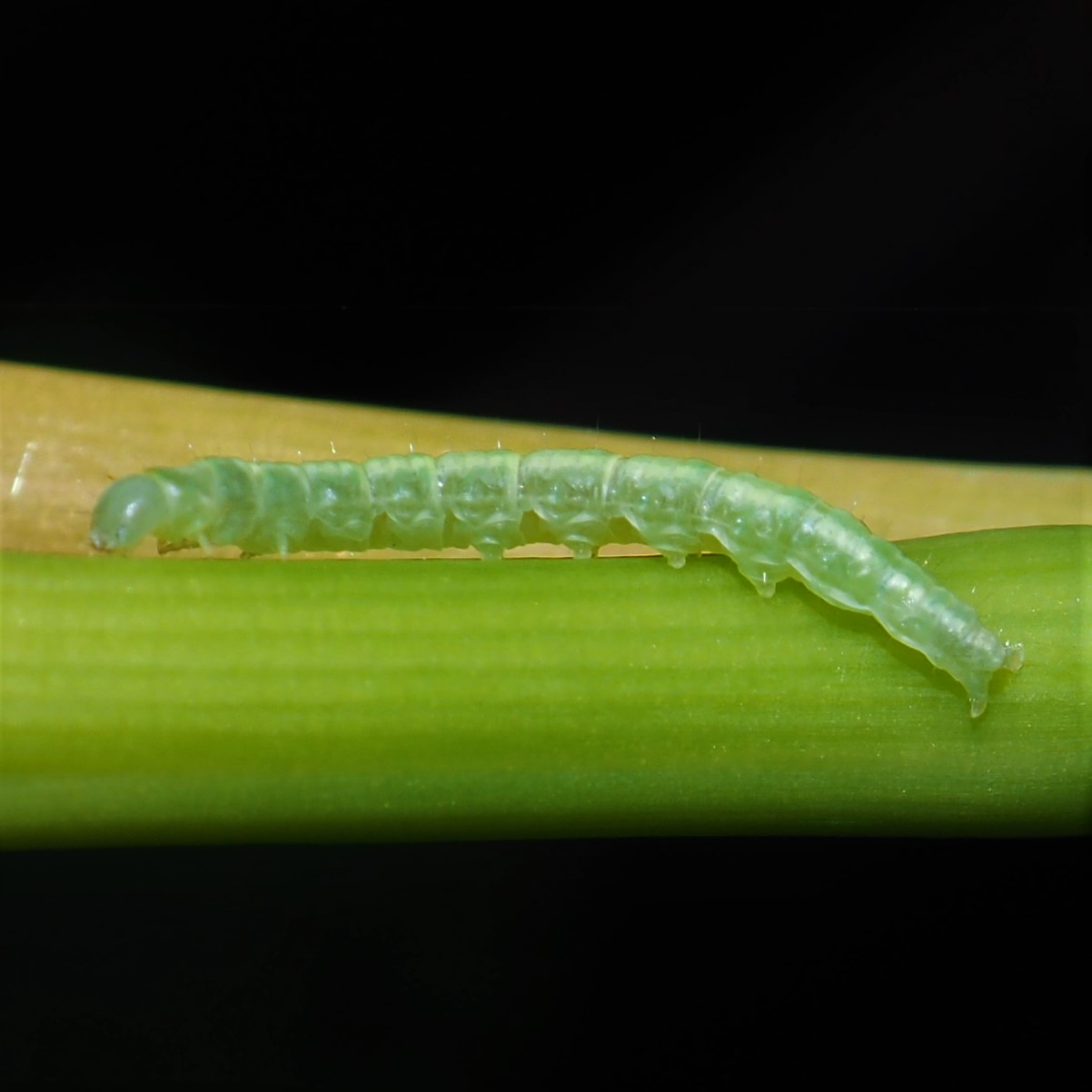
When I was cropping this next picture, I thought that it was a caterpillar moulting from one instar to another, but it turns out I should have been looking at it as a strange caterpillar in inch-worm posture. It is actually the larva of the Horned Spanworm Moth (Nematocampa resistaria). Next is a real inchworm, a Geometrid Moth caterpillar. This last moth is a Large Maple Spanworm Moth (Prochoerodes lineola). Now we've seen two Spanworm Moths, the first I ever saw.
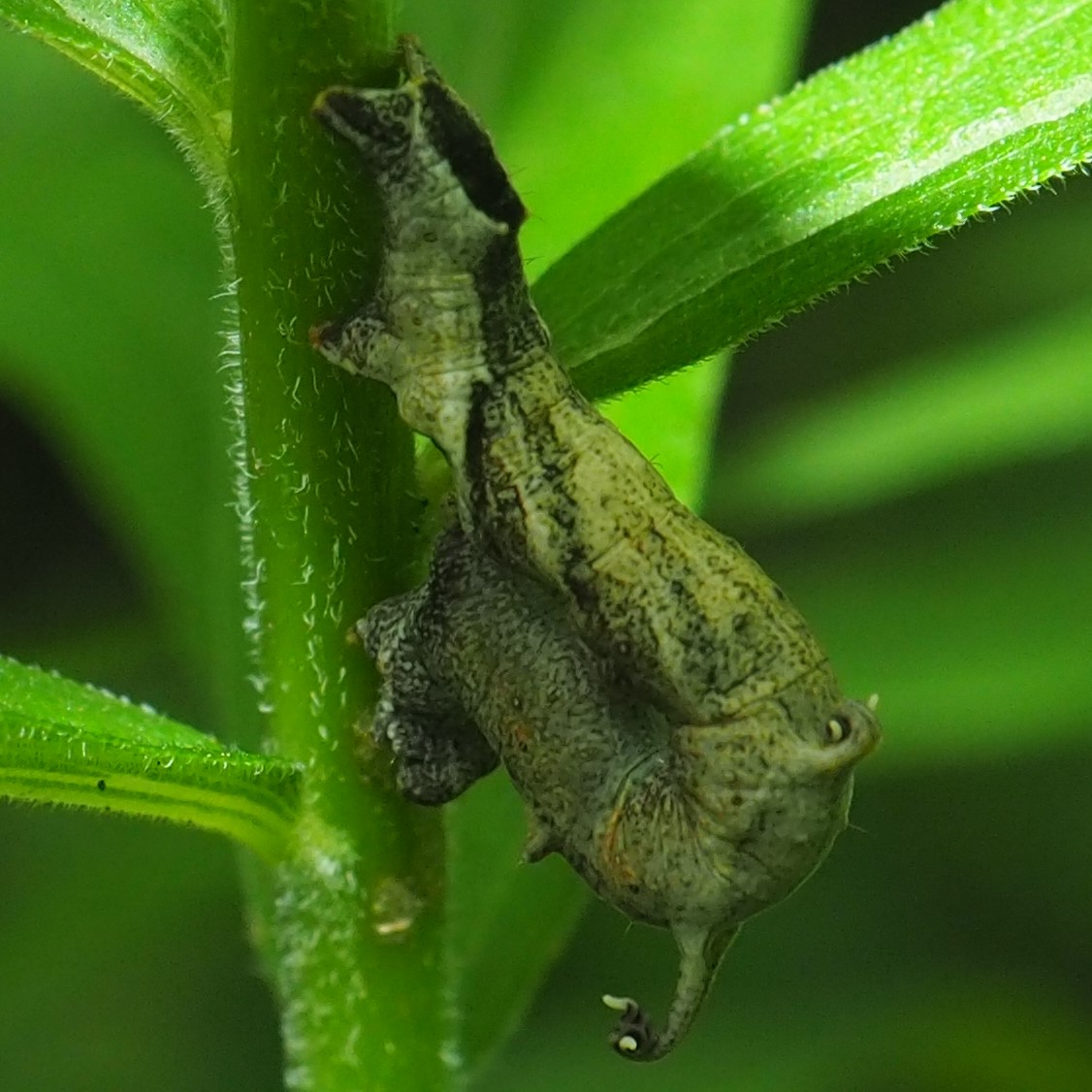
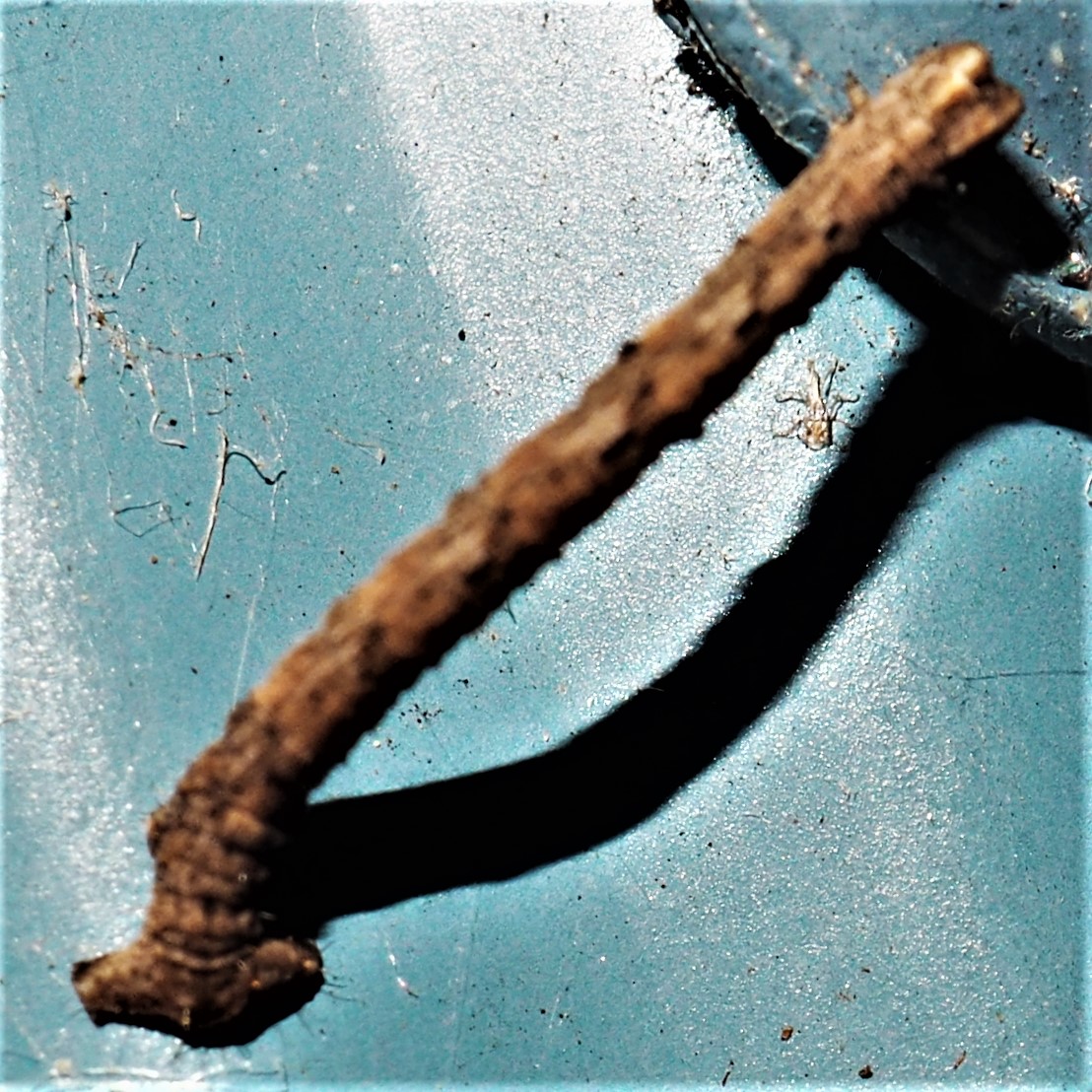
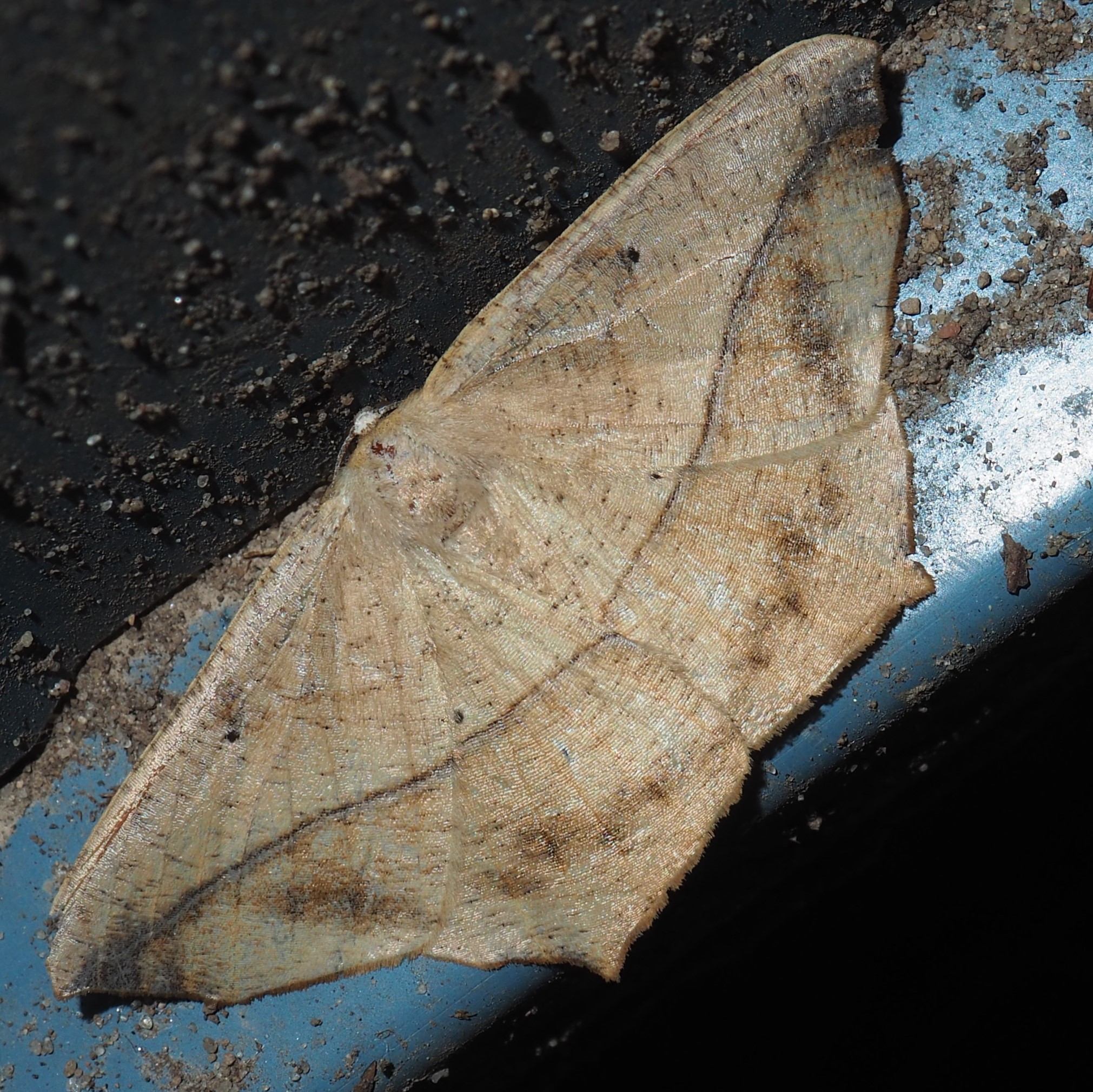
Here are a few more little moths, so far unidentified. First is a Spindle Ermine Moth (Yponomeuta cagnagella). A lot of long skinny moths like this cause leaf mining, but this one seems to build a great tent like the Tent Caterpillars. But the really surprising one was number 2, which I confused at first with a Lightning Beetle! What an interesting pattern in what stunning colors! Makes me want to make some kind of garment with that pattern! Maybe a nice scarf.... It's the Painted Lichen Moth (Hypoprepia fucosa). The third huge moth is a Promethea Moth, one of the giant Saturniid Moths. Staci Stuart sent it along - it showed up on her friend Ronnie Sim's Facebook page. I haven't seen one of these since I was a little kid in Virginia! Fourth is a group of Somethings hatching from a Black Walnut leaf. I still haven't heard what it is!
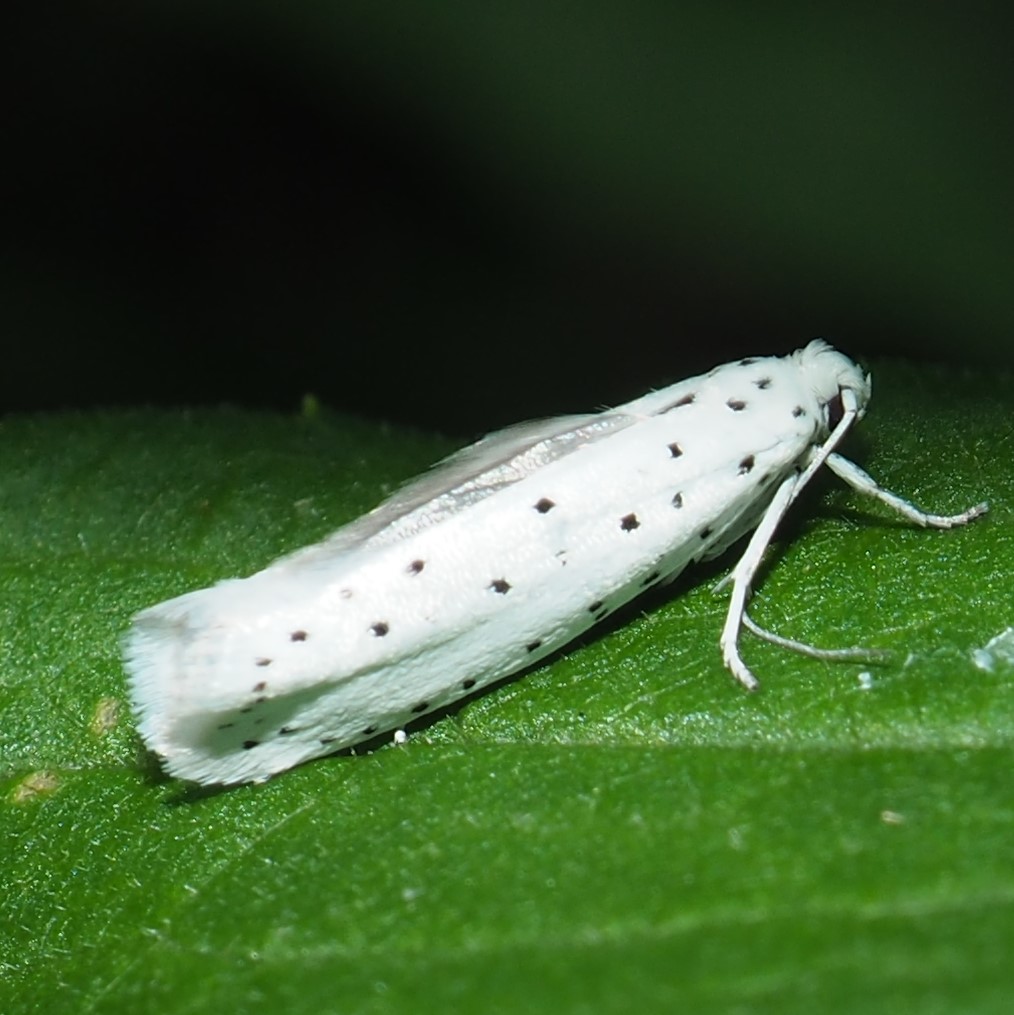
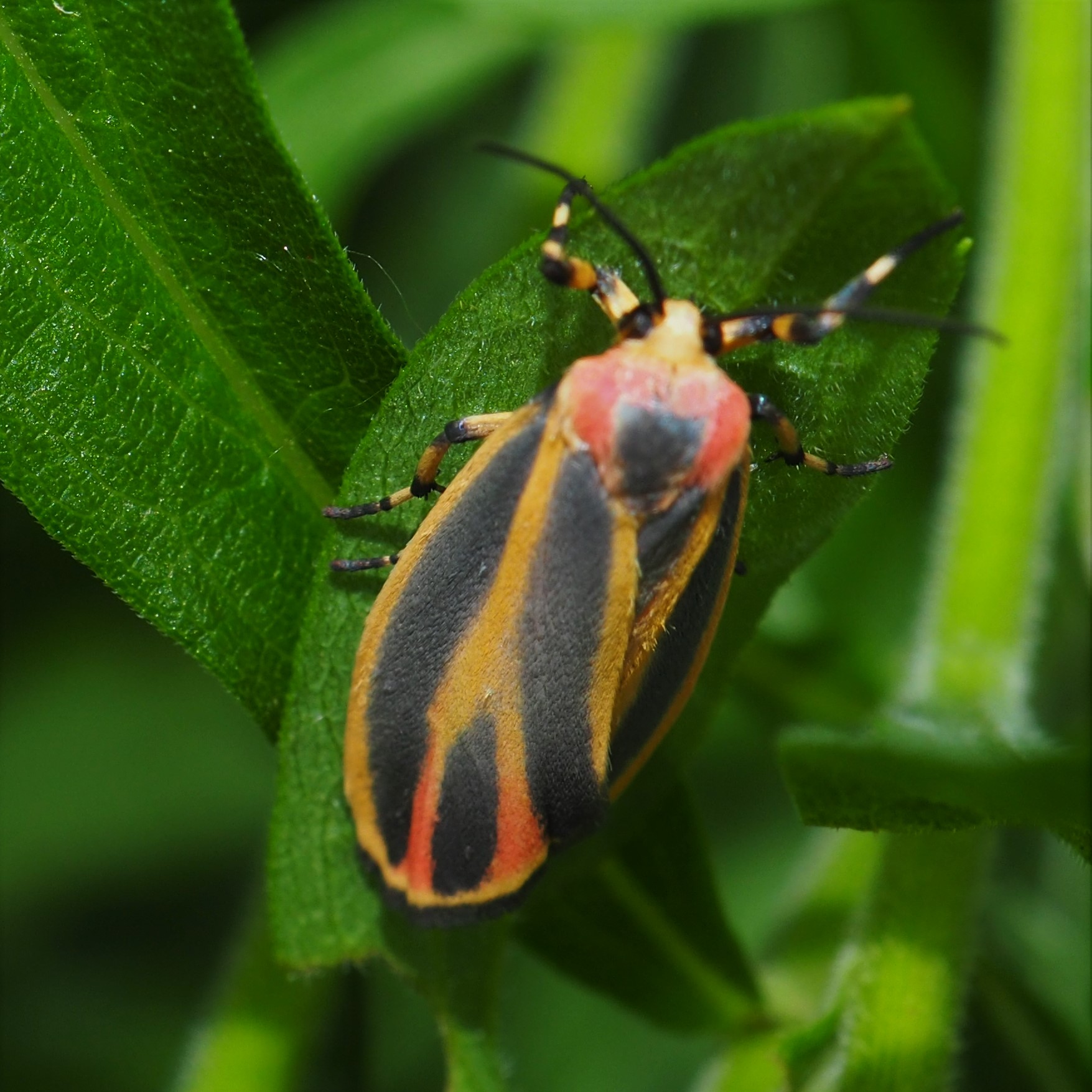
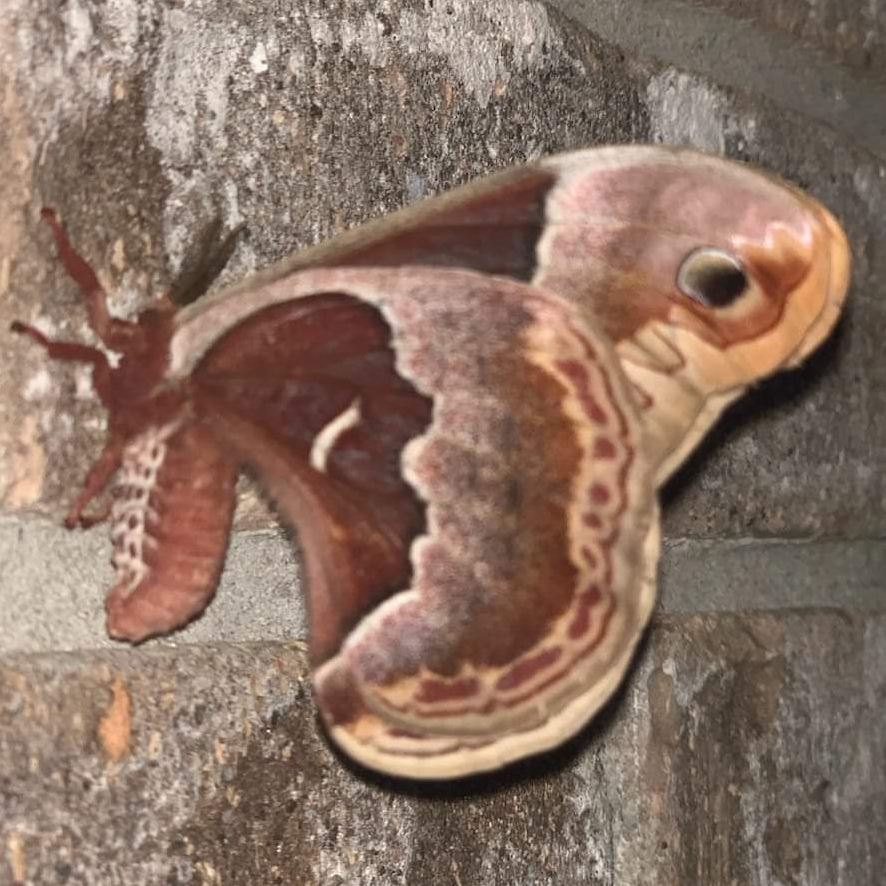
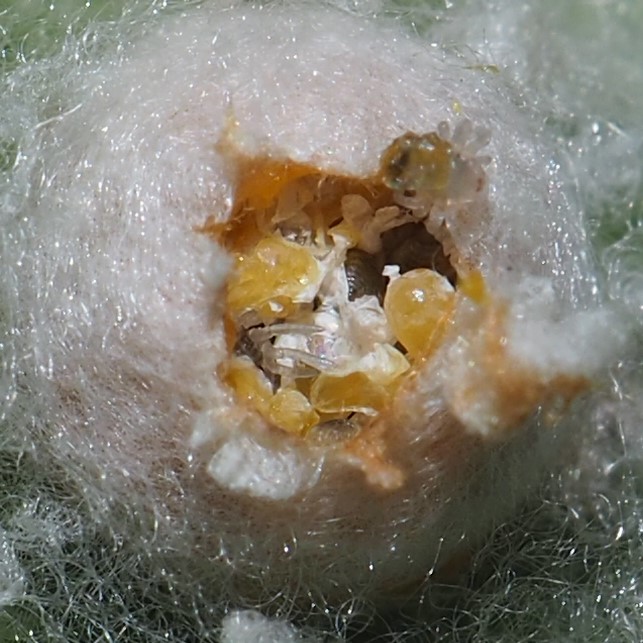
I only managed to capture one Dragonfly this week. It is one of the Meadowhawks.
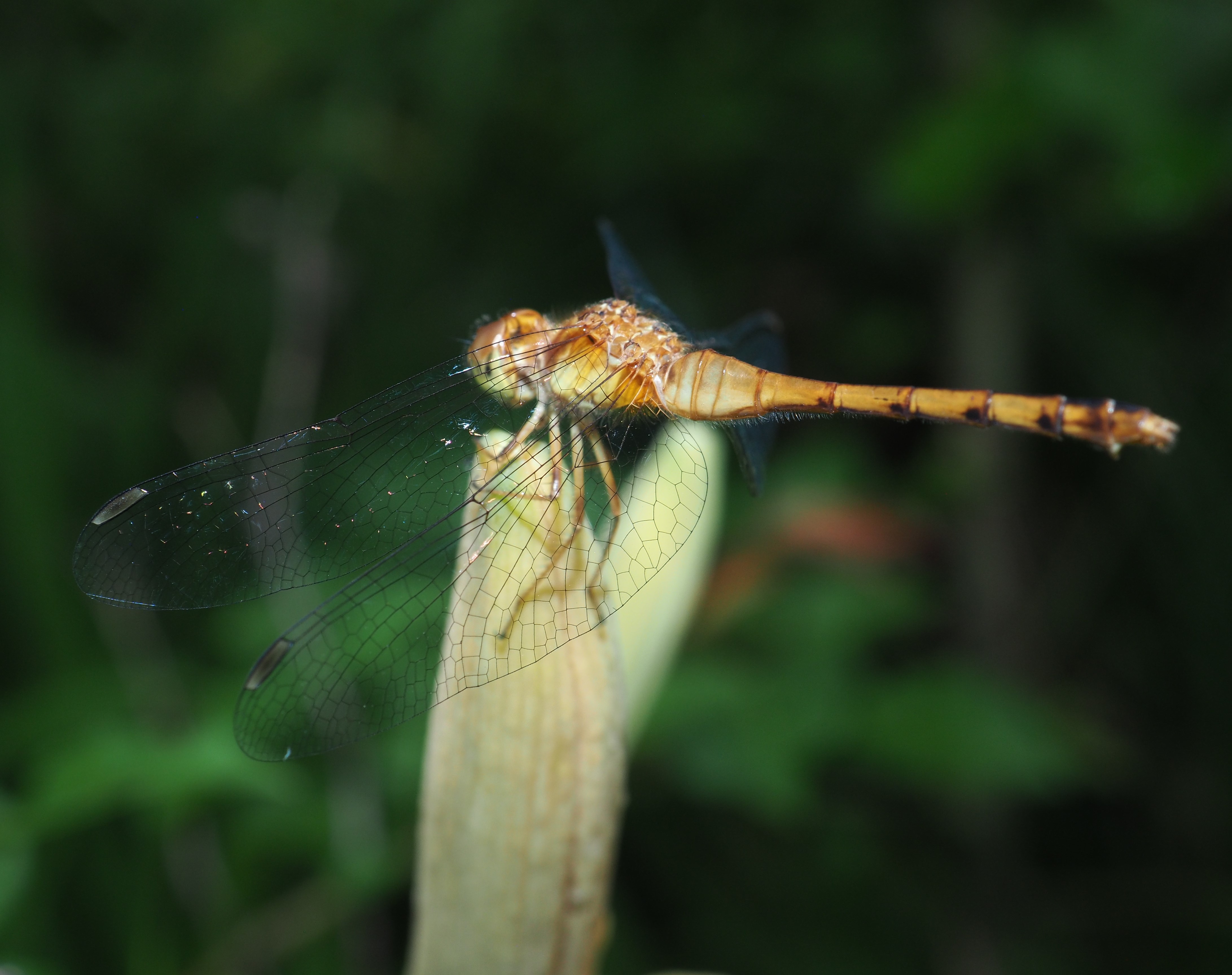
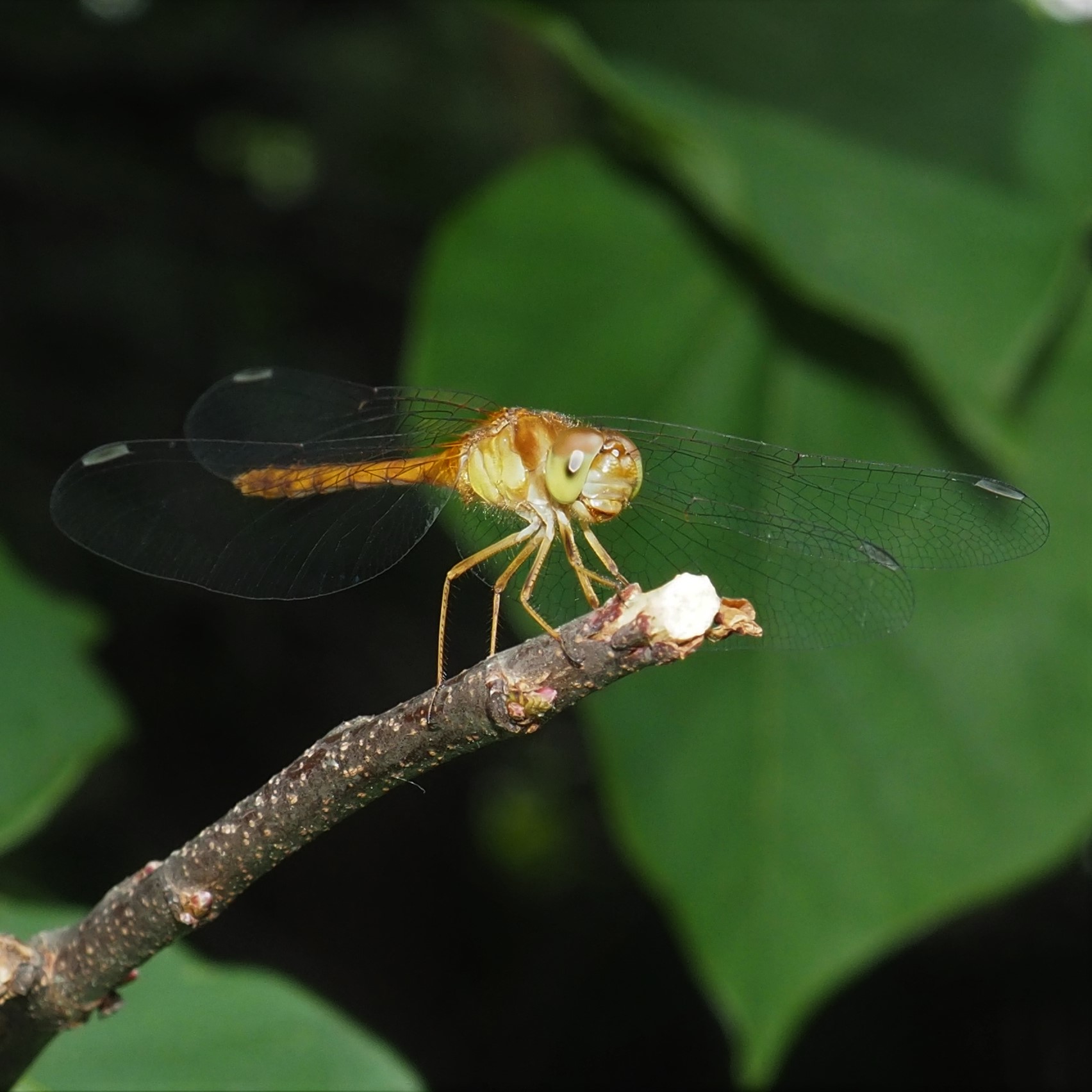
The one I'm sorry I couldn't snap was the
Phantom Crane FlyThis beautiful fly has black legs but white joints and so when it flies in a shady spot you only see the white bits and it looks like a ghost. That grey Crane Fly is the only one that stuck around from last week. It was quite the week for fruit flies though, like this spotted-winged one and the following orange one. Somehow a lot of big buzzy flies got into the house, but almost as annoying were the tiny fruit flies (picture 3). Here are a couple at the bottom of my coffee mug! Isn't it amazing how beautiful those pesky little flies are up close?
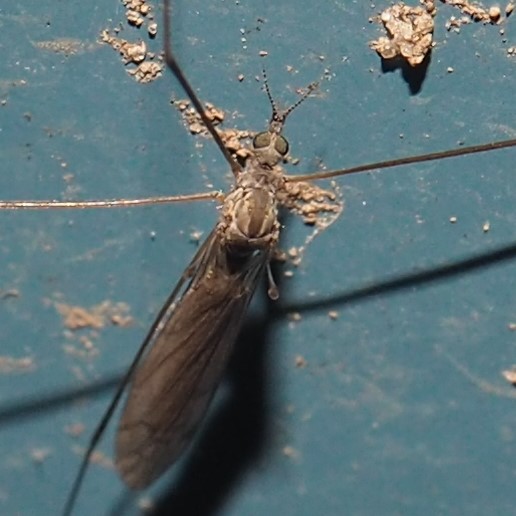
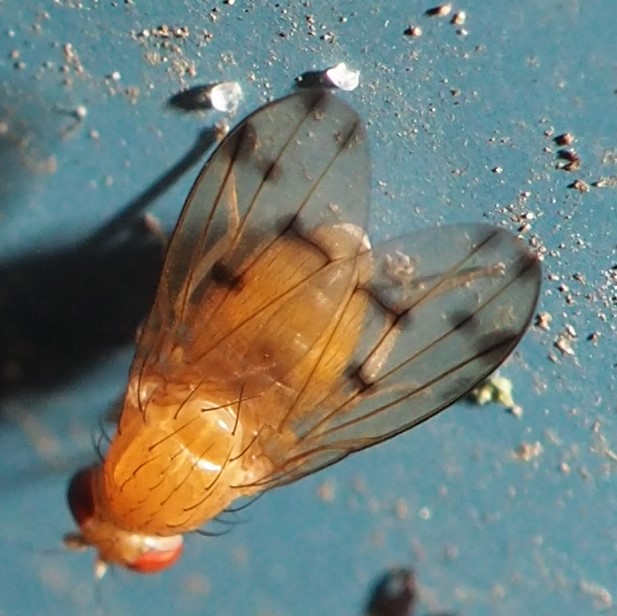
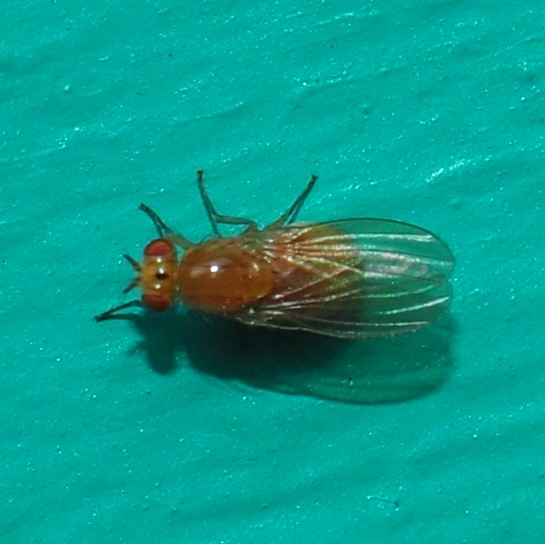
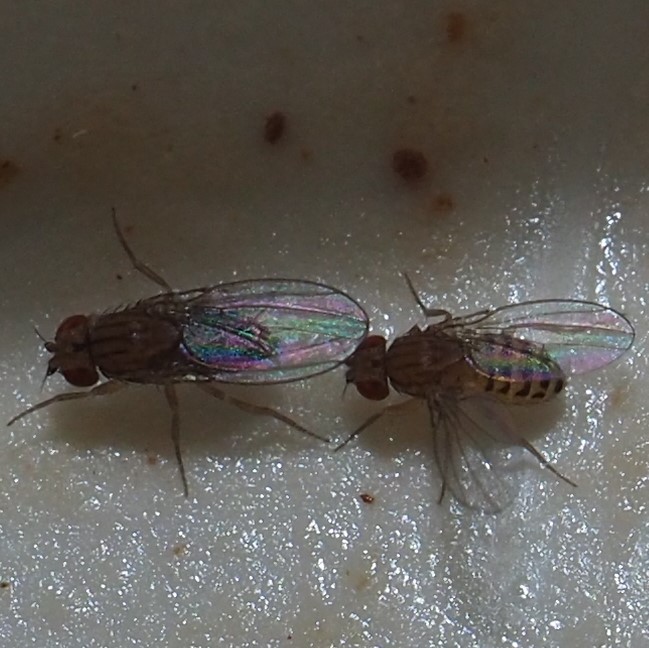
The tiny Hover Flies, in this case Toxomerus geminatus, were still everywhere though maybe thinning a bit. There were also lots of tiny flies with iridescent bodies, like in number 2. The Stilt-legged Rainieria genus also shares some of the colors we like in our flies. And I'm also fond of this tiny fly, which I've only seen once to remember.
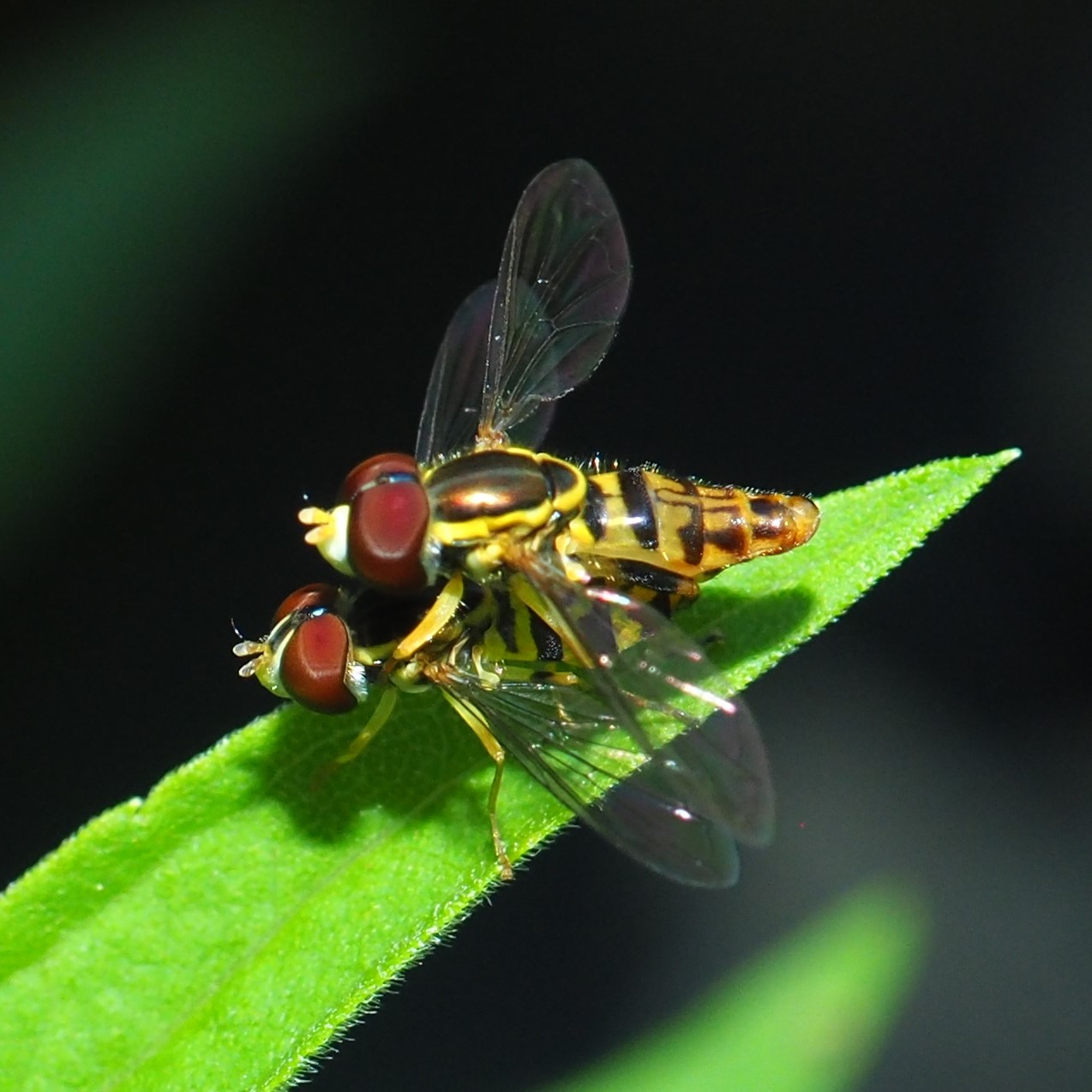
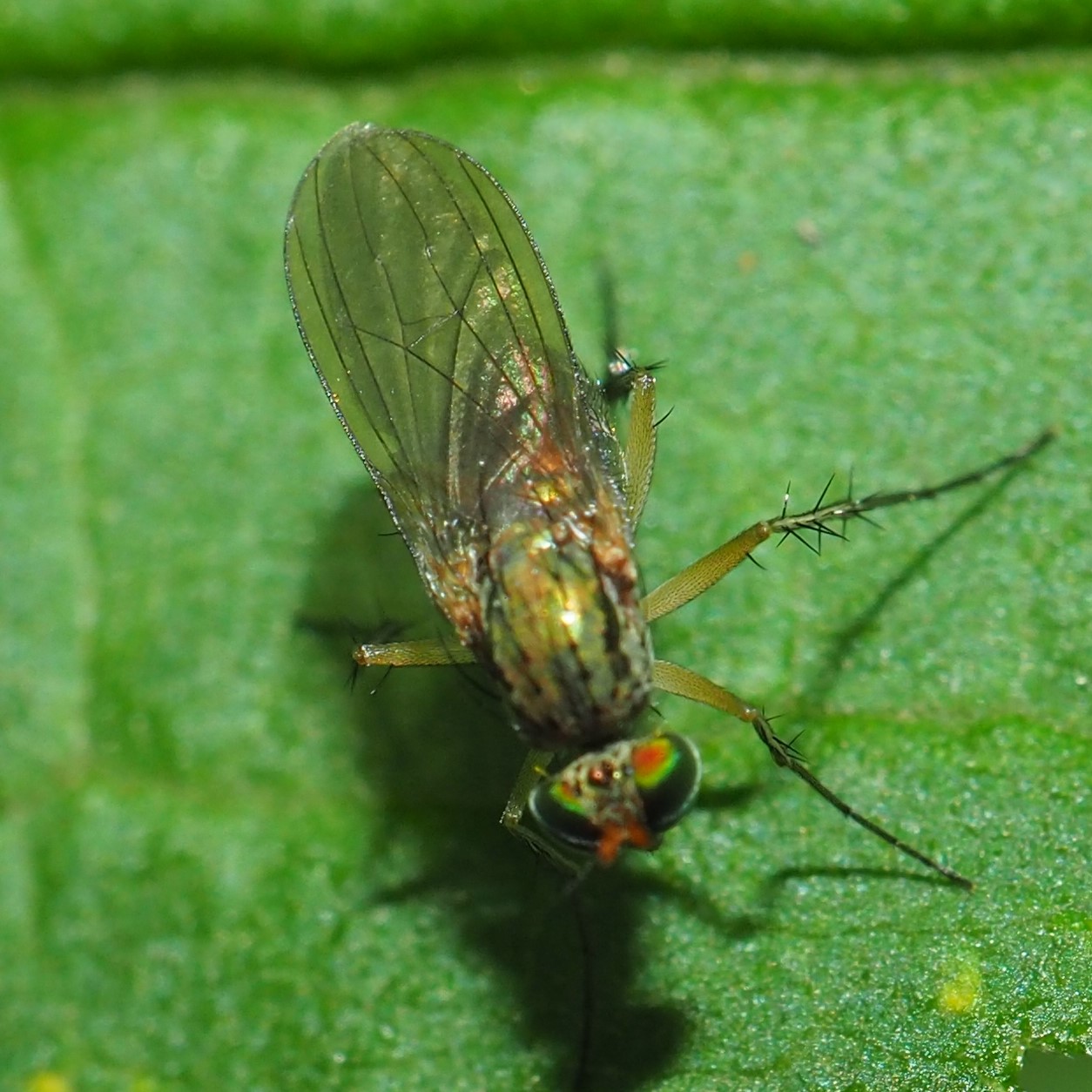
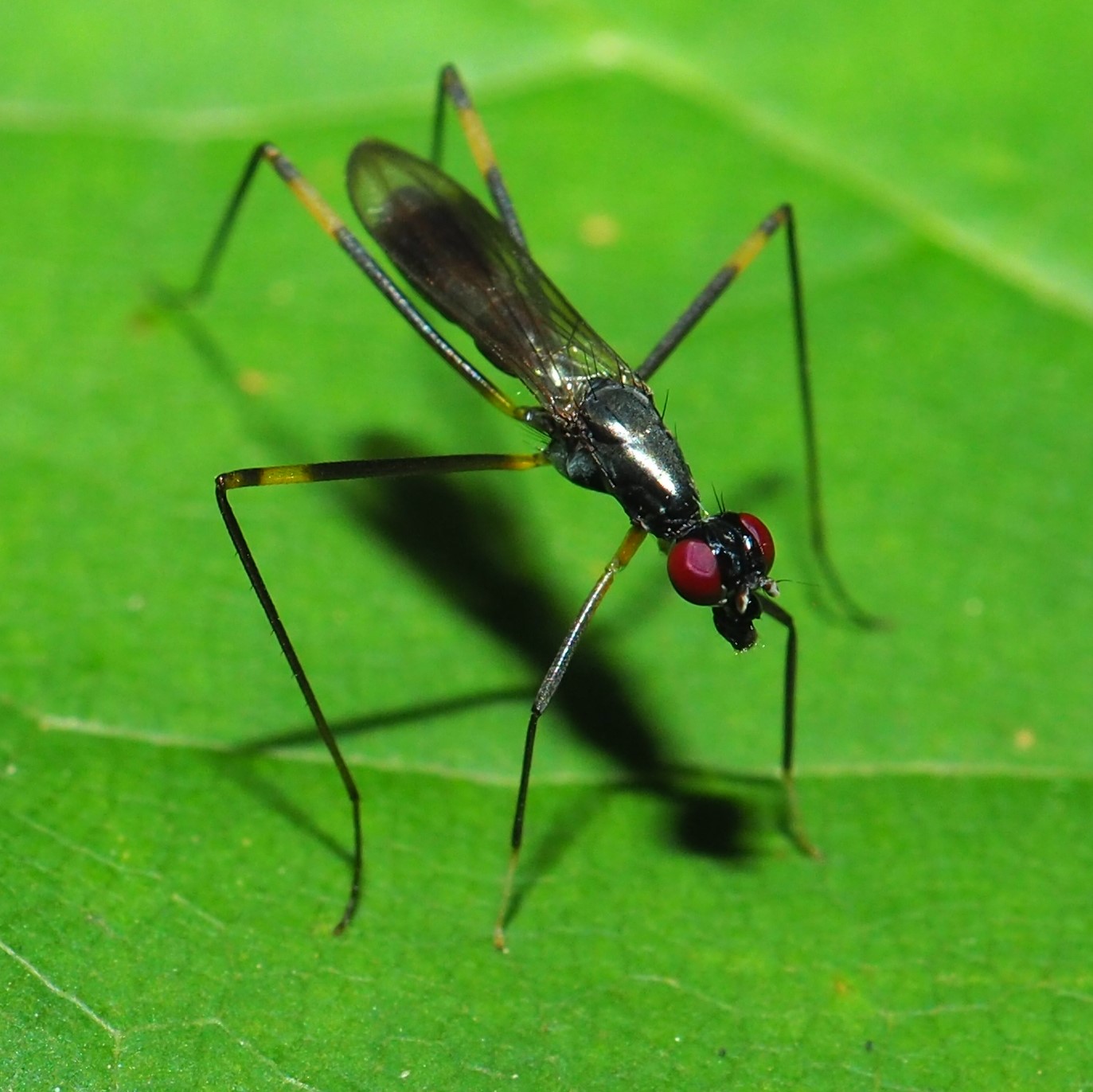
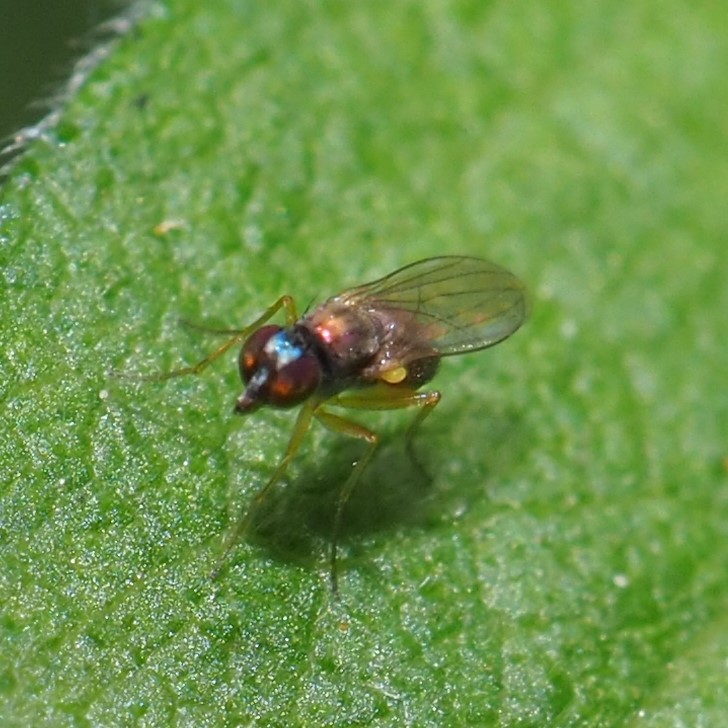
I've seen this large Robber Fly (Efferia aestuans) quite a few times lately. It seems that if you see one sitting quietly, it is probably going to be enjoying a snack it found in the air somewhere. The one we saw last week, that one that looked as if its round fly eyes had been deflated, is still here, and I still don't know what it is. You can probably see a Moth Fly almost every day.
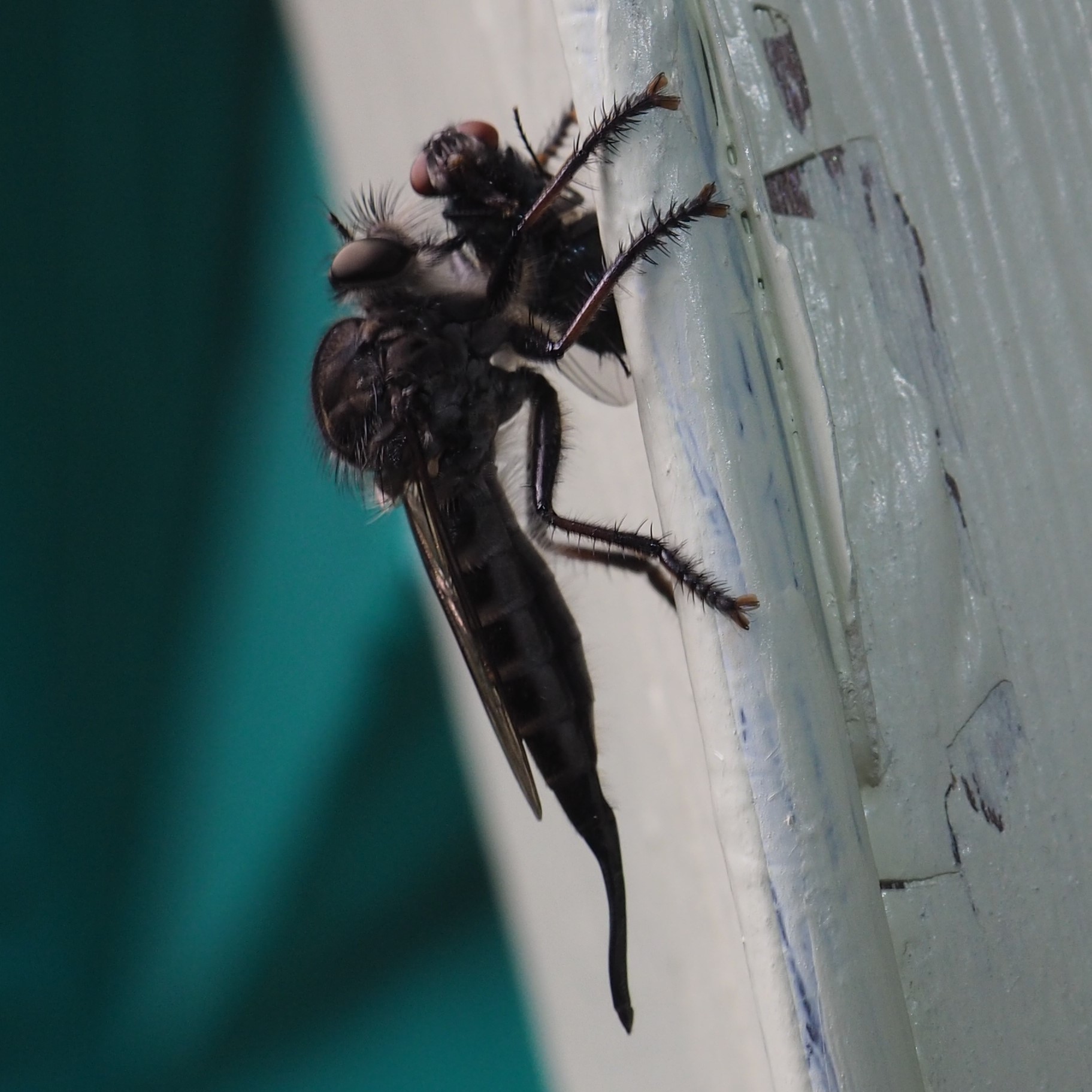
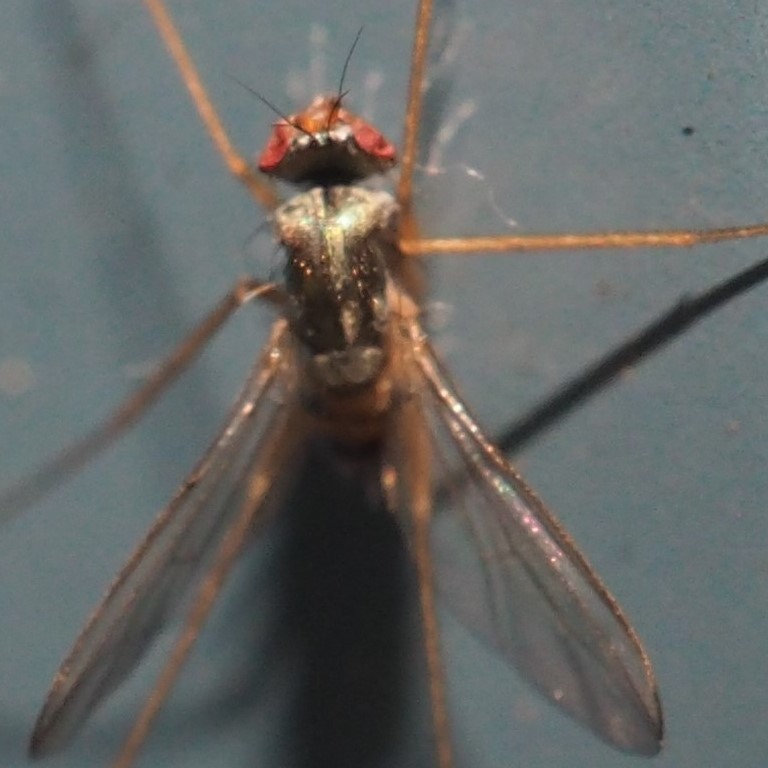
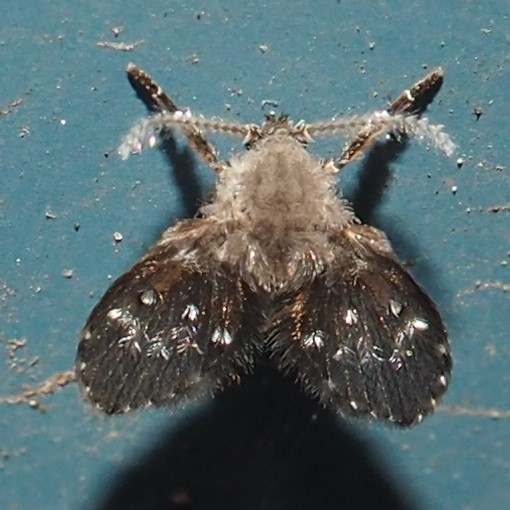
This fly looked different in every shot, and I still don't know what it is.
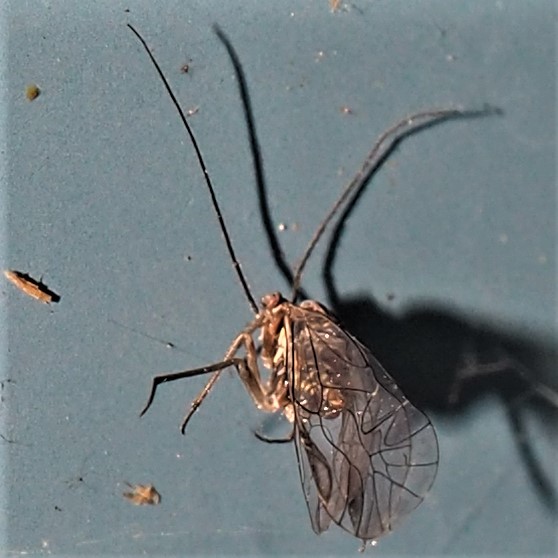
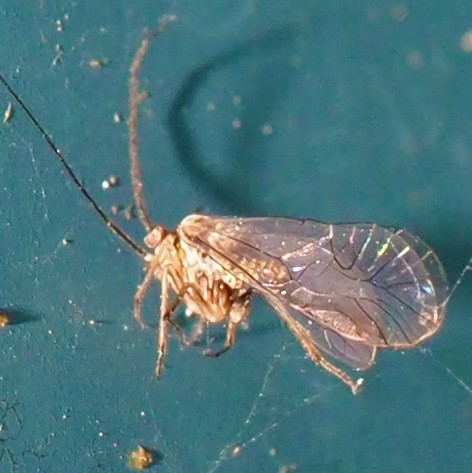
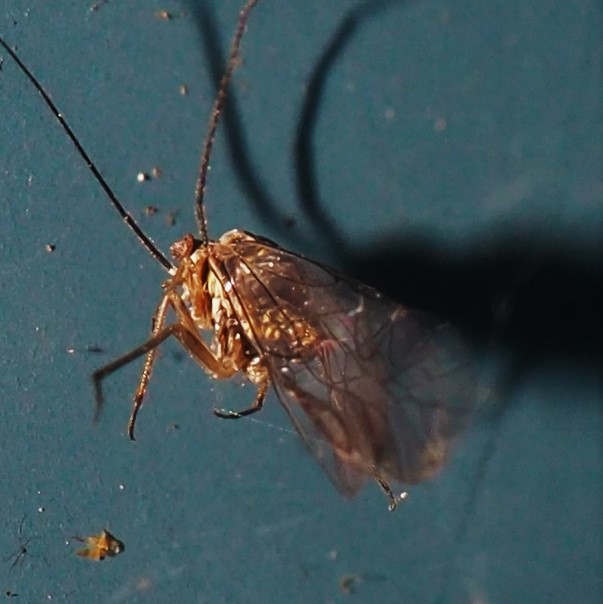
This fly appeared several times in several places over the past few days. I've still no idea what that long appendage is. But the fly of renown also appeared as prey for a little crab spider, probably of genus Mecaphesa. Now the Mecaphesa are known to change colors depending on their surroundings. But it seems that this little guy also changed color from EATING the red-bodied fly, sort of like when a flamingo gets redder from eating more shrimps. A nice conversation is taking place in iNat, specifically at this observation .
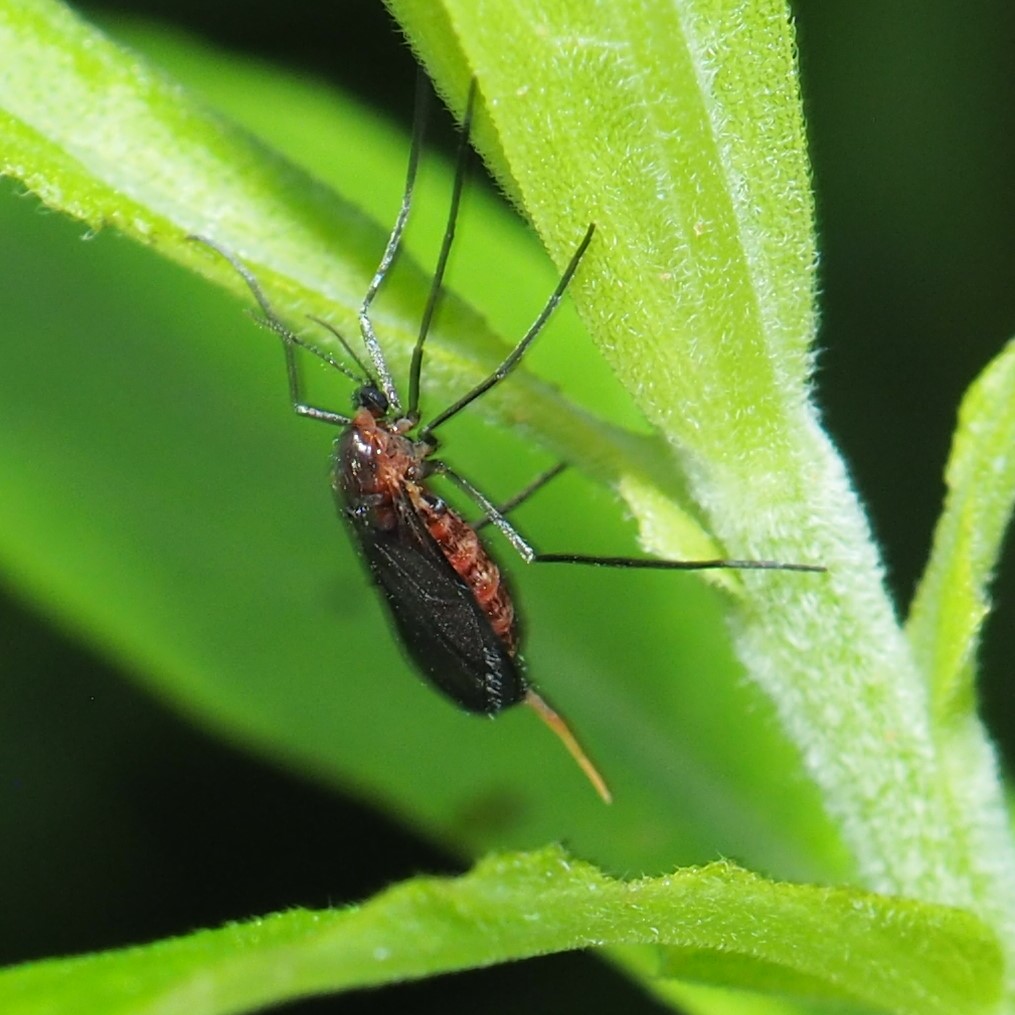
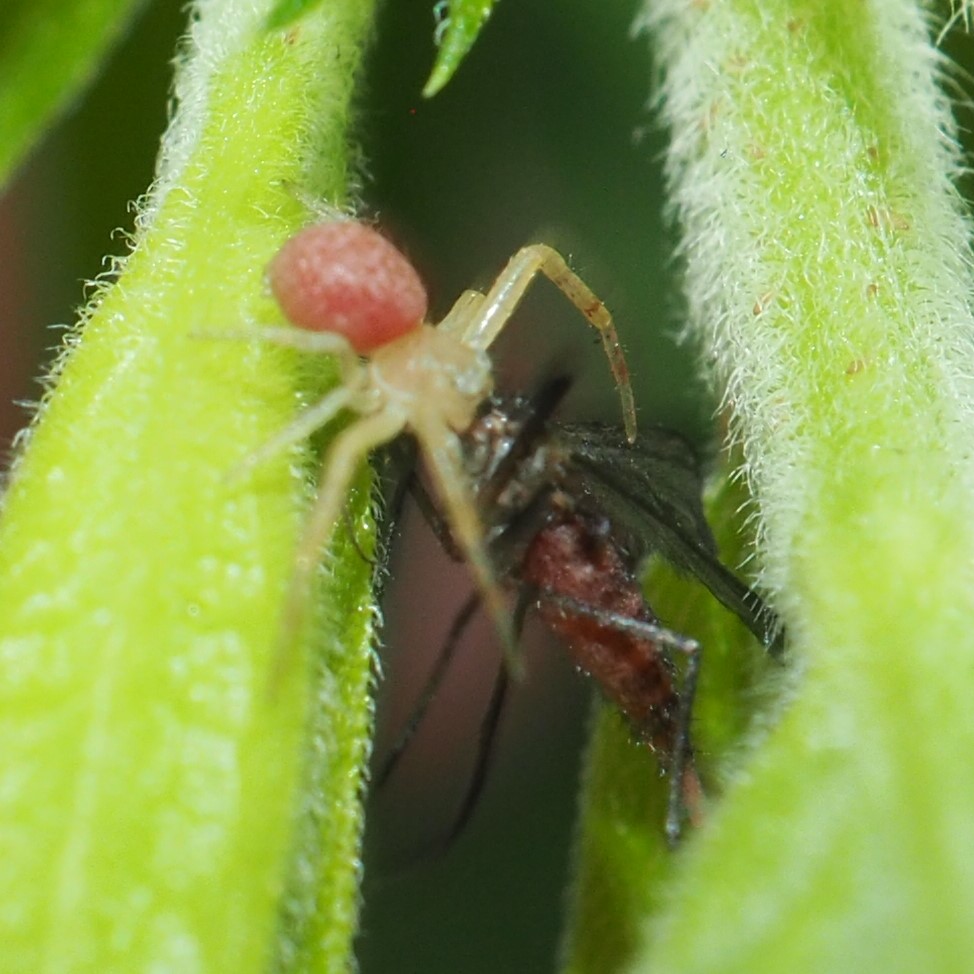
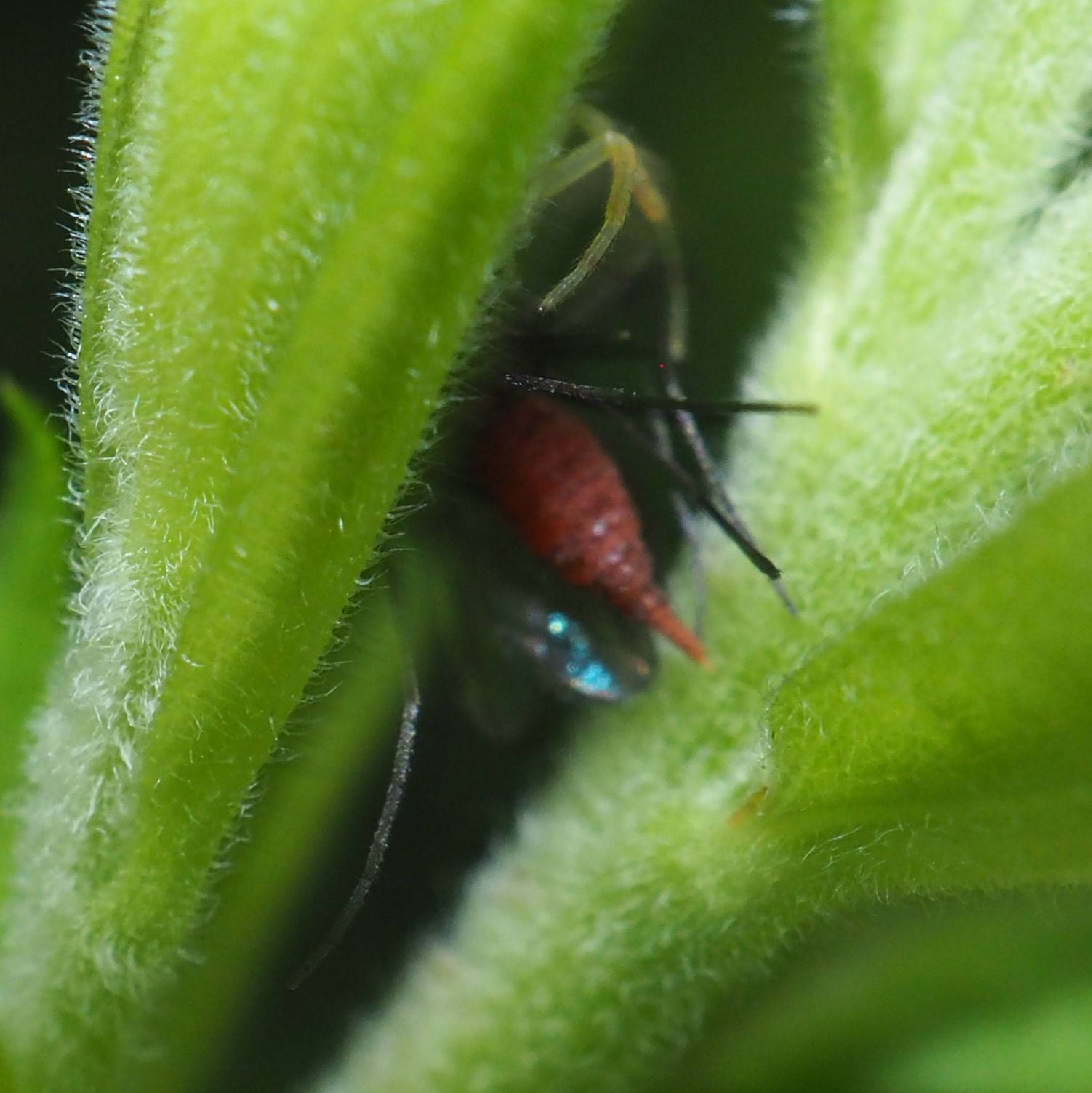
Froggy really is looking like an adult frog these days. He still speaks to me if I happen to be out there, and his word of choice does seem more and more like "Gollum", and so I think that may become his name soon. The fishes really have caught onto the song that tells them food is coming. Here are a few of the twelve fish remaining from last summer. (Those little white dots are the fish food.) The raccoons have been doing a terrible job on the pond, shredding the lily plants in order to chase the fishes. But here is one that the Pest Control people caught. I hate not to co-exist with the raccoons, but the plants would have been nice to have around during this heat wave. They do a great job of shading and cooling the water and hence keeping the pond a haven for all the little creatures (like dragonflies, etc) that come to visit. FLASH! I just looked out the window and saw that one cage contains a possum, and the other one looks as if it caught a raccoon. That would mean three raccoons so far!
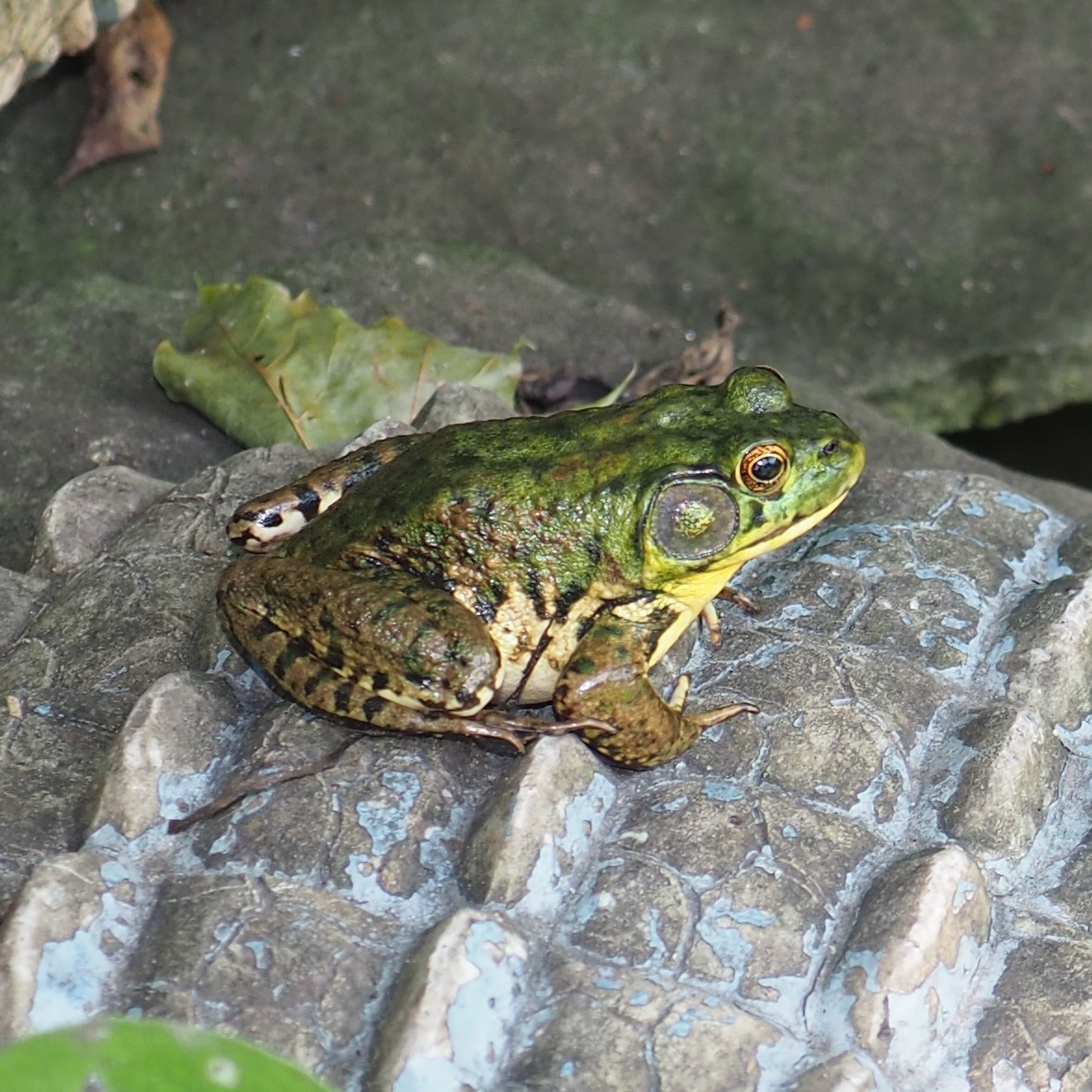
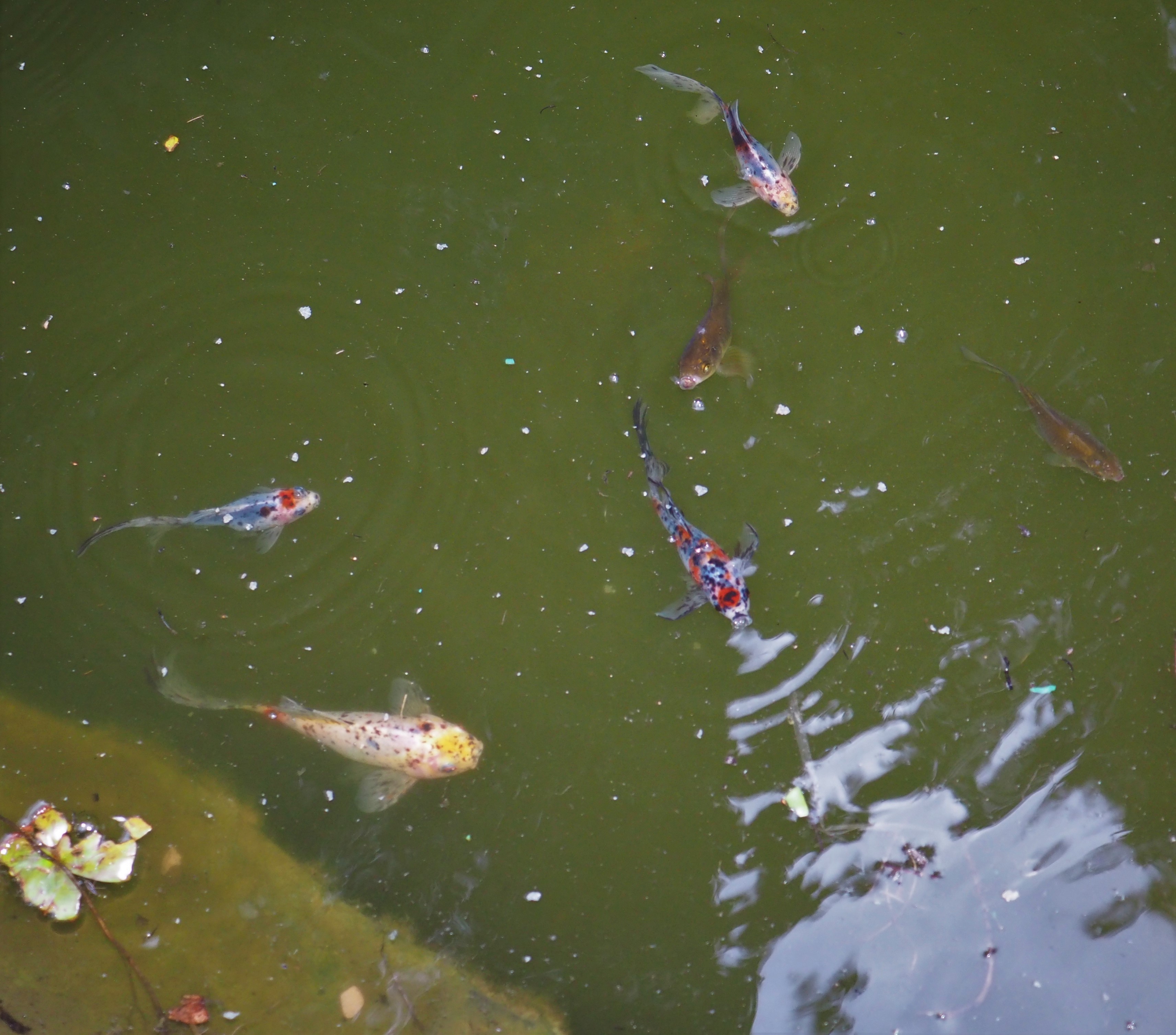
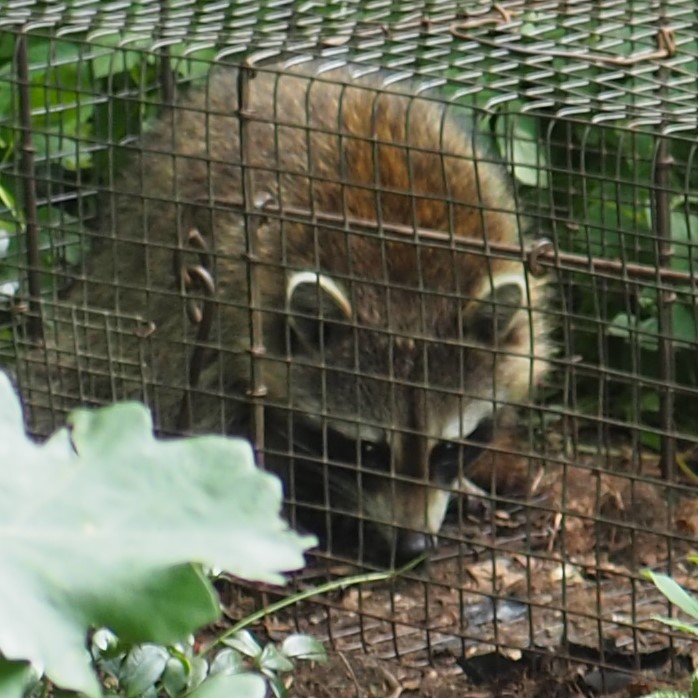
We really lucked out this week. We found a Grasshopper nymph (the tiny one from last week), a Scudderian Bush Katydid nymph (the one we've seen many times in smaller forms) - two pictures, and a little Common Tree Cricket.
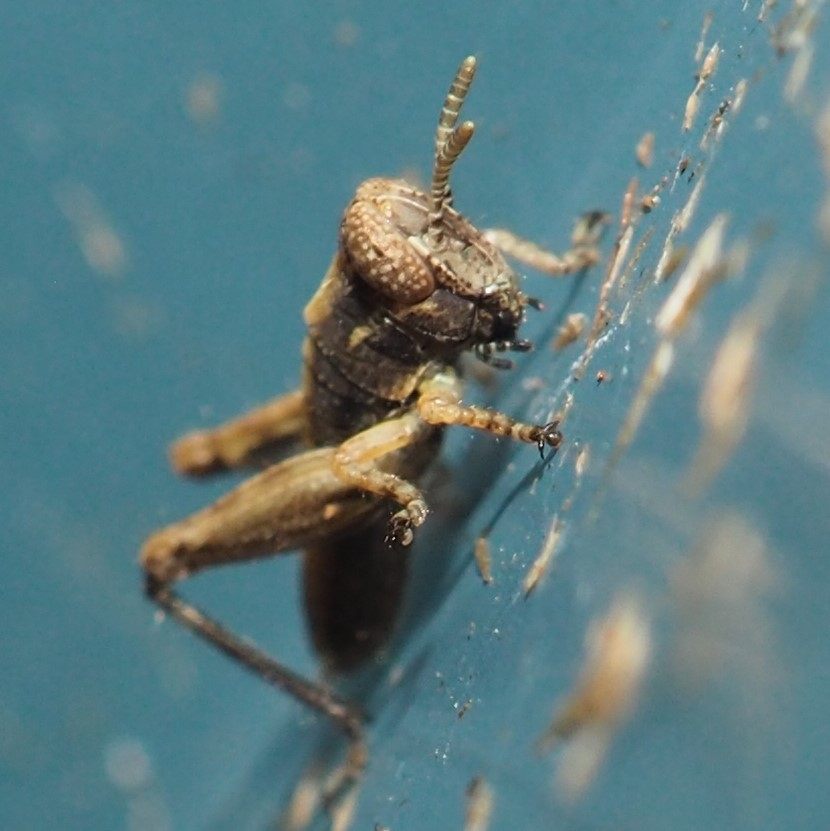
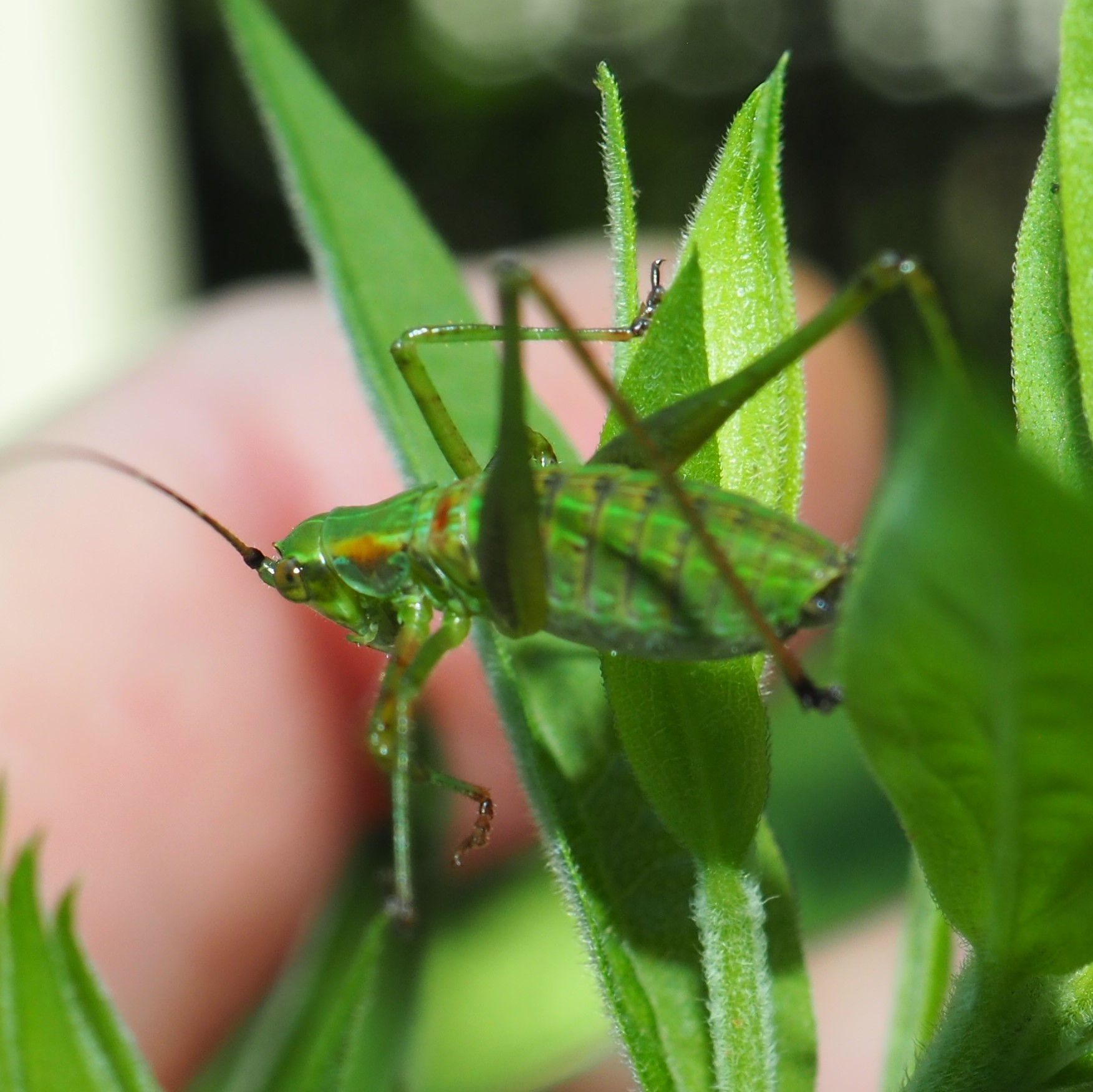
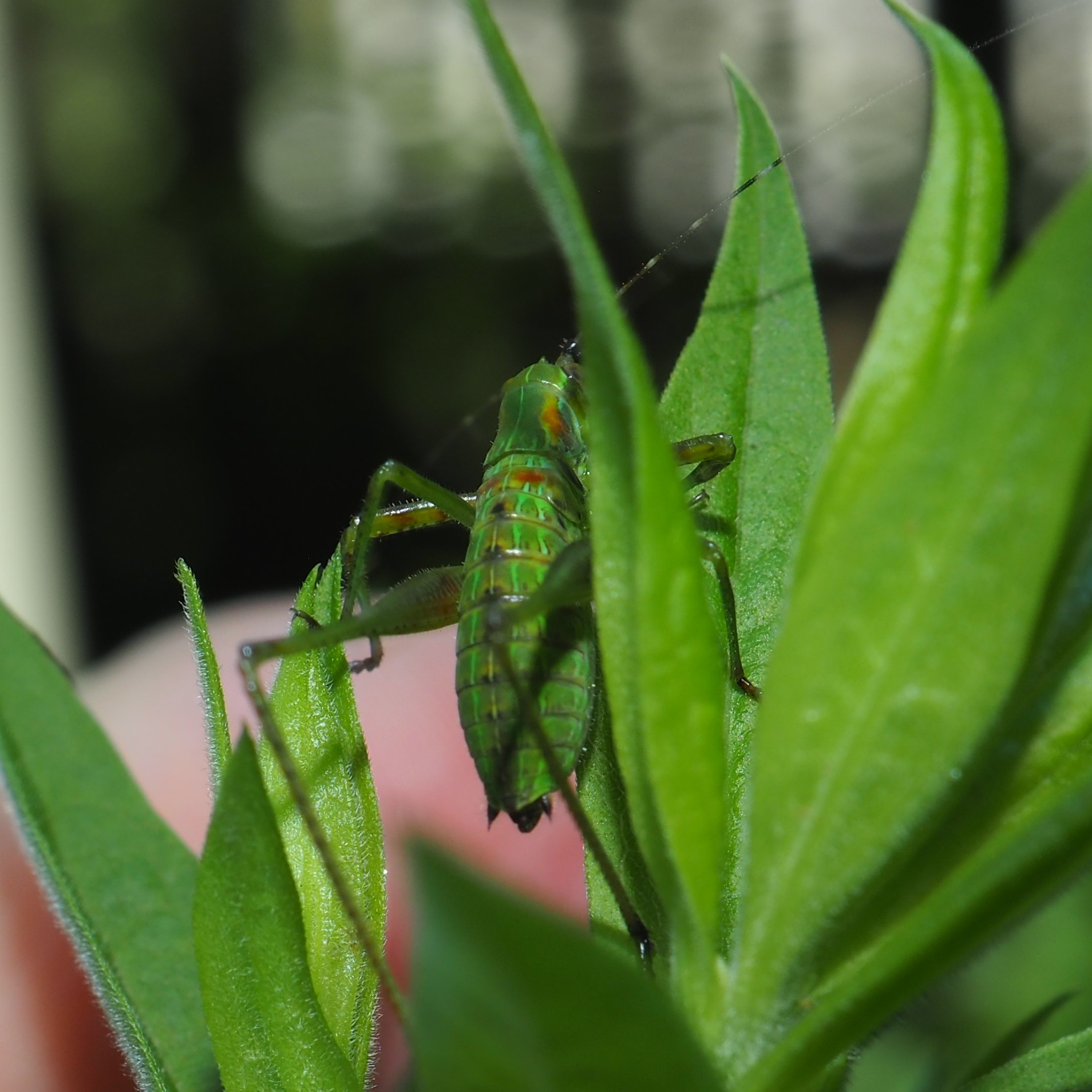
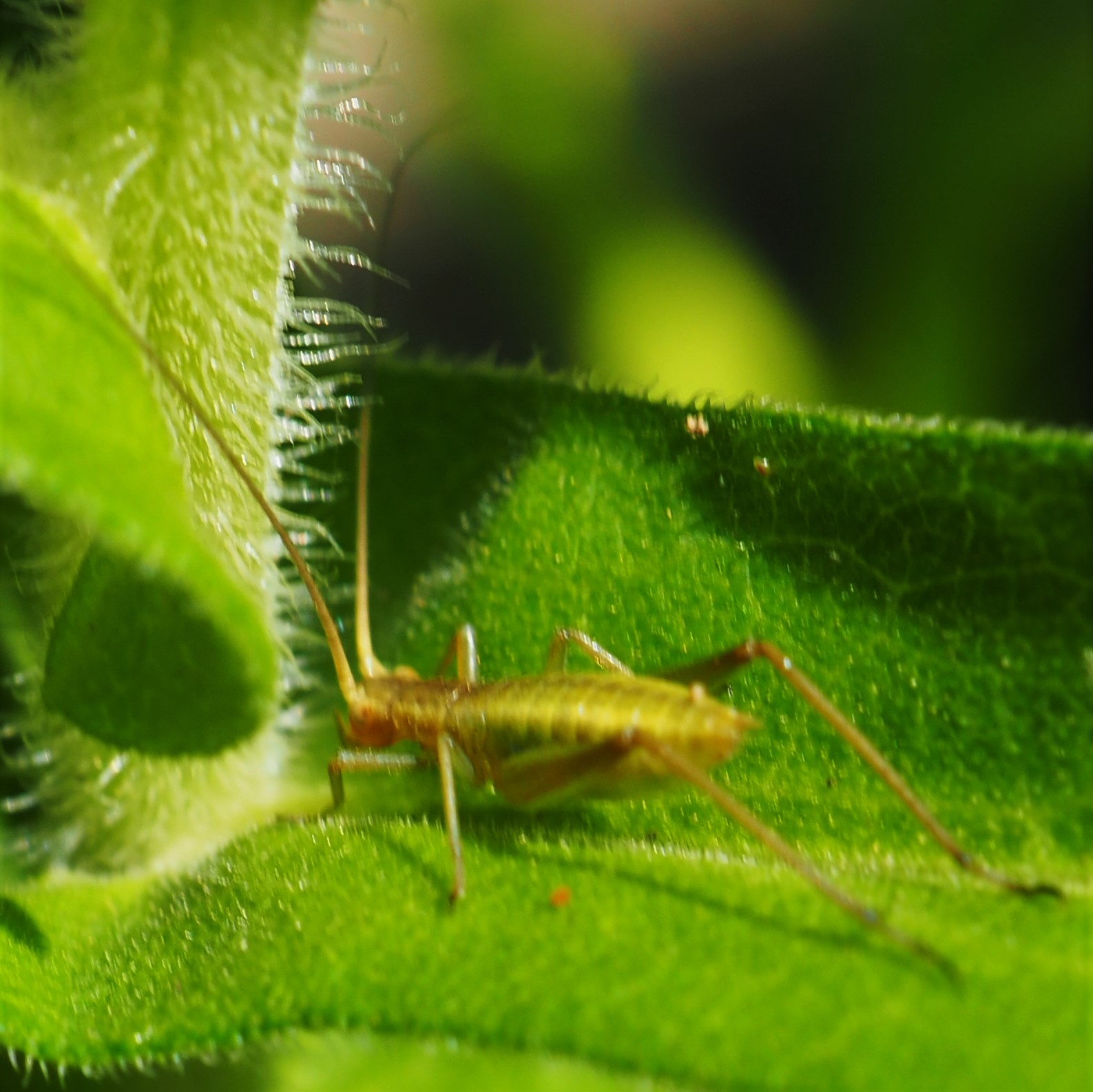
Here we are in the Spiders. Let's start witht the Jumping Spiders. First up, an Asian Wall Jumping Spider(Sitticus fasciger). The second one looks like Naphrys pulex, the Flea Jumping Spider. But somehow the pattern doesn't look right. I think it's because she is pregnant and her pattern got stretched. The third might be a male - the pattern looks more like usual!
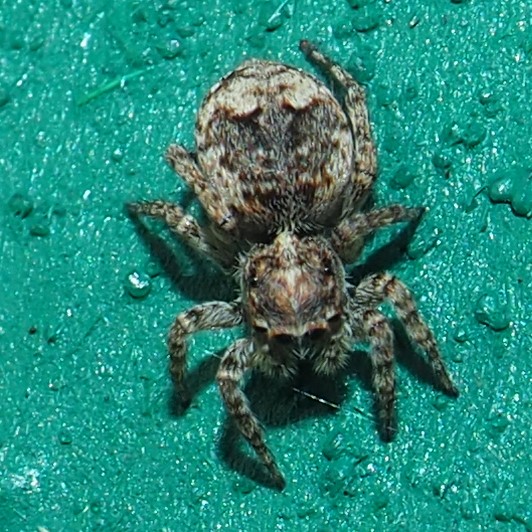
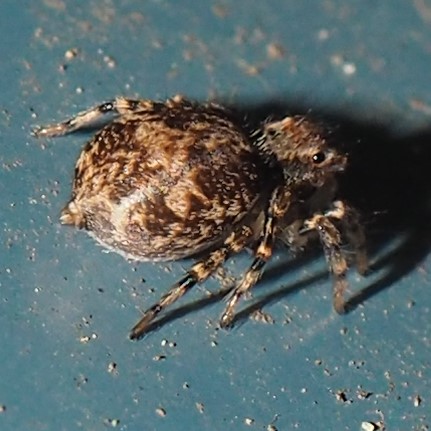
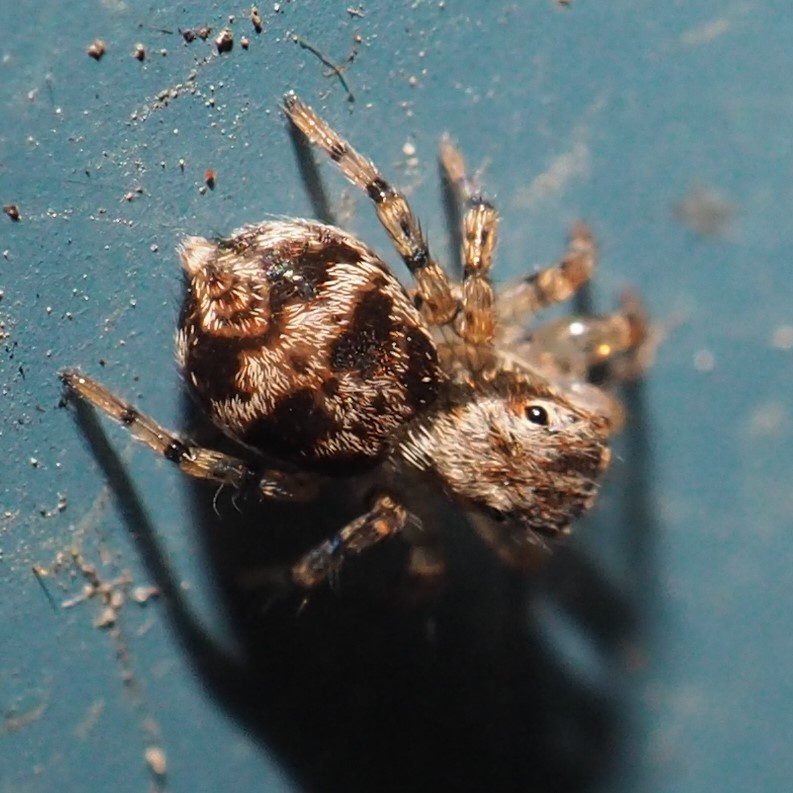
There are a lot of reddish spiders out there nowadays. Are they all the same species? I don't know. I have an emergency call in to Matt and Rebecca. I think I saw the first one of these inside an orb-shaped web. Matt and Rebecca agree that it looks like a young Araneus. Second is a nice stocky reddish spider, likely an orbweaver, maybe genus Neoscona. Third is clearly centered in an orb web, and may be related to the first one.
.jpg)


First is in genus Theridion, and from a Bugguide picture looks like Theridion albidum or a close relative, and its egg sac. The tipoff seems to be the pinkish motif along the spots. The odd-shaped ball in the second spot could be a spider's egg ball. I had a good discussion from @jeremyhussell and @lotteryd on iNat. Jeremy said that it could be the egg sac of a spider of genus Tetragnatha. Third here is a Grass Spider.
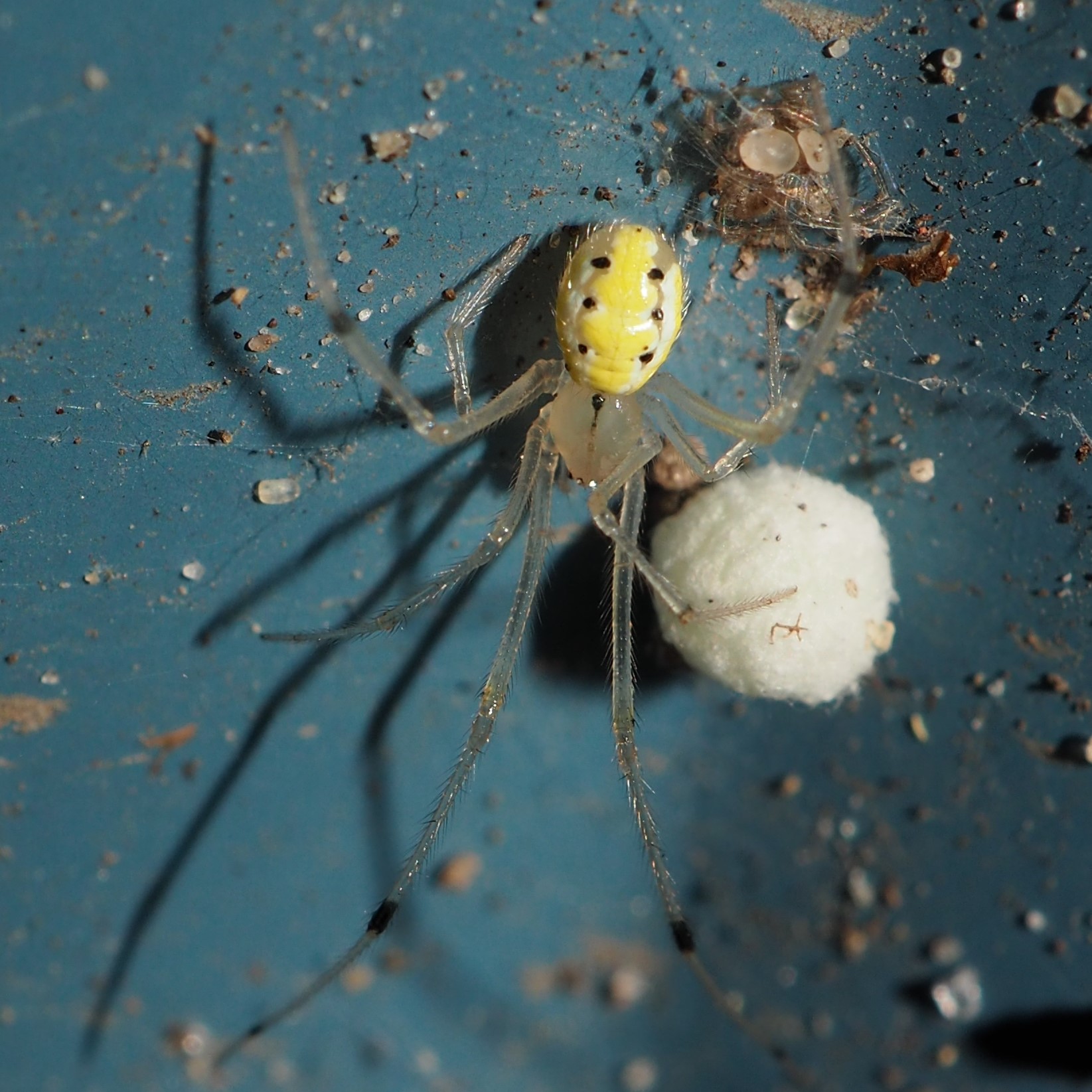
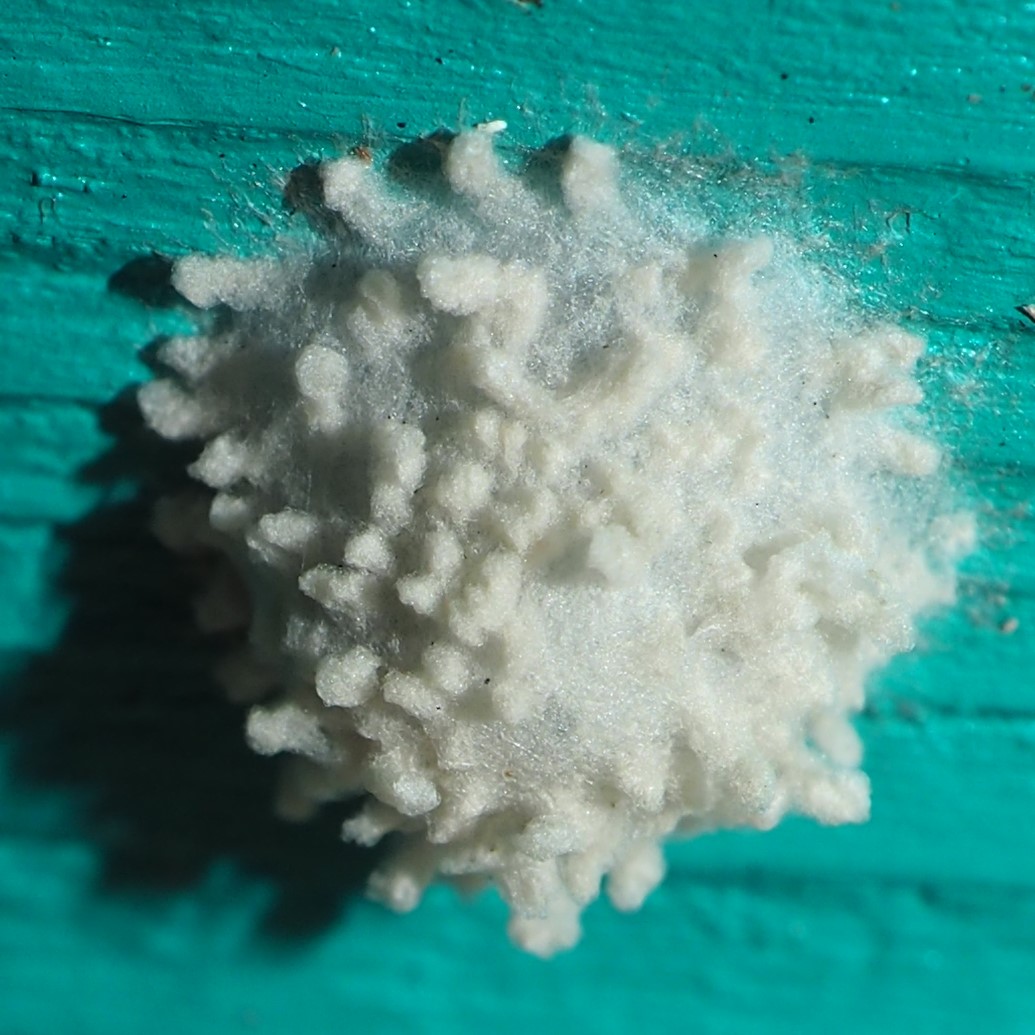
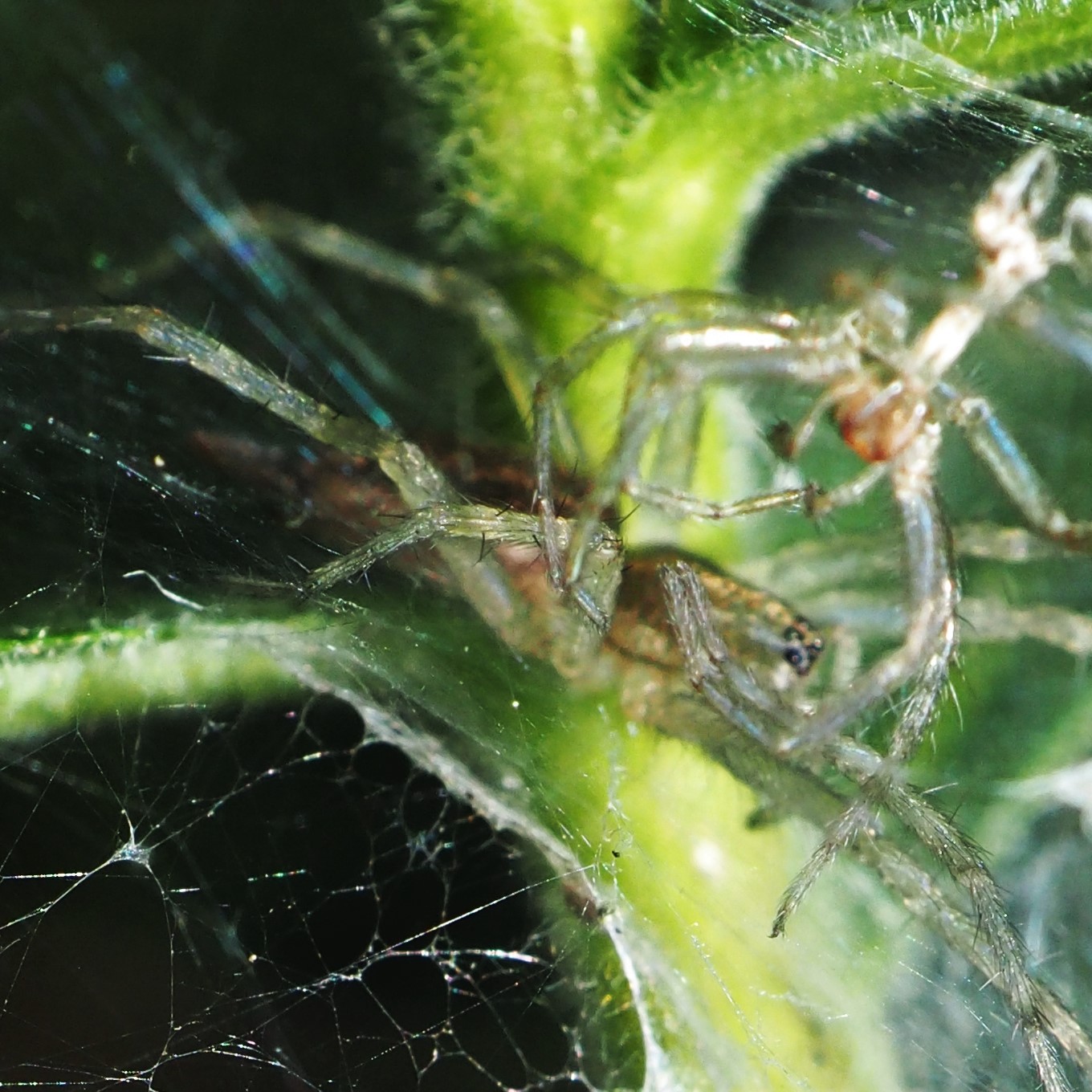
This mystery spider showed up yesterday for the first time ever (as I recall) around here. Matt and Rebecca concur on its being a Cobweb Spider and member of the genus Euryopis. Second is my old pal Mimetus puritanus. I love that "face"! Third is a not-so-great image of Leucauge venusta out in the woodsy part of the yard.
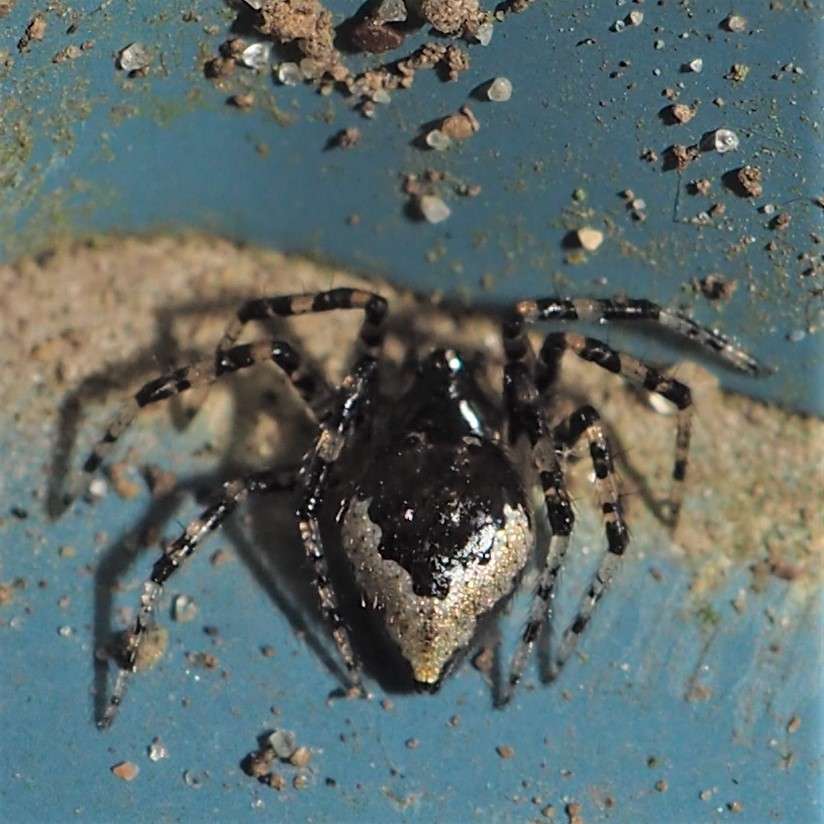

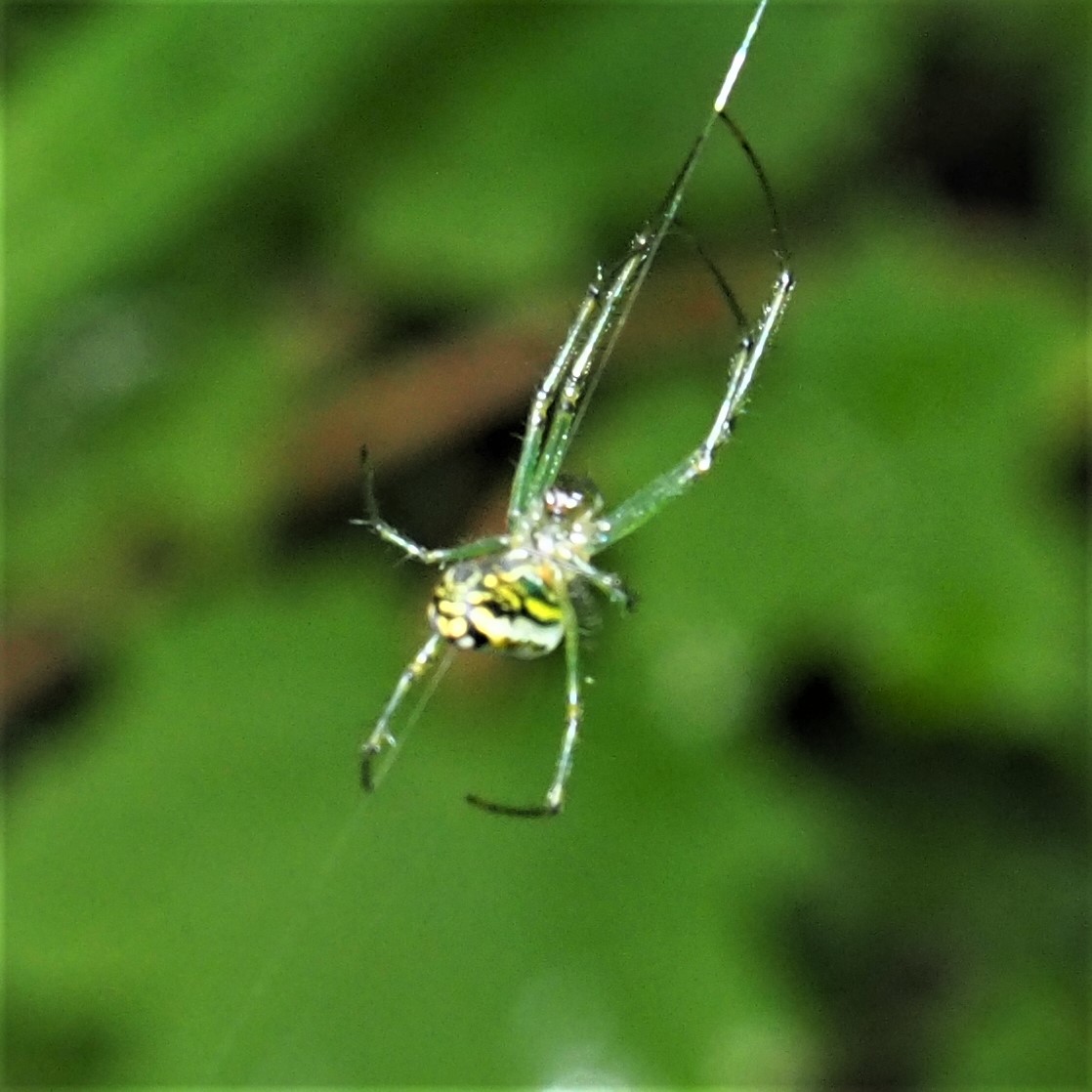
Down to the wasps. First and second, two kinds of Ichneumonid Wasp - see their ovipositors... Third, on the big Sun and Substance Hosta, a small wasp, possibly a spider-hunter. Here "possibly" means I have no idea at all. Sorry.
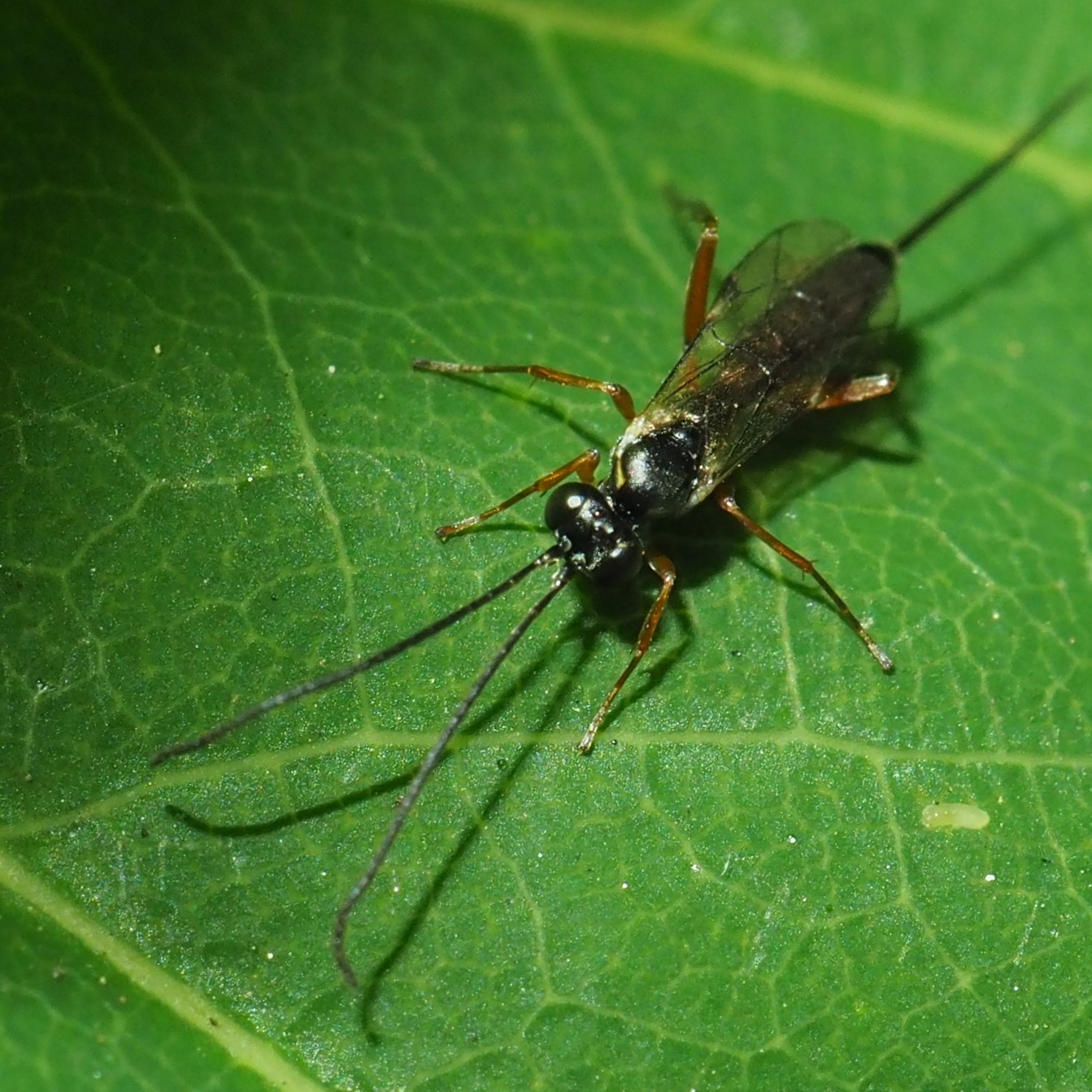
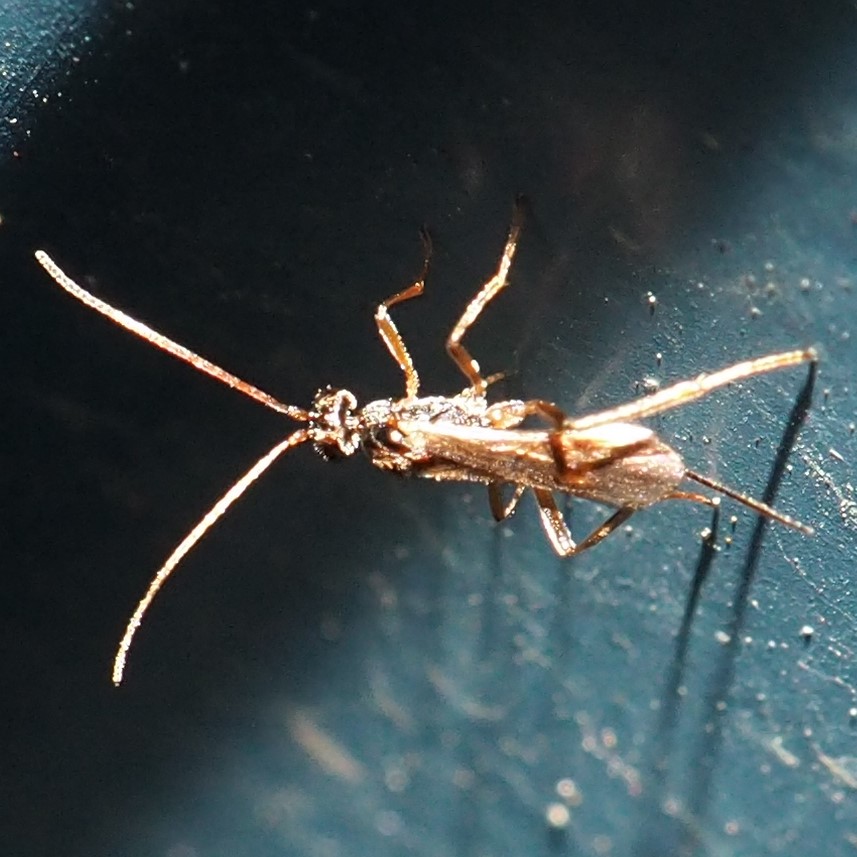

But it's a possible segue into the following show: I was minding my own business outside in the young asters when a good-sized wasp plopped itself onto the aster's tip. I had no idea of what it was doing since ordinarily such wasps notice me, say "eek" in Waspese, and flit away never to be seen again. But this one stayed and stayed and stayed. It looked like a female Polistes fuscatus (a dark-colored paper wasp). It wasn't until I had snapped 15 or so pictures and went in to crop them that I saw she seemed to be chewing on a green caterpillar. I had heard of caterpillar-eating wasps, but never seen one in the act. She seemed to be tasting or licking different parts of the caterpillar and moving on. I thought she would try to get a good hold on the caterpillar and carry it off to a nest. Later, I sent the whole set of photos to Jonathan Hoskins on iNat. He sent back the following:
I'm not particularly adept at caterpillar identification, but this behavior is quite familiar. The paper wasp is indeed Polistes fuscatus. Paper wasps do hunt caterpillars, but there's also a reason you normally won't see them haul back whole caterpillars. Instead, after capturing a caterpillar, the female begins to chew up parts of its prey. What's formed is a sort of ball of mashed caterpillar. It's these bits that are taken back to the nest and fed to the larvae. Also, the adults are actually incapable of digesting the solid protein, so the adults feed exclusively on nectar (flipping our human ideas of "baby food" versus "adult food" a bit on its head).
So it seems the wasp was actually gathering choice bits of caterpillar and carrying them back to the nest inside her, like a bird who coughs up food for her young. Thanks, Jonathan, for all this.
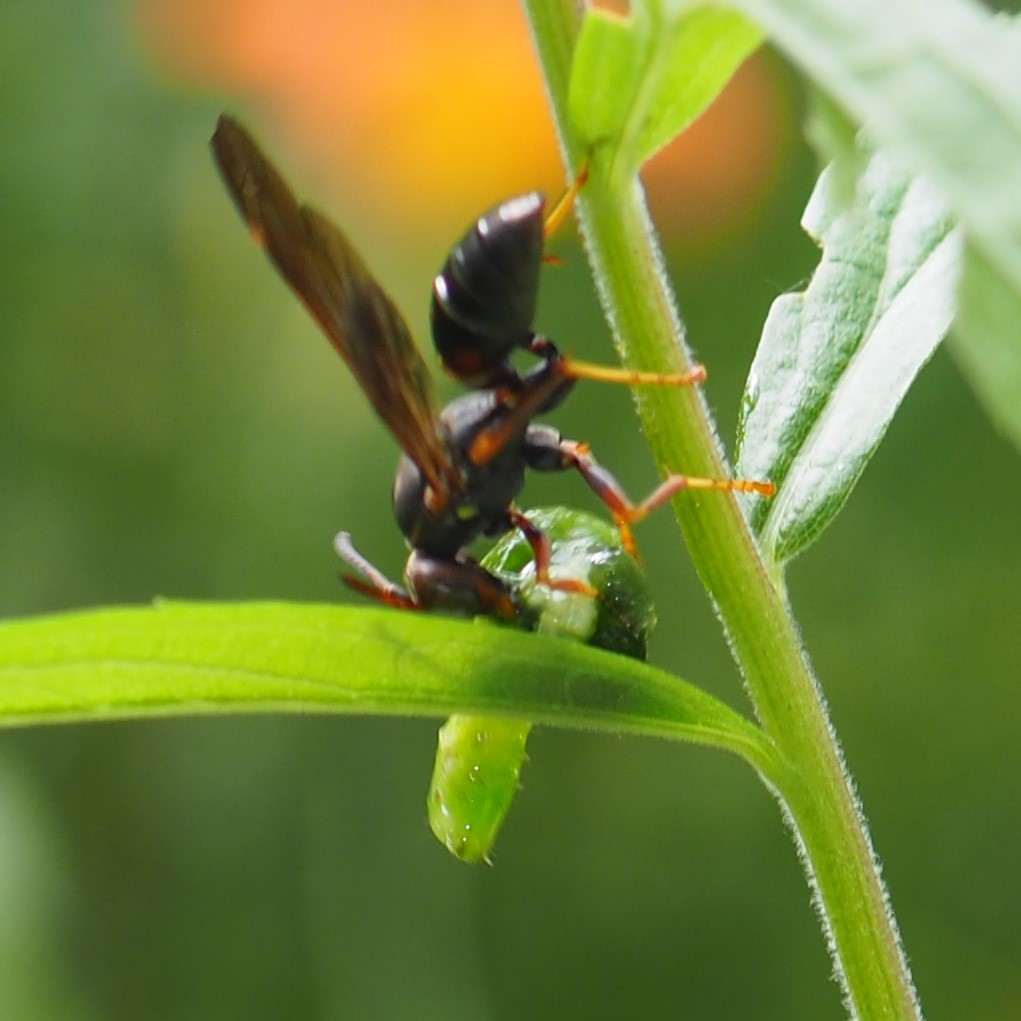
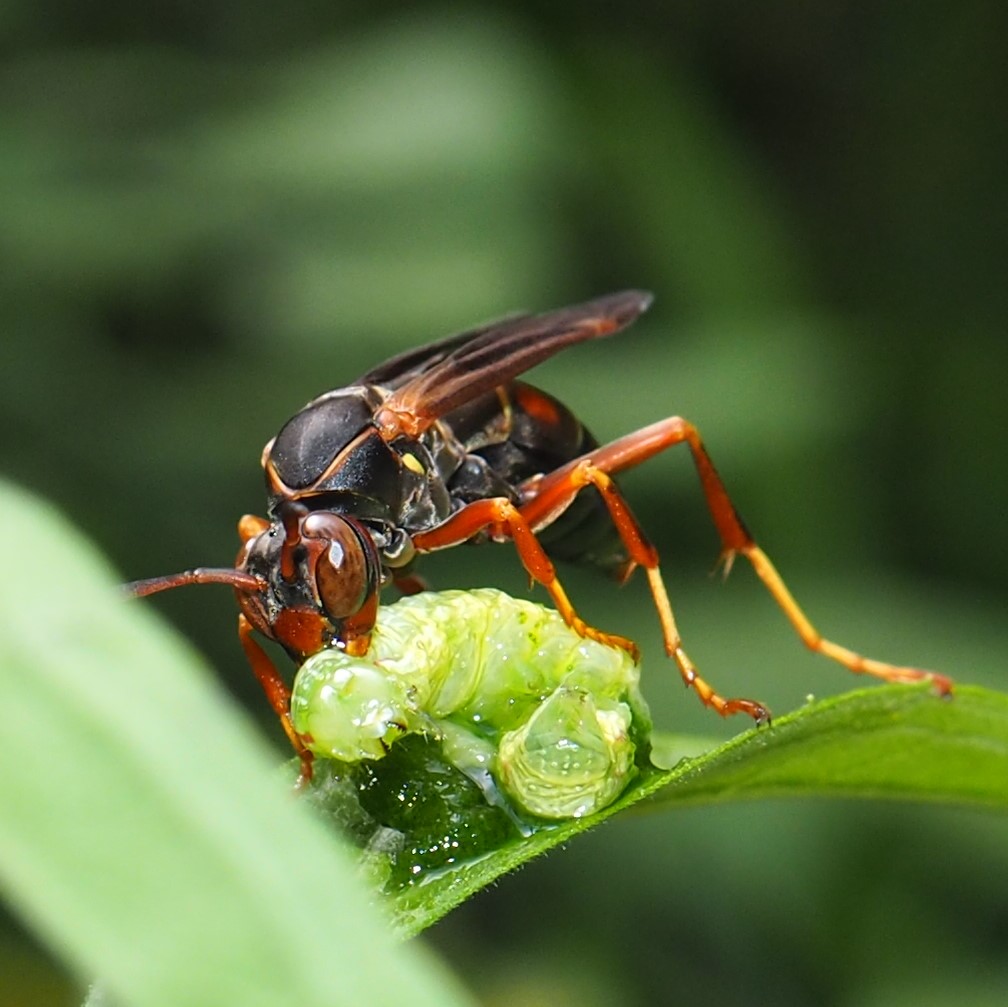
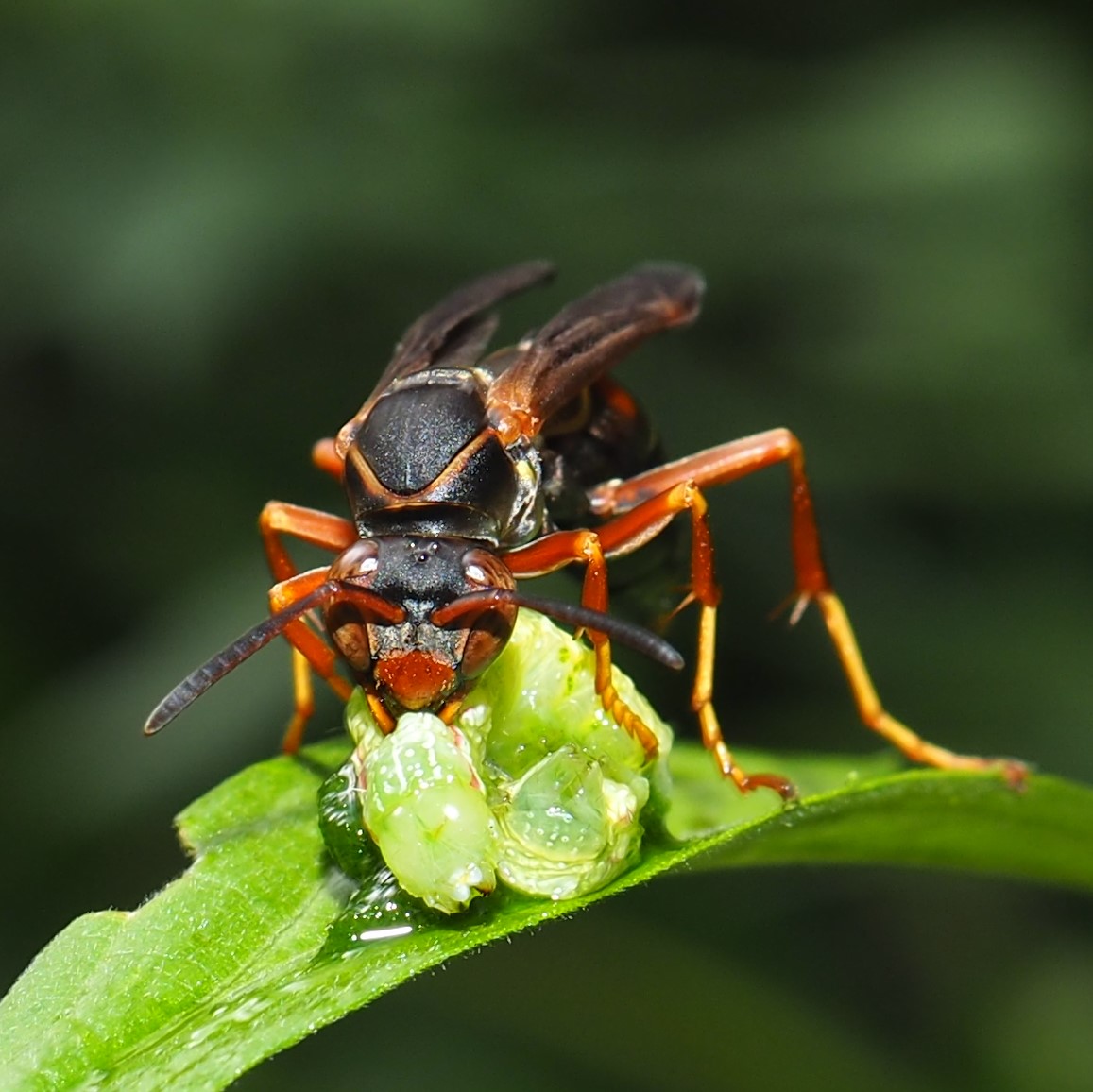
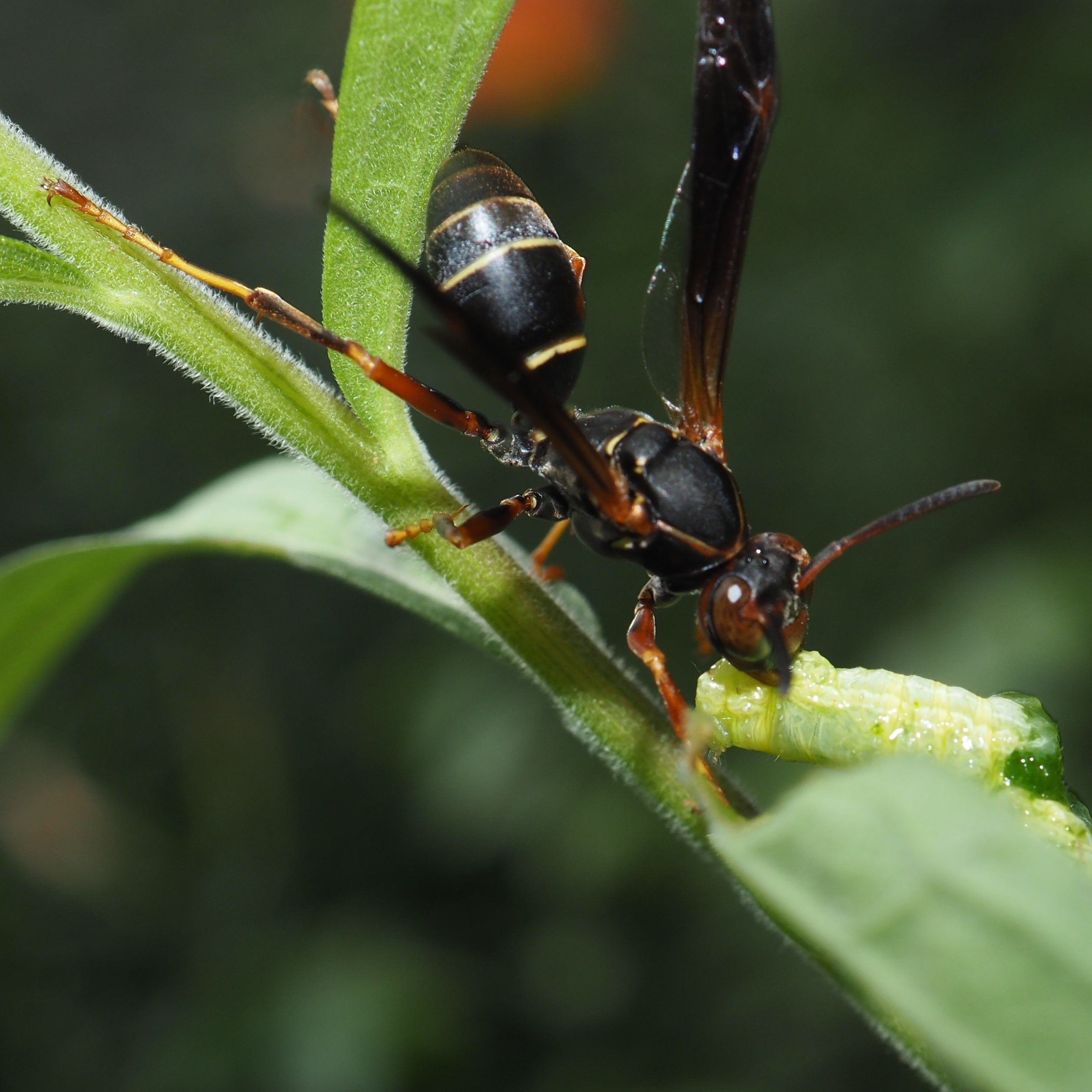
The next wasp, a Great Black Sphex, just happened to be celebrating the Week of Trumpetvine, which ties the Wasps to a little montage of pretty flowers. The flowers are falling fast but in the meantime are providing the hummingbirds with a feast.
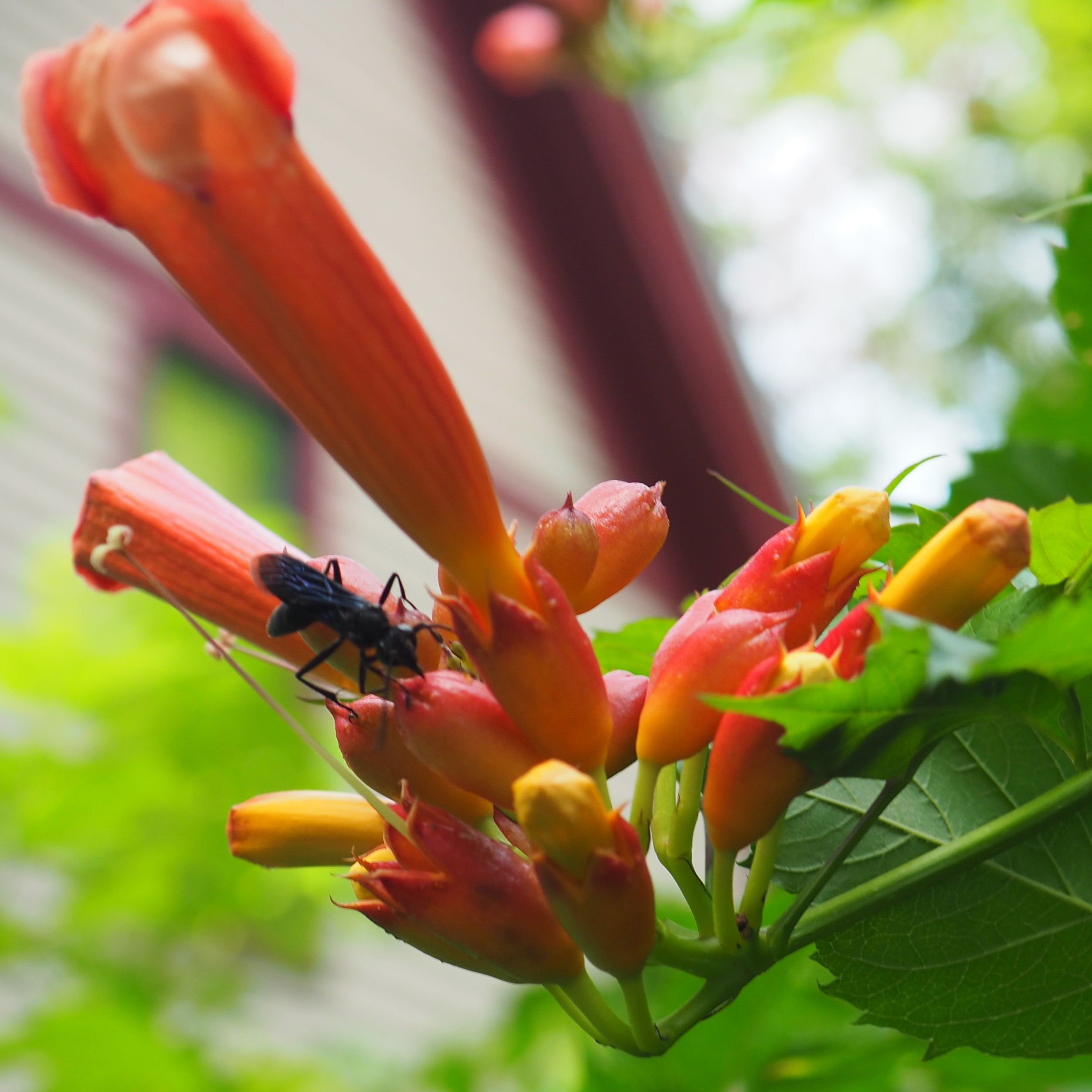
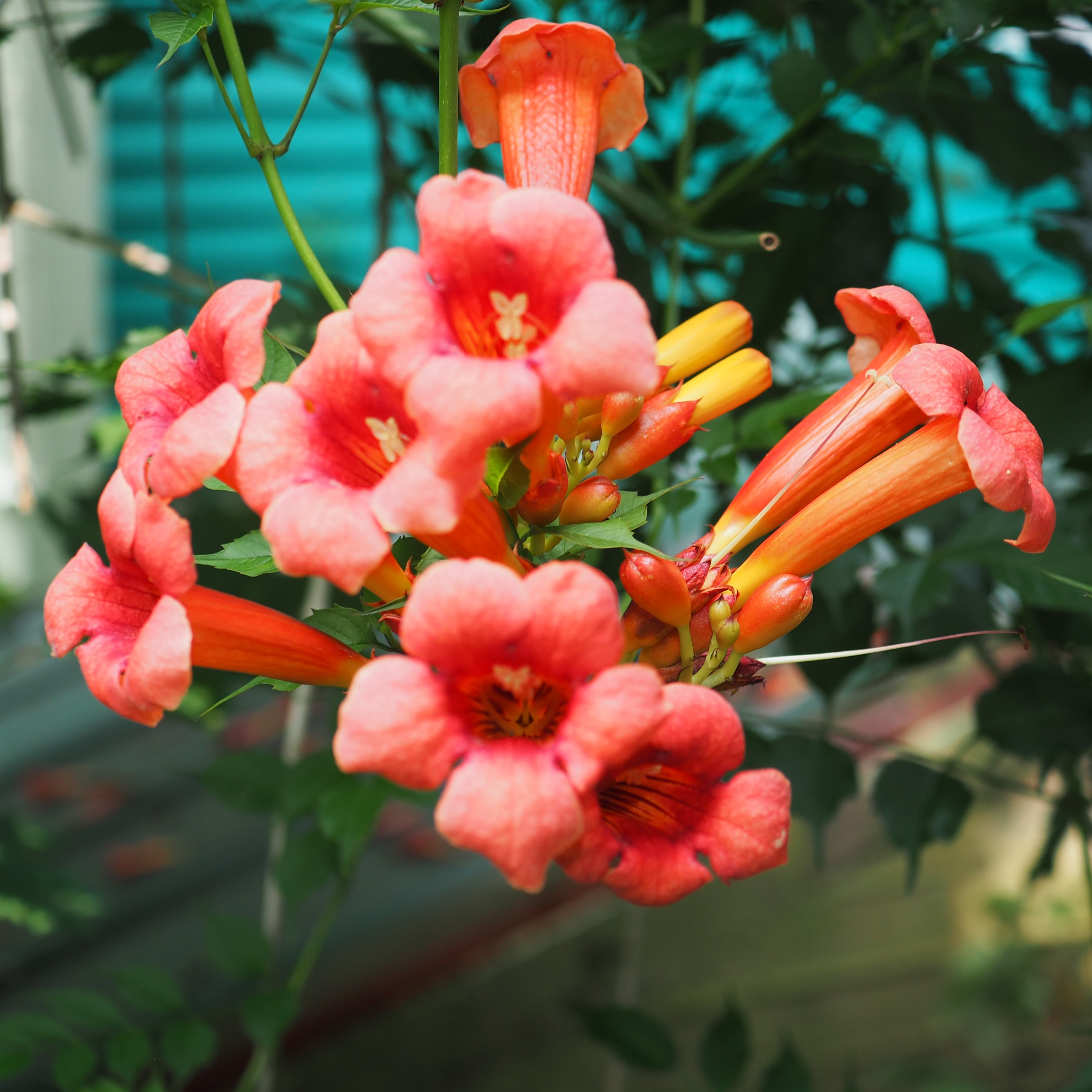
Next after the Trumpetvine flowers, the Day Lilies were sending out individual blossoms to cheer us through the Heat Wave. Here are the Common Day Lily, a hybrid Pardon Me, and another hybrid that I've forgotten the name of.
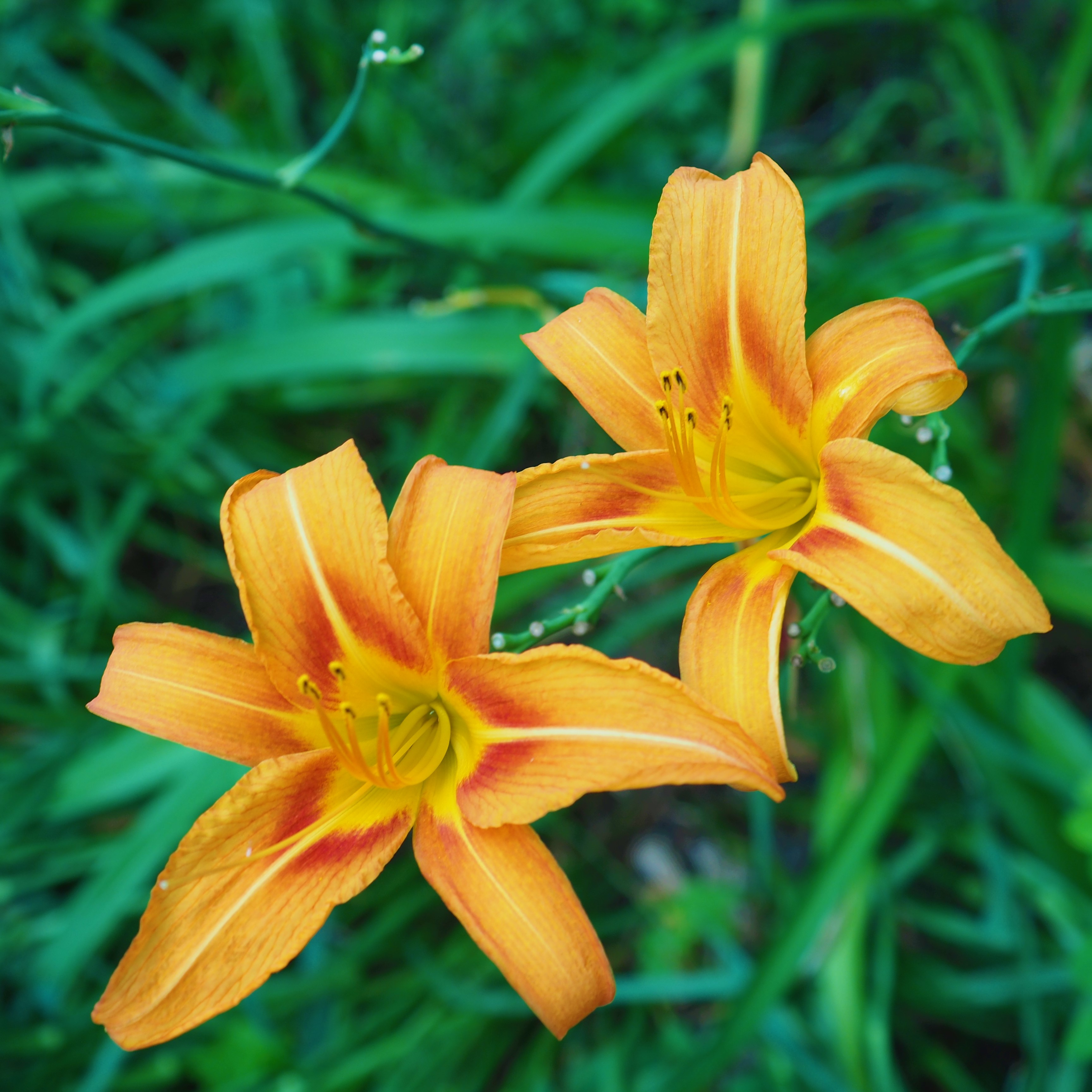
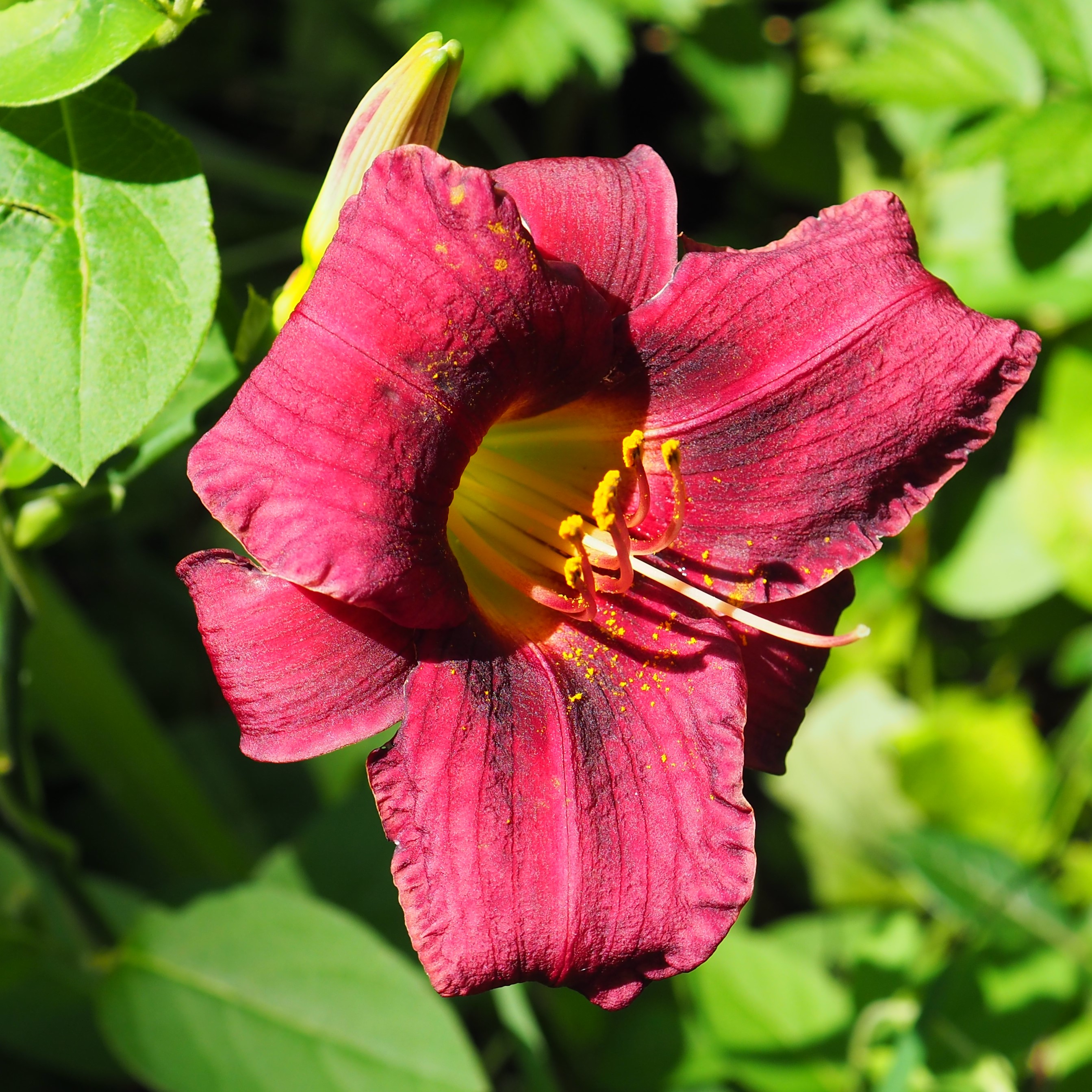
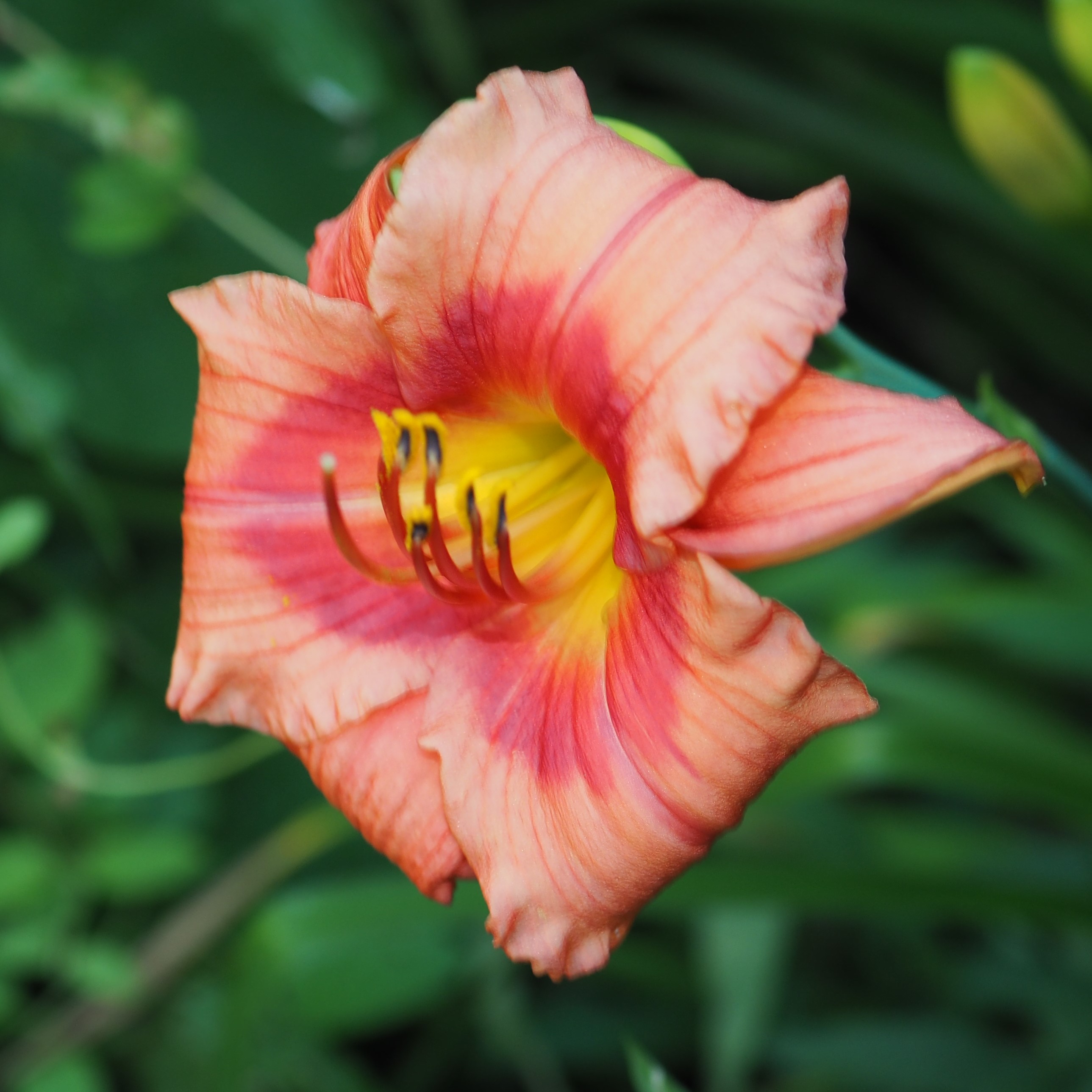
Here are some of the little jewels of the flower box on the deck railing. A Gazania and Zinnia; Pinks; and a pink Snapdragon.
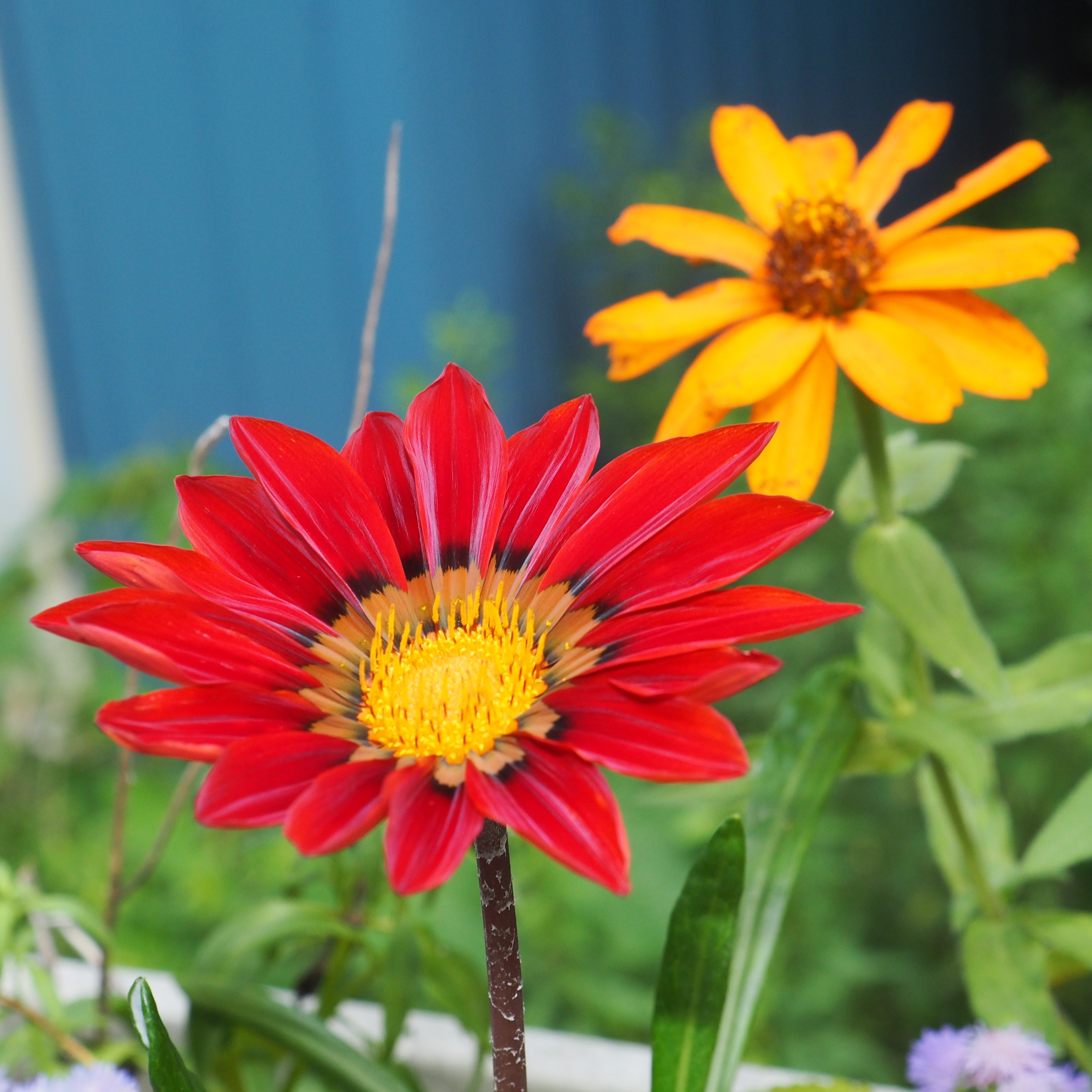
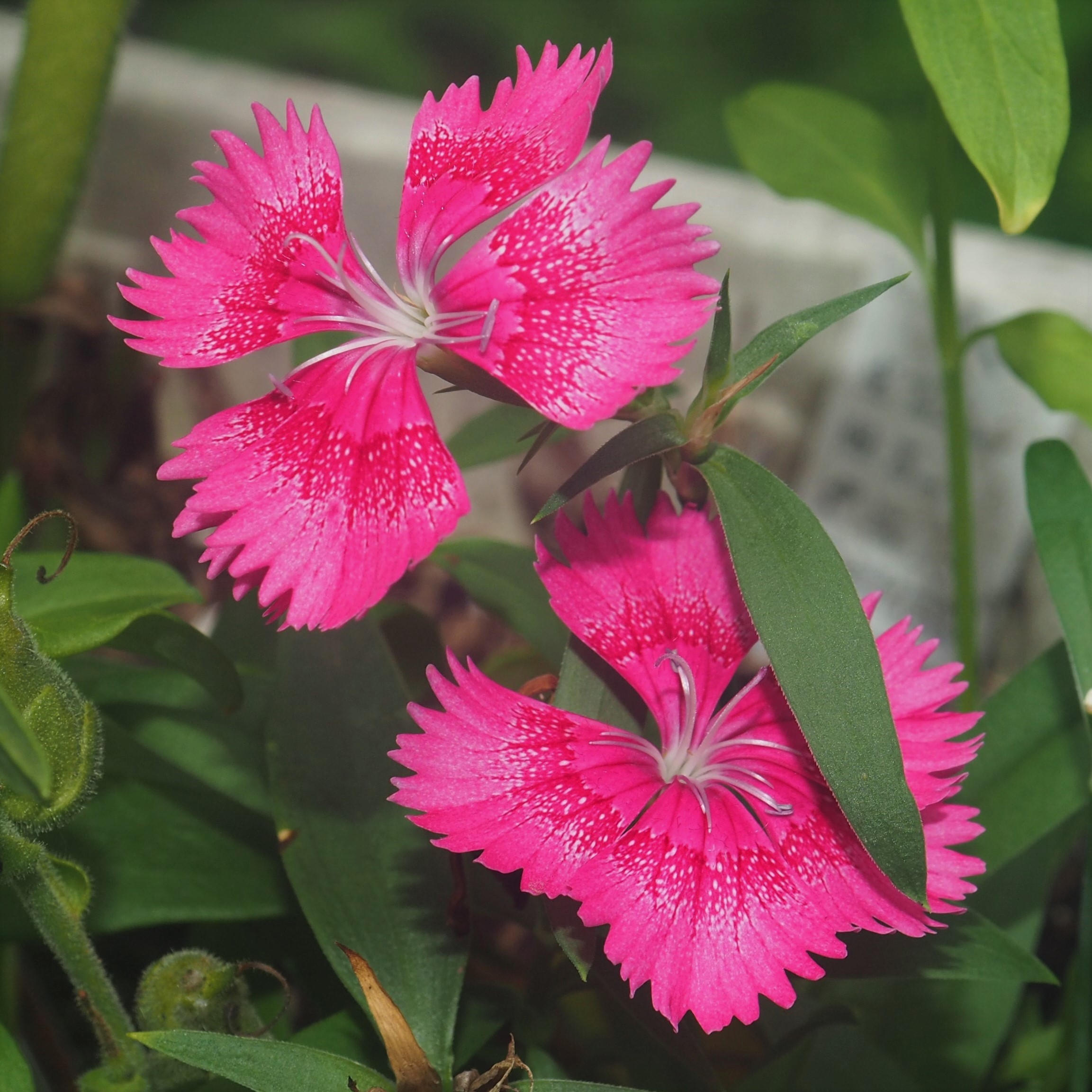
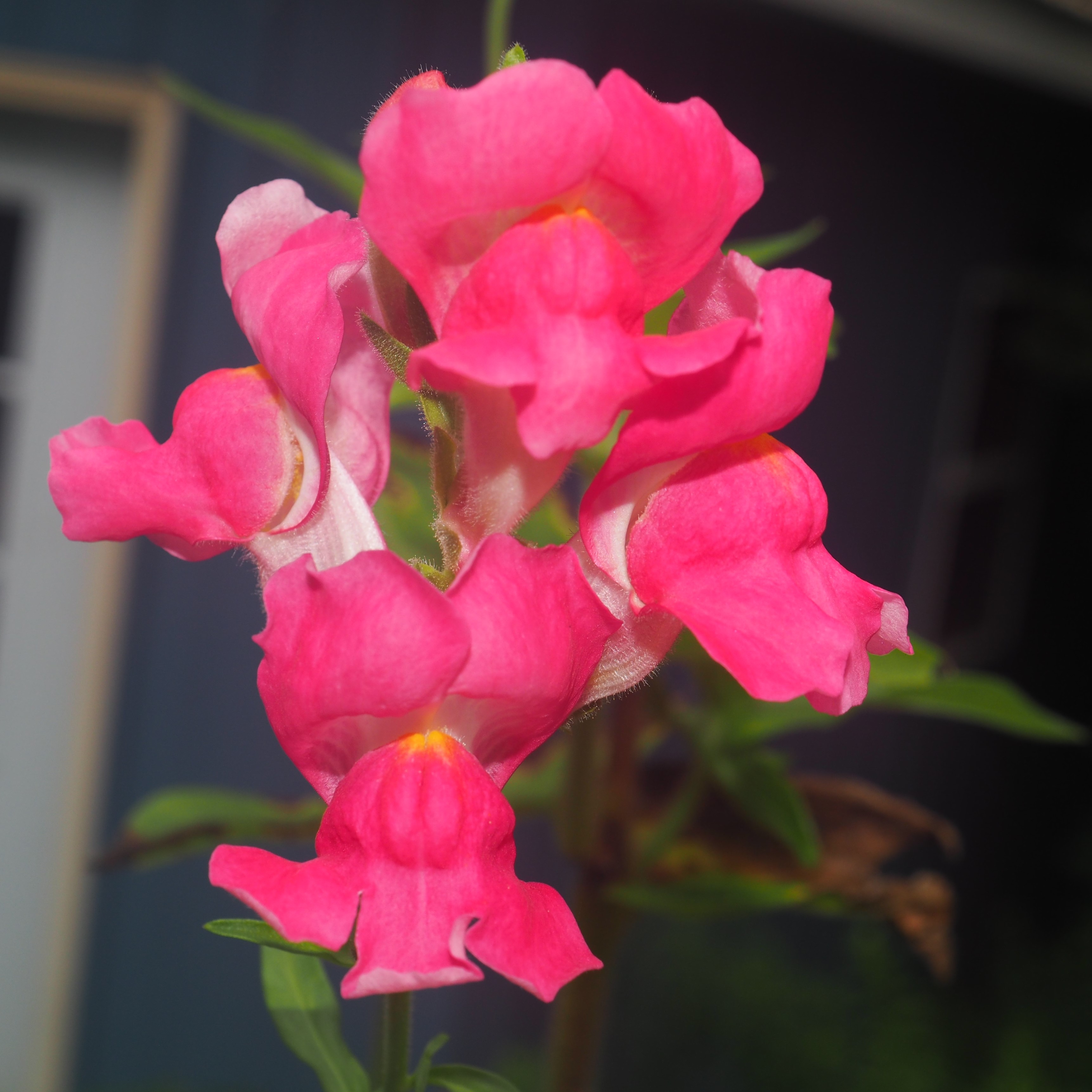
And another morph-scape - this time of a cooler time when the snow-drops were blooming!

This heat wave was supposed to be a two-day affair. Let's hope so. The city set up a number of cooling centers so that people could come in and get cooled off and rehydrated. For everyone out there, let's try to weather this and hope that those in charge of energy will move quickly to more sustainable forms and that we all can breathe a sigh of relief and anticipation of an extended future in a world the way it is "supposed" to be.
Love, Martha
Back to July 14, 2019
Forward to July 28, 2019
Back to main menu
copyright Martha O'Kennon 2019




























































































.jpg)























